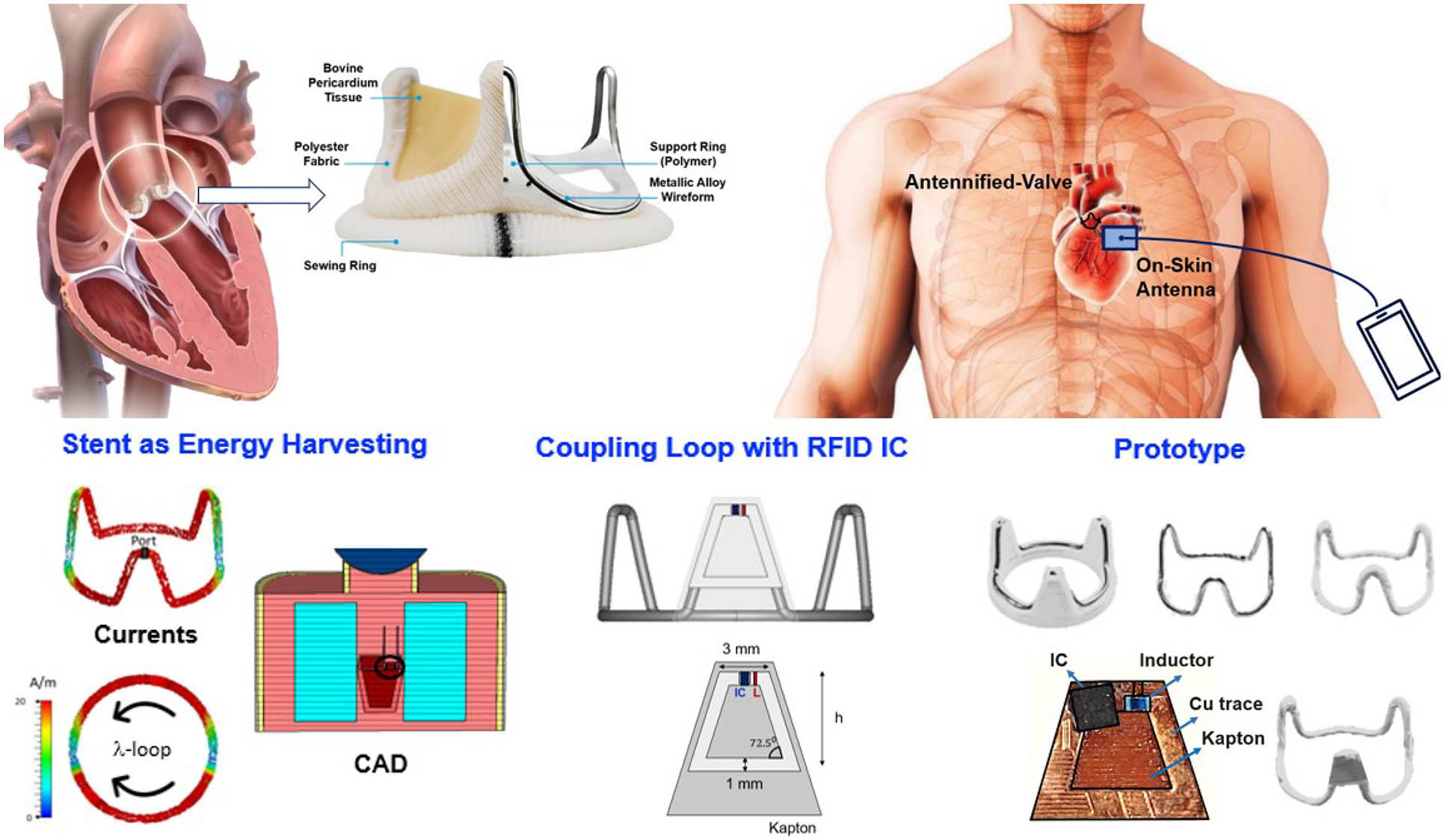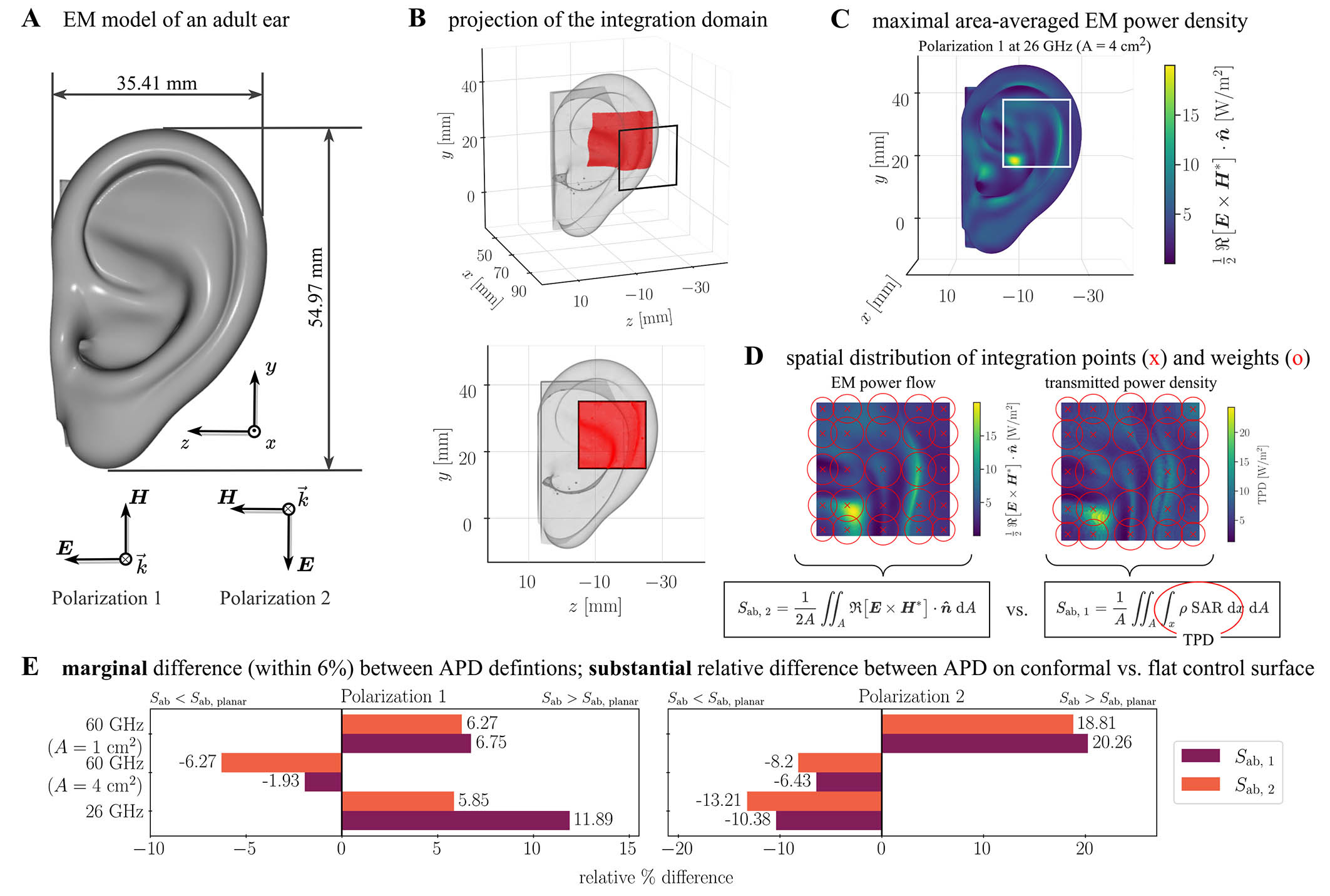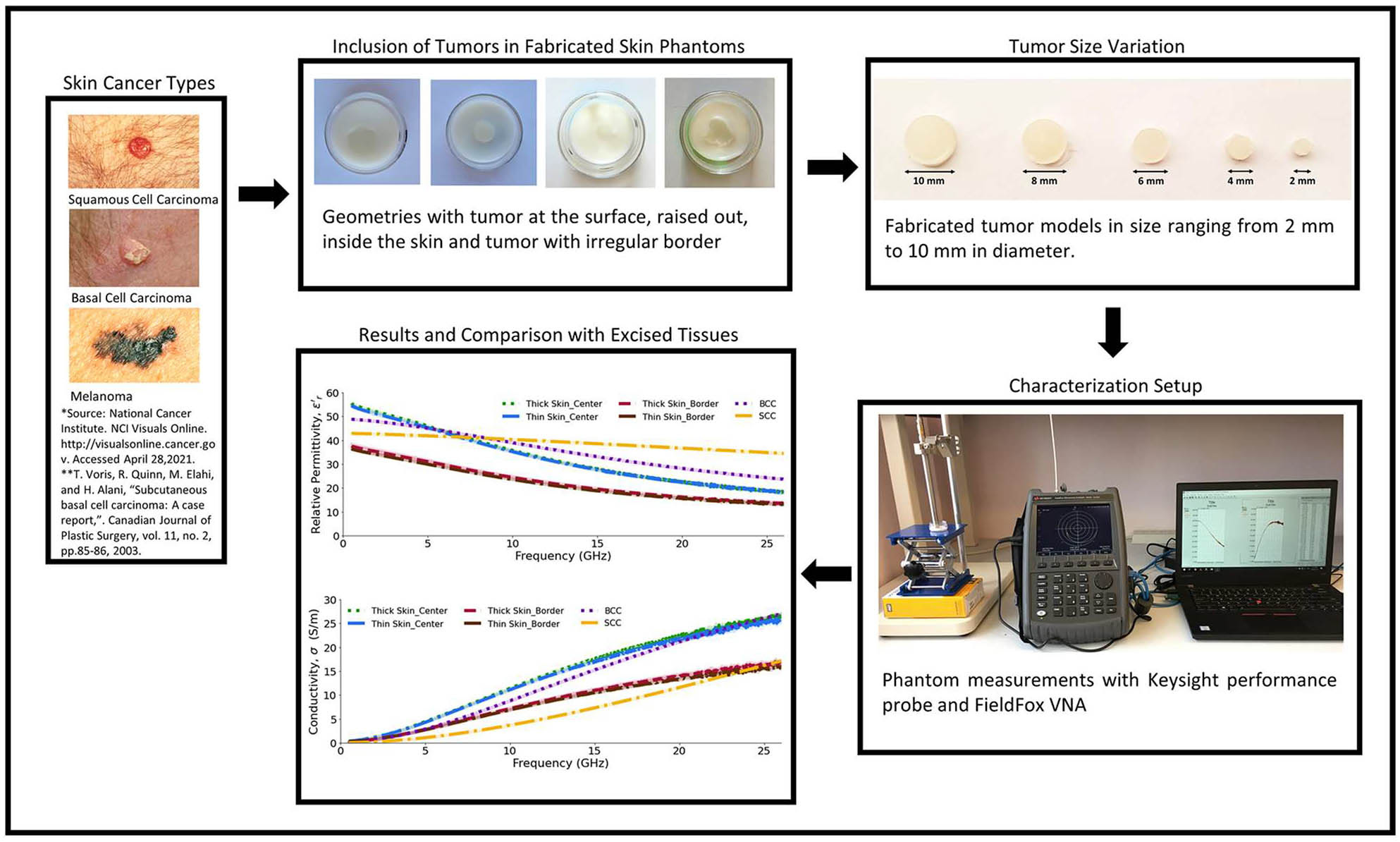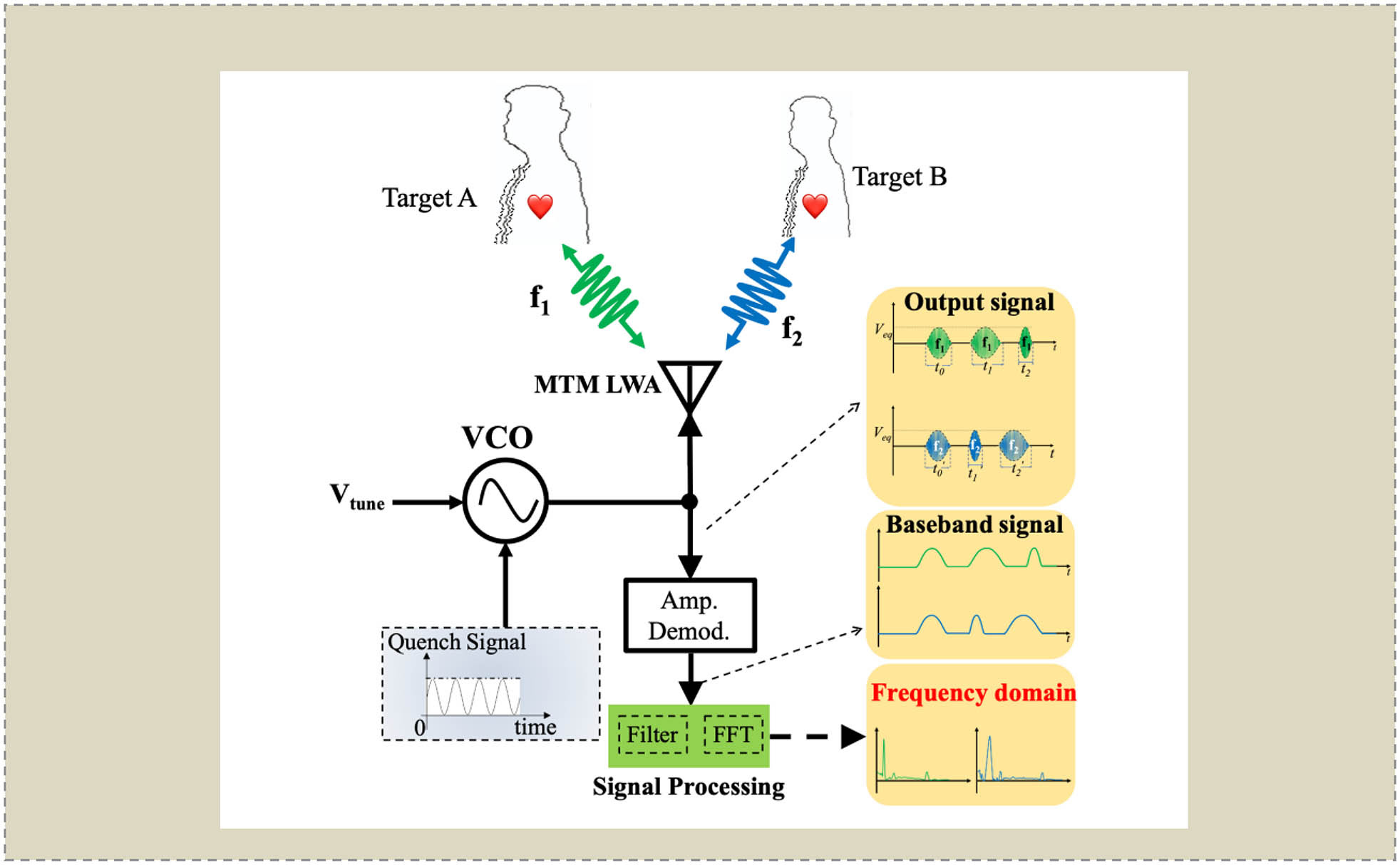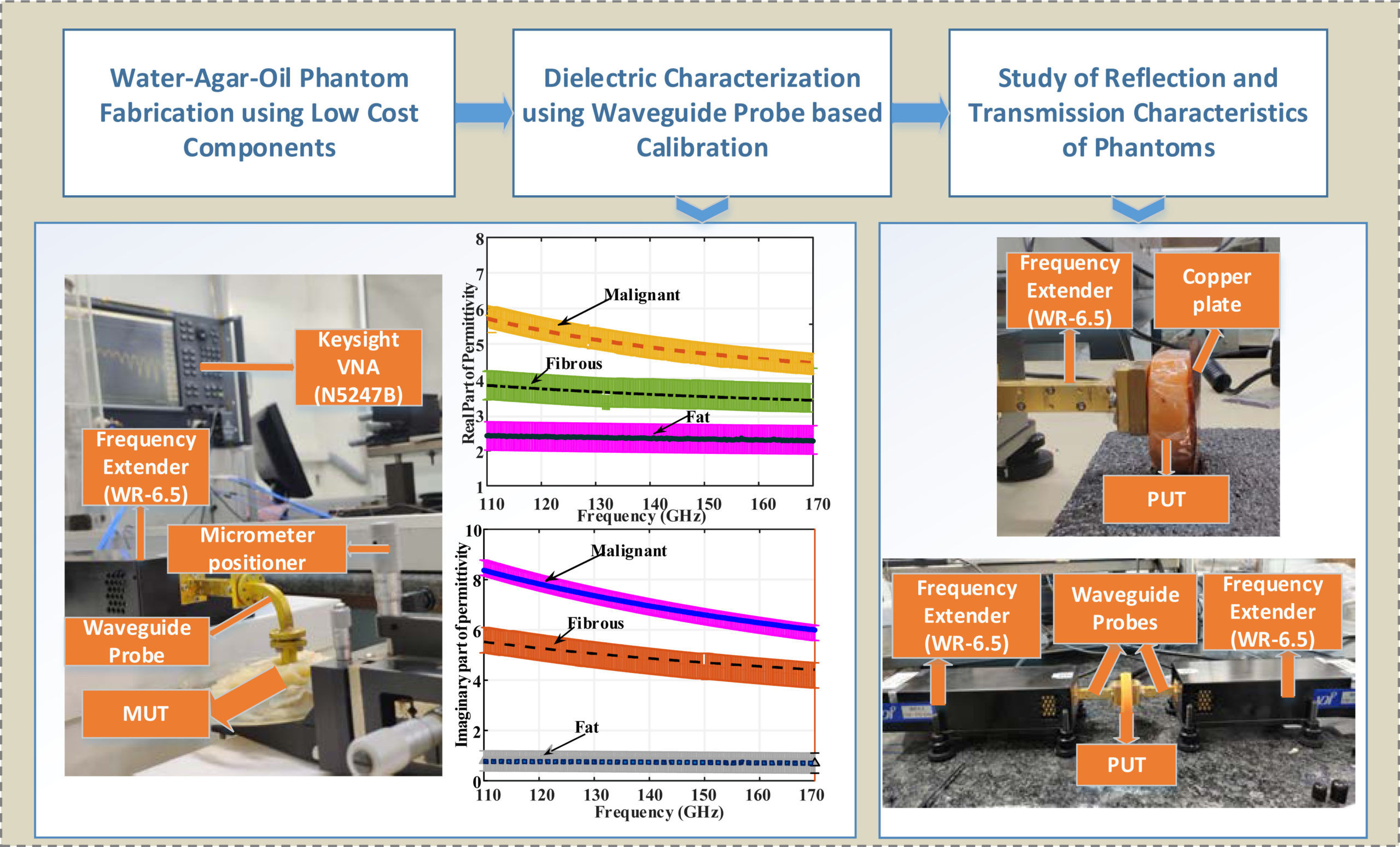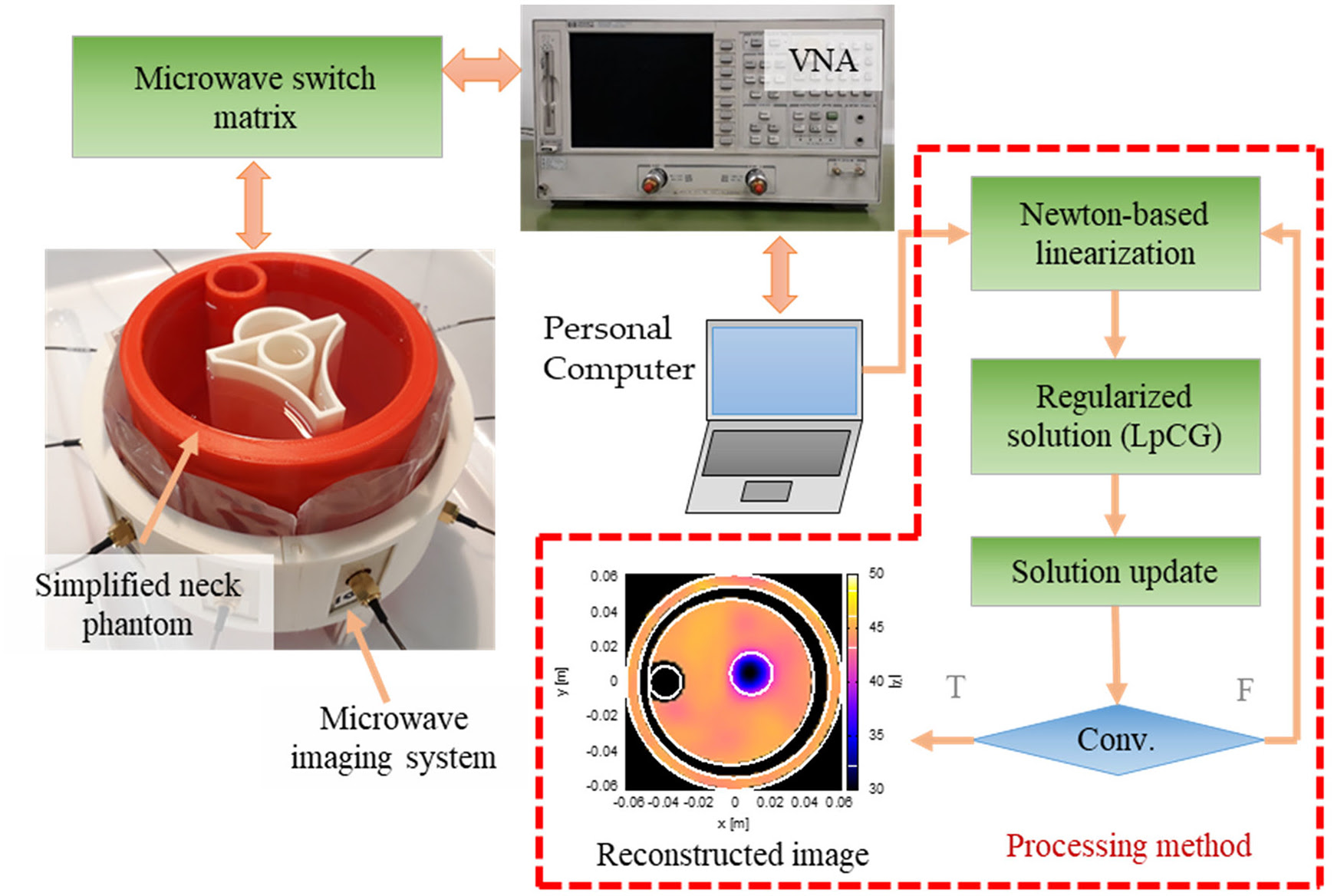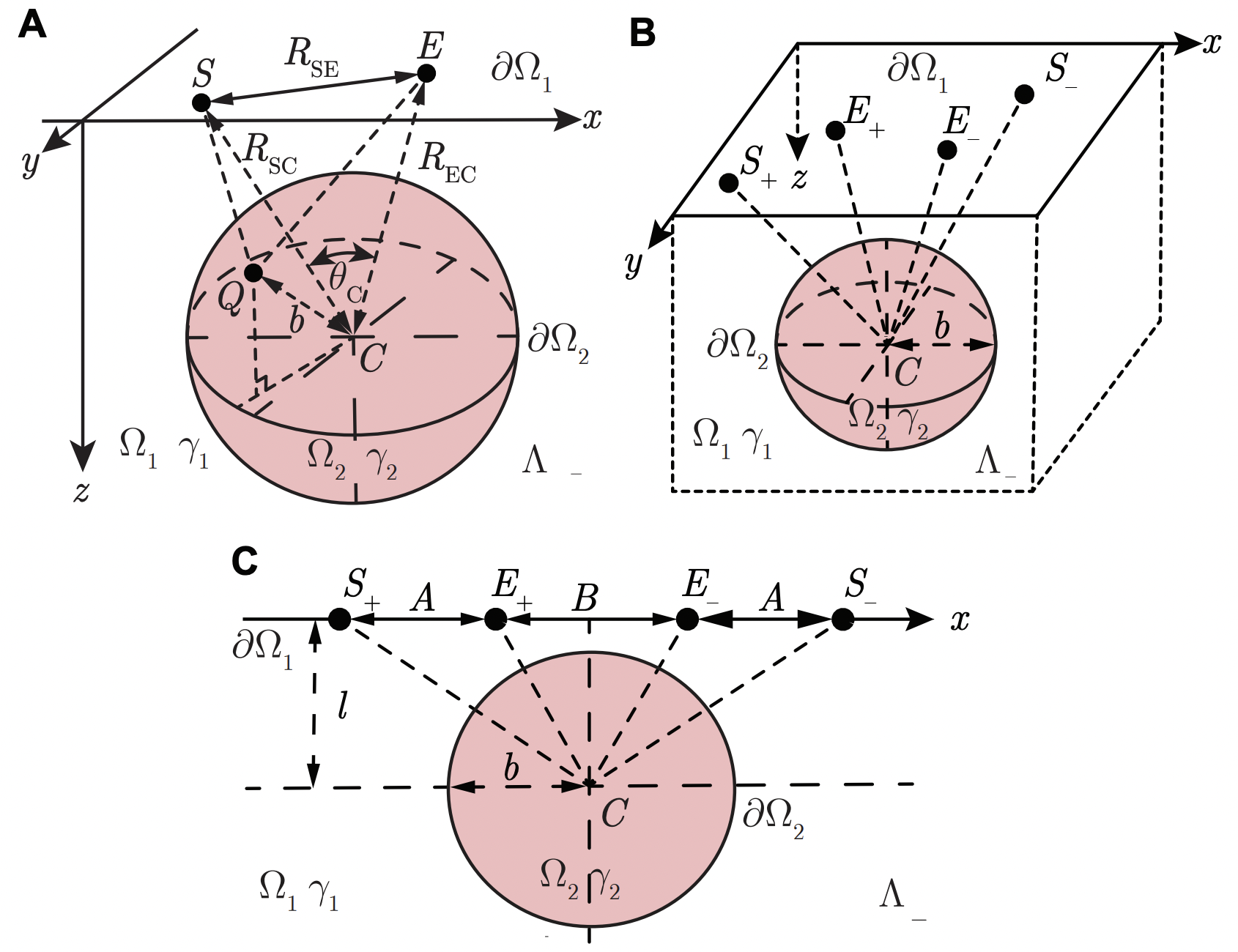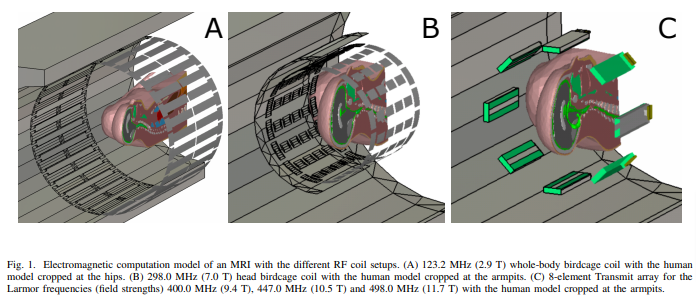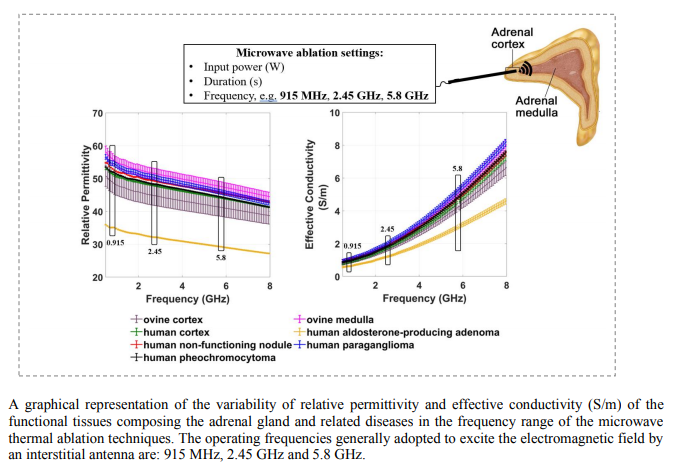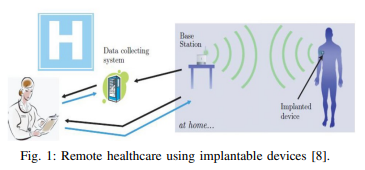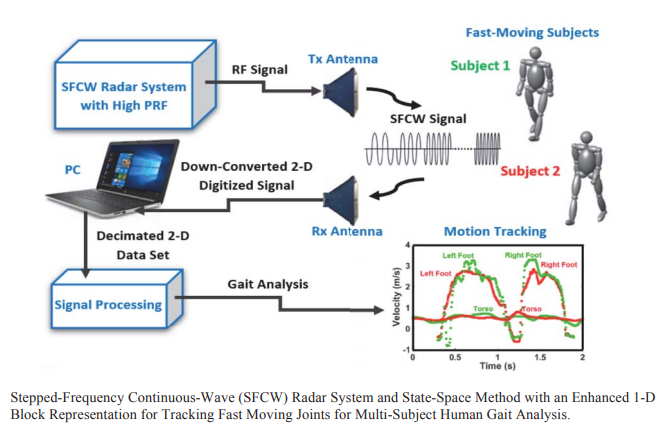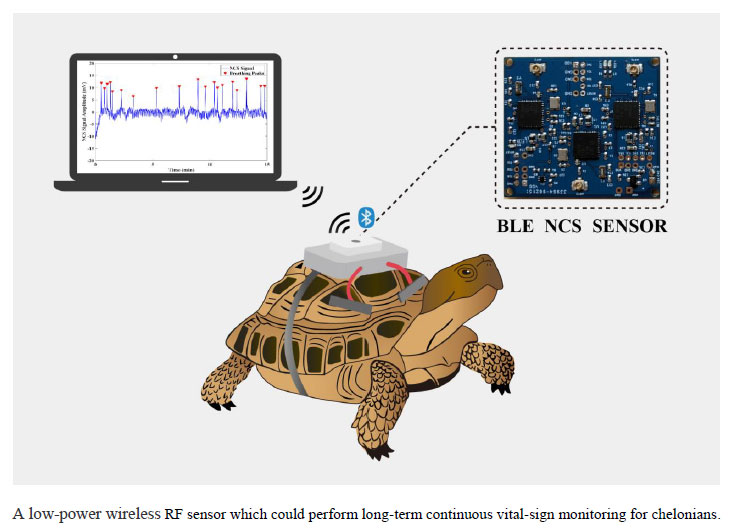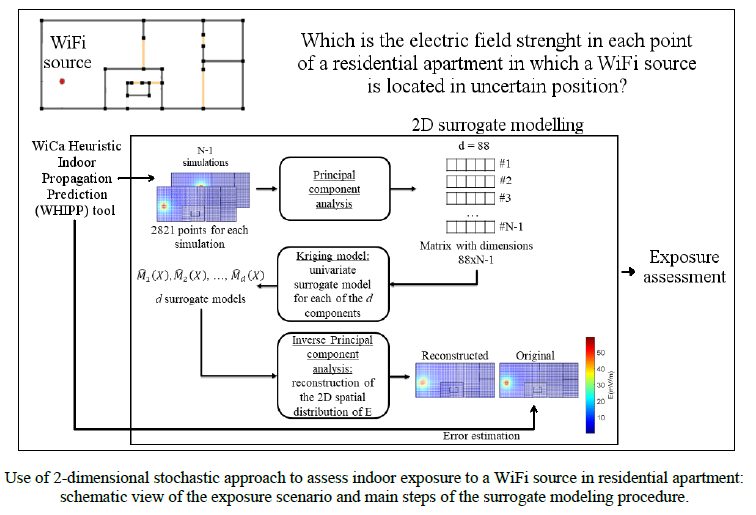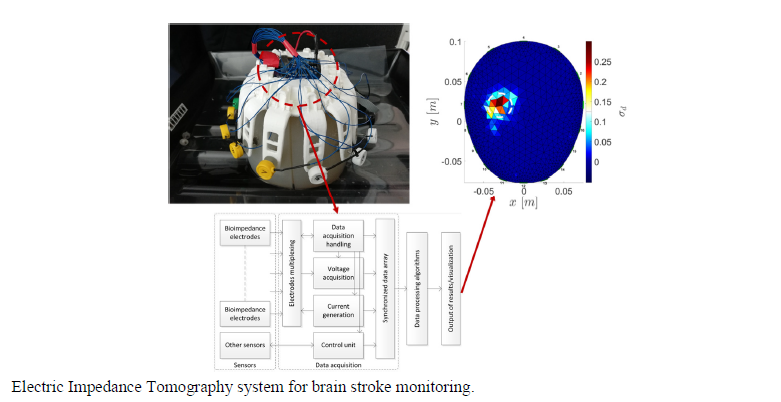3.2
Impact Factor
0.00118
Eigenfactor
0.706
Article Influence Score
5.8
CiteScore

IEEE Journal of Electromagnetics RF and Microwaves in Medicine and Biology has been selected for inclusion in the Web of Science
Feature Article
Review on Advanced Short-Range Multimode Continuous-Wave Radar Architectures for Healthcare Applications
José-María Muñoz-Ferreras, Zhengyu Peng, Roberto Gómez-GarcíaChangzhi Li
- Short-range radars can be effectively applied in biomedical/healthcare environments, such as monitoring of
vital signs or detection of fall incidents of elderly at home. - Advanced short-range multi-mode radars have improved features for biomedical/healthcare applications.
Applications of advanced short-range multi-mode radars range from monitoring of vital signs to humanaware
localization scenarios. - The proposed hybridizations of the Doppler and frequency-modulated continuous-wave (FMCW) operation
modes leads to minimum-hardware radar architectures with advanced features for biomedical/healthcare
applications. - Theoretical analyses and simulations for the Doppler-plus-FMCW, multi-FMCW, and tone-ranging-inspired
radar architectures are provided
Original Research Paper
Heart ID: Biometric Identification Using Wearable MIMO RF Heart Sensors
Thomas B. Conroy, Xiaonan Hui, Pragya Sharma, Edwin C. Kan.
Biometric identification (ID) has become increasingly prevalent in the digital era. Static biometric methods, such as fingerprint and facial recognition are widely accepted, yet generally vulnerable to targeted presentation attacks.
Original Research Paper
Wireless and Zero-Power Trans-Cardiac Link With Antennified Aortic Valve Bioprostheses
Federica Naccarata, Cecilia Occhiuzzi, Roberto Verzicco, Gaetano Marrocco.
Valvular heart diseases are one of the most common complications in the cardiovascular system.
Original Research Paper
Wirelessly Powered 3-D Printed Headstage Based Neural Stimulation System for Optogenetic Neuromodulation Application
Dipon K. Biswas, Nabanita Saha, Ifana Mahbub.
This work presents a miniaturized wireless power transfer (WPT) system integrated with a neuromodulation headstage for duty-cycled optical stimulation of freely moving rodents.
Original Research Paper
Implementation of Thinned Array Synthesis in Hyperthermia Treatment Planning of 434 MHz Phased Array Breast Applicator Using Genetic Algorithm
Divya Baskaran, Kavitha Arunachalam.
Genetic algorithm-based array thinning technique is investigated in this paper to study the performance of our 18-element 434 MHz phased array breast applicator when driven by reduced number of active antennas.
Original Research Paper
Area-Averaged Transmitted and Absorbed Power Density on a Realistic Ear Model
Ante Lojić Kapetanović, Giulia Sacco, Dragan Poljak, Maxim Zhadobov.
At millimeter waves (MMW), the current state of research in computational dosimetry is mainly relying on flat-surface tissue-equivalent models to simplify the exposure assessment by disregarding geometrical irregularities characteristic of conformal surfaces on realistic models.
Original Research Paper
Attachable DC Coil Array for Improved Functional MRI at 7T
Shuxian Qu, Yang Gao, Jie Zhao, Yi Sun, Xiaotong Zhang.
The prefrontal cortex (PFC) has long been concerned as an important part in cognitive control of neuroscience field.
Original Research Paper
Asymmetric Tapered Solenoid Designs for Halbach-Based Portable Magnetic Resonance Imaging
Meena Rajendran, Shao Ying Huang.
Halbach array is a popular permanent magnet array used in head dedicated portable MRI. It supplies transversal main magnetic field ( B0 ), and it works well with solenoid RF coils when B0 is homogeneous. The B0 a Halbach array supplies is low.
Original Research Paper
An Image Post-Processing Approach Based on Fully Dense U-Net for Microwave Induced Thermo-Acoustic Tomography
Jian Song, Tao Shen, Qingwang Wang.
In microwave induced thermo-acoustic tomography (TAT), circular scanning sensor array is the general signal acquiring mode. For higher sensitivity, large aperture detectors are widely preferred in the real TAT imaging system.
Original Research Paper
Whole-Body Exposure System Using Horn Antennas With Dielectric Lens at 28 GHz
Sachiko Kodera, Norika Miura, Yinliang Diao, Miyako Inoue, Takashi Hikage, Kenji Taguchi, Hiroshi Masuda, Akimasa Hirata.
In the revised international guidelines and standard for human protection from electromagnetic fields,
Original Research Paper
Detection of Sodium Ion Imbalance in Human Body Fluids Using an Improved RF Sensor
Apala Banerjee, Prakrati Azad, M Jaleel Akhtar.
A novel radio frequency (RF) sensor is designed, developed, and tested to determine sodium ion imbalance in human body fluids.
Original Research Paper
An Investigation on Conductive Intracardiac Communication Dynamic Channel Gain During the Cardiac Cycle for Leadless Pacemakers
Liting Chen, Yiming Liu, Zhizhang Chen, Sio Hang Pun, Mang I. Vai, Yueming Gao.
In galvanic coupling conductive intracardiac communication(GCCIC) of the leadless pacemakers, the electrical signal transmitted directly through the myocardium and blood is inevitably affected by the cardiac cycle.
Original Research Paper
A Study of Handgrip Force Prediction Scheme Based on Electrical Impedance Myography
Pan Xu, Xudong Yang, Wei Ma; Wanting He, Željka Lučev Vasić, Mario Cifrek, Yueming Gao.
Handgrip force prediction is widely used in the rehabilitation of the arm and prosthetic control.
Original Research Paper
Development and Characterization of Skin Phantoms at Microwave Frequencies
Jasmine Boparai, Milica Popović.
Realistic tissue-mimicking phantoms are required for experimental evaluation and validation of microwave reflectometry prototype systems for skin cancer detection before performing any tests on human subjects.
Original Research Paper
Towards Brain MRI Adaptable to Head Size: Bowing RF Coil Phased Arrays
William Mathieu, Milica Popović, Reza Farivar.
Purpose: Bowing phased arrays allow for the idea of hybrid rigid-flexible RF coils, in which parts of a larger phased array are broken up into rigid sub-arrays, connected by flexible coil elements, permitting coils to expend or shrink to match different human head sizes.
Original Research Paper
Simultaneous Monitoring of Multiple People’s Vital Sign Leveraging a Single Phased-MIMO Radar
Zhaoyi Xu, Cong Shi, Tianfang Zhang, Shuping Li, Yichao Yuan, Chung-Tse Michael Wu, Yingying Chen, Athina Petropulu.
Vital sign monitoring plays a critical role in tracking the physiological state of people and enabling various health-related applications (e.g., recommending a change of lifestyle, examining the risk of diseases).
Original Research Paper
The Influence of Electrode Properties on Induced Voltage Gradient Along the Rat Optic Nerve
Javad Paknahad, Manjunath Machnoor, Gianluca Lazzi, Kimberly Kinga Gokoffski.
Significantinterest exists in the potential of electric field (EF) application to be developed into a technology to direct neuronal regeneration.
Original Research Paper
Electromagnetic Method for Steatotic Liver Detection Using Contrast in Effective Dispersive Permittivity
Azin S. Janani, Sasan Ahdi Rezaeieh, Amin Darvazehban, Mojtaba Khosravi-Farsani, Shelley E. Keating, Amin M. Abbosh.
Hepatic steatosis is one of the most prevalent chronic liver conditions. Traditional non-invasive imaging modalities are not suitable for observation and treatment evaluation of this disease.
Original Research Paper
Implantable Radio Frequency Powered Gastric Electrical Stimulator
Souvik Dubey, J.-C. Chiao.
Gastric electrical stimulation (GES) is an effective alternative to long-term dietary and medicinal treatment for gastroparesis and other stomach motility disorders.
Original Research Paper
Small Coil Antenna With Magnetic Sheet for Implantable Medical Device Communication in 40–60 MHz Band
Yutaro Yokoyama, Kazuyuki Saito, Koichi Ito.
Low-frequency communication is one of the best ways to reduce signal attenuation from the human body, although slow data rates make stable wireless communication within the human body difficult.
Original Research Paper
Development of a Coherent Model for Radiometric Core Body Temperature Sensing
Katrina Tisdale, Alexandra Bringer, Asimina Kiourti.
This paper examines the utility of a wideband, physics-based model to determine human core body or brain temperature via microwave radiometry.
Original Research Paper
Channel Characteristics Analysis of Galvanic Coupling Intra-Body Communication
Jia Wen Li, Xi Mei Chen, Booma Devi Sekar, Chan Tong Lam, Min Du, Peng Un Mak, Mang I Vai, Yue Ming Gao, Sio Hang Pun.
Intra-Body Communication (IBC), which employs the human body as the channel to transmit health informatics, is a potential approach for connecting wearable and implantable devices.
Original Research Paper
Deep Learning Enhanced Contrast Source Inversion for Microwave Breast Cancer Imaging Modality
Umita Hirose, Peixian Zhu, Shouhei Kidera.
This study presents a deep-learning (DL) based contrast source inversion (CSI) algorithm for quantitative microwave breast cancer imaging.
Original Research Paper
Externally Triggered Drug Delivery Techniques Using Micro and Nanoparticles
Mohammed Saad Shaikh, Robert Donnan, Rostyslav Dubrovka.
The need for sustained and better-controlled drug administration has led to development of novel drug delivery systems.
Original Research Paper
A Sensitivity-Enhanced Sensor Based on Zeroth-Order Resonance for Liquid Characterization
Xinyue Song, Sen Yan.
A high-sensitivity planar microfluidic sensor is proposed in this paper based on composite left/right-handed transmission line (CRLH TL).
Original Research Paper
The Importance of Sensor Placement During the Measurement of RF Heating of Implants in MRI
Jenny Wooldridge, Daniel Bownds.
This study investigates the importance of accurate sensor placement when assessing implant safety during MRI scans experimentally.
Original Research Paper
Sub-Terahertz Waveguide Iris Probe for Ex-Vivo Breast Cancer Tumor Margin Assessment
Priyansha Kaurav, Shiban Koul, Ananjan Basu.
In breast-conserving operations, terahertz imaging (THz) has become a popular method of assessing tumor margins intraoperatively.
Original Research Paper
Exposure Levels Induced in Curved Body Parts at mmWaves
Giulia Sacco, Zain Haider, Maxim Zhadobov.
This study investigates the impact of the ear and the finger curvature on the electromagnetic (EM) power absorption and resulting heating to quantify the potential enhancement of the induced exposure levels compared to commonly used planar tissue models.
Original Research Paper
Experimental Evidence of Radio Frequency Radiation From Staphylococcus aureus Biofilms
Menglou Rao, Kamal Sarabandi, John Soukar, Nicholas A. Kotov, J. Scott VanEpps.
This paper reports the first successful detection of electromagnetic (EM) radiation from Staphylococcus aureus biofilms in the gigahertz (GHz) frequency range.
Original Research Paper
Remote Vital Sign Monitoring With Reduced Random Body Swaying Motion Using Heartbeat Template and Wavelet Transform Based on Constellation Diagrams
Toan K. Vo Dai, Yao Yu, Paul Theilmann, Aly E. Fathy, Ozlem Kilic.
Remote vital signs monitoring using millimeter-wave (mmWave) sensors has gained lots of attention because of their contactless, portable advantages.
Original Research Paper
Multi-Band Parity-Time-Symmetric Wireless Power Transfer Systems for ISM-Band Bio-Implantable Applications
Zhilu Ye, Minye Yang, Pai-Yen Chen.
Modern wireless implantable medical devices face escalating demand for lightweight and low-cost wireless solutions exploited to wake up sensors and transfer data.
Original Research Paper
Millimeter-Wave Radar Cane: A Blind People Aid With Moving Human Recognition Capabilities
Emanuele Cardillo, Changzhi Li, Alina Caddemi.
This contribution presents an electronic travel aid for blind and visually-impaired people based on a millimeter wave radar and a traditional white-cane.
Original Research Paper
Graph Attention Network in Microwave Imaging for Anomaly Localization
A. Al-Saffar, L. Guo; A. Abbosh.
So far, numerous learned models have been pressed to use in microwave imaging problems. These models however, are oblivious to the imaging geometry.
Original Research Paper
Near-Field Circular Array for the Transcutaneous Telemetry of UHF RFID-Based Implantable Medical Devices
Carolina Miozzi, Giovanni Saggio, Emanuele Gruppioni, Gaetano Marrocco.
Wireless communication with Implantable Medical Devices (IMDs) based on Radiofrequency Identification in the UHF band suffers from the constraints on the maximum power absorbed by the body tissues.
Original Research Paper
Correlation Radiometry for Subcutaneous Temperature Measurements
Rob Streeter, Gabriel Santamaria Botello, Kaitlin Hall, Zoya Popović.
This paper addresses microwave radiometry for passive noninvasive subcutaneous temperature measurements at a few centimeter depth.
Original Research Paper
Super-Regenerative Oscillator Integrated Metamaterial Leaky Wave Antenna for Multi-Target Vital Sign and Motion Detection
Yichao Yuan, Chung-Tse Michael Wu.
A new kind of metamaterial (MTM) leaky wave antenna (LWA) integrated with a super-regenerative oscillator (SRO) architecture is proposed for the first time. As a proof of concept,
Original Research Paper
Respiratory Activity Monitoring by a Wearable 5.8 GHz SILO With Energy Harvesting Capabilities
Giacomo Paolini, Mazen Shanawani, Diego Masotti, Dominique M. M.-P. Schreurs,
Alessandra Costanzo.
In this work, the design and the realization of a pocket-size sensor for breath rate detection are presented.
Original Research Paper
Improved Sensing Volume Estimates for Coaxial Probes to Measure the Dielectric Properties of Inhomogeneous Tissues
Ali Farshkaran, Emily Porter.
Accurate knowledge of the dielectric properties of biological tissues is fundamental for the design of electromagnetic medical devices.
Original Research Paper
Narrowband Microwave Breast Screening: Repeatability Study With Phantoms
Leonardo Fortaleza, Milica Popović.
This work presents experimental results on measurement variability obtained with carbon-based tissue-mimicking phantoms using a prototype microwave breast cancer detection system on narrowband (2012.5 – 2100 MHz),
Original Research Paper
Ultra-Wideband Impedance Spectroscopy of the Nucleus in a Live Cell
Xiaotian Du, Caroline Ferguson, Xiao Ma, Xuanhong Cheng, James C. M. Hwang.
This paper describes the first application of a double-shell model in ultra-wideband impedance spectroscopy of a live cell.
Original Research Paper
Use of a Set of Wearable Dielectric Scatterers to Improve Electromagnetic Transmission for a Body Power Transfer System
Ludovica Tognolatti, Cristina Ponti, Giuseppe Schettini.
In this paper we present an accurate analytical solution of the scattering of a plane-wave by dielectric cylinders placed above a multilayered medium.
Original Research Paper
Response Sharpening of Resonant Sensors for Potential Applications in Blood Glucose Monitoring
Giovanni Buonanno, Adriana Brancaccio, Sandra Costanzo, Raffaele Solimene.
A method to improve the response resolution of microwave biomedical resonant sensors is discussed.
Original Research Paper
A Fractal-RFID Based Sensing Tattoo for the Early Detection of Cracks in Implanted Metal Prostheses
Simone Nappi, Luca Gargale, Federica Naccarata, Pier Paolo Valentini, Gaetano Marrocco.
Manufacturing faults and aging are the main causes for micro-crack generation in implanted prostheses.
Original Research Paper
A Systematic Method to Explore Radio-Frequency Non-Thermal Effect on the Growth of Saccharomyces Cerevisiae
D. Ye, G. Cutter, T. P. Caldwell, S. W. Harcum, P. Wang.
Radio frequency (RF) non-thermal (NT) bio-effects have been a subject of debate and attracted significant interests due to potential health risks or beneficial applications.
Original Research Paper
Electromagnetic Characterization of Breast Tissue Phantoms in D-Band Regime
Priyansha Kaurav, Shiban Kishen Koul, Ananjan Basu.
The potential of higher band millimeter waves to characterize different types of breast tissues based on the dielectric contrast between normal and malignant tissues has been reported.
Original Research Paper
Classification of Alzheimer’s Disease Using RF Signals and Machine Learning
Imran M. Saied, Tughrul Arslan, Siddharthan Chandran.
Objectives: Alzheimer’s disease is one of the most fastest growing and costly diseases in the world today.
Original Research Paper
Towards the Robust and Effective Design of Hyperthermic Devices: Improvement of a Patch Antenna for the Case Study of Abdominal Rhabdomyosarcoma With 3D Perfusion
Matteo Bruno Lodi, Giacomo Muntoni, Alessandro Ruggeri, Alessandro Fanti, Giorgio Montisci, Giuseppe Mazzarella.
This work addresses the challenge of deriving a simple but effective multi-physic model useful for the design and simulation of hyperthermia devices for ensuring a high-quality treatment.
Original Research Paper
Hyperthermia Treatment Planning: Clinical Application and Ongoing Developments
H. Petra Kok, Johannes Crezee.
Hyperthermia is a proven clinical anti-cancer treatment, used in combination with radiotherapy and/or chemotherapy.
Original Research Paper
On the Optimal Matching Medium and the Working Frequency in Deep Pelvic Hyperthermia
Gennaro G. Bellizzi, Kemal Sumser, Martina Teresa Bevacqua.
A necessary step when designing electromagnetic-based medical devices is the choice of an optimal matching medium,
Original Research Paper
On the Design of a Microwave Imaging System to Monitor Thermal Ablation of Liver Tumors
Mengchu Wang, Lorenzo Crocco, Marta Cavagnaro.
Thermal ablation treatment of cancer is increasingly adopted in the clinical practice, being minimally invasive and highly specific.
Original Research Paper
Assessing a Microwave Imaging System for Brain Stroke Monitoring via High Fidelity Numerical Modelling
David O. Rodriguez-Duarte, Jorge A. Tobón Vasquez, Rosa Scapaticci, Lorenzo Crocco, Francesca Vipiana.
This work presents the outcomes of a numerical analysis based on a 3-D high fidelity model of a realistic microwave imaging system for the clinical follow-up of brain stroke.
Original Research Paper
Millimeter-Waves Breast Cancer Imaging via Inverse Scattering Techniques
Martina Teresa Bevacqua, Simona Di Meo, Lorenzo Crocco, Tommaso Isernia, Marco Pasian.
Breast cancer represents one of the main reasons of death among women.
Original Research Paper
Dielectric Characterization of Ex Vivo Ovine and Human Adrenal Glands for Microwave Thermal Ablation Applications
Anna Bottiglieri, Atif Shahzad, Padraig Donlon, Michael Conall Dennedy, Aoife Lowery, Martin O’Halloran, Laura Farina.
Historically, adrenal glands diseases causing hypertension, such as Primary Aldosteronism (PA), have been treated through pharmacotherapy or surgical resection.
Original Research Paper
Impact of Textile on Electromagnetic Power and Heating in Near-Surface Tissues at 26 GHz and 60 GHz
Giulia Sacco, Stefano Pisa, Maxim Zhadobov.
With the development of 5th generation (5G) networks the operating frequencies have been progressively expanding towards millimeter waves (MMW).
Original Research Paper
Human RF-EMF Exposure Assessment Due to Access Point in Incoming 5G Indoor Scenario
Marta Bonato, Laura Dossi, Emma Chiaramello, Serena Fiocchi, Silvia Gallucci, Gabriella Tognola, Paolo Ravazzani, Marta Parazzini.
The study aimed at expanding the knowledge about the assessment of radio-frequency electromagnetic fields (RF-EMF) exposure,
Original Research Paper
Microwave Imaging for the Diagnosis of Cervical Diseases: A Feasibility Analysis
Chiara Dachena, Alessandro Fedeli, Alessandro Fanti, Matteo B. Lodi, Matteo Pastorino, Andrea Randazzo.
An inverse scattering method working at microwave frequencies for cervical diagnostics is proposed in this work.
Original Research Paper
Fast Optimization of Temperature Focusing in Hyperthermia Treatment of Sub-Superficial Tumors
Rossella Gaffoglio, Marco Righero, Giorgio Giordanengo, Marcello Zucchi, Giuseppe Vecchi.
Microwave hyperthermia aims at selectively heating cancer cells to a supra-physiological temperature.
Original Research Paper
Multiple Back Projection with Impact Factor Algorithm based on Circular Scanning for Microwave-Induced Thermoacoustic Tomography
Qian Song, Zhicheng Wang, Baosheng Wang, Lejia Zhang, Xiong Wang.
Back-projection (BP) algorithm is a common image reconstruction algorithm for microwave-induced thermoacoustic tomography (MITAT).
Original Research Paper
2-D Noninvasive Temperature Measurement of Biological Samples based on Compressive Thermoacoustic Tomography
Baosheng Wang, Yifei Sun, Chenzhe Li, Zhicheng Wang, Lejia Zhang, Xiong Wang.
There is a great need in temperature monitoring in biomedical applications.
Original Research Paper
A Systematic Method to Explore Radio Frequency Non-Thermal Effect on the Growth of Saccharomyces cerevisiae
Duye Ye, Gabriel Cutter, Tom Caldwell, Sarah Harcum, Pingshan Wang.
Radio frequency (RF) non-thermal (NT) bio-effects have been a subject of debate and attracted significant interests due to potential health risks or beneficial applications.
Original Research Paper
Microwave Imaging of the Breast: Consistency of Measurements over Time
Katrin E Smith, Jeremie Bourqui, David Garrett, Sasha Zarnke, Mehri Owjimehr, Danielle Deutscher, Tak Shing Fung, Elise Fear.
Microwave imaging is of increasing interest for monitoring breast health and treatment. In these applications,
Original Research Paper
Experimental Evaluation of an Axillary Microwave Imaging System to Aid Breast Cancer Staging
Daniela M. Godinho, Joao Felicio, Carlos A Fernandes, Raquel C. Conceicao.
The number of metastasised Axillary Lymph Nodes (ALNs) is a key indicator for breast cancer staging. Its correct assessment affects subsequent therapeutic decisions.
Original Research Paper
Electrical Impedance Myography for Evaluating Muscle Fatigue Induced by Neuromuscular Electrical Stimulation
Bin Zhou, Yuandong Zhuang, Yueming Gao, Zeljka Lucev Vasic, Ivana Culjak, Mario Cifrek; Min Du.
Objectives: During Neuromuscular Electrical Stimulation (NMES), a real-time monitoring method is urgently needed to reduce the negative effect induced by muscle fatigue.
Original Research Paper
Modeling and simulation of needle electrical impedance myography in nonhomogeneous isotropic skeletal muscle
Xuesong Luo, Shaoping Wang, Benjamin Sanchez.
Objective: Needle electrical impedance myography (EIM) is a recently developed technique for neuromuscular evaluation. Despite its preliminary successful clinical application,
Original Research Paper
Classification of Alzheimers Disease using RF Signals and Machine Learning
Imran Saied, Tughrul Arslan, Siddharthan Chandran.
Alzheimers disease is one of the most fastest growing and costly diseases in the world today. It affects the livelihood of not just patients,
Original Research Paper
Broadband Dielectric Spectroscopy for Quantitative Analysis of Glucose and Albumin in Multicomponent Aqueous Solution
Masahito Nakamura, Takuro Tajima, Michiko Seyama.
We show the measurement of the physiological range of glucose in a multicomponent aqueous solution through multivariate analysis of broadband dielectric spectra from 500 MHz to 50 GHz.
Original Research Paper
Microwave-induced Thermoacoustic Imaging of Small Animals Applying Scanning Orthogonal Polarization Excitation
Baosheng Wang, Naping Xiong, Yifei Sun, Lejia Zhang, Chenzhe Li, Jianian Li, Zhicheng Wang, Ziling Chen, Yifeng Zhang, Xiong Wang.
Microwave-induced thermoacoustic tomography (MITAI) has found diversified applications in biomedical related disciplines.
Original Research Paper
Simultaneous Wireless Power and Data Transfer: Methods to Design Robust Medical Implants for Gastrointestinal Tract
Amir Javan-Khoshkholgh, Aydin Farajidavar.
Implantable medical systems for long-term monitoring of bioelectrical activity of the gastrointestinal (GI) tract, known as slow waves,
Original Research Paper
Enhancement of Remote Vital Sign Monitoring Detection Accuracy Using Multiple-Input Multiple-Output 77 GHz FMCW Radar
Toan Khanh Vodai; Kellen Oleksak; Tsotne Kvelashvili; Farnaz Foroughian; Chandler Bauder; Paul Theilmann; Aly Fathy; Ozlem Kilic.
Remote non-contact monitoring of human vital signs has recently received lots of attention due to the advancement and availability of millimeter wave (mmWave) radars.
An IMBioC 2020 Special Issue
Skin Phantoms for Microwave Breast Cancer Detection: A Comparative Study
Lena Kranold, Jasmine Boparai, Leonardo Fortaleza, Milica Popovic.
The advancement of microwave radar prototypes for breast cancer detection purposes requires stable tissue-mimicking materials (phantoms)
A COVID-19 Special Issue
A Methodology for Remote Microwave Sterilization Applicable to the Coronavirus and Other Pathogens using Retrodirective Antenna Arrays
Konstantinos Kossenas; Symon K. Podilchak; Davide Comite; Pascual D. Hilario Re; George Goussetis; Sumanth Kumar Pavuluri, Samantha Griffiths, Robert Chadwick, Chao Guo, Nico Bruns, Christine Burkard, Juergen Haas, Marc Desmulliez.
This paper describes an innovative remote surface sterilization approach that could be applicable to the new coronavirus.
An Original Research Paper
The Effect of Contrasts in Electrical and Mechanical Properties between Breast Tissues on Harmonic Motion Microwave Doppler Imaging Signal
Umit Irgin, Can Baris Top, Nevzat Gencer.
Harmonic Motion Microwave Doppler Imaging (HMMDI) method employs concurrent tissue excitation with focused ultrasound radiation force and microwaves to obtain information on malignancy,
An Original Research Paper
A Microwave-Thermography Hybrid Technique for Breast Cancer Detection
Dawood Alsaedi, Alexander Melnikov, Khalid Muzaffar, Andreas Mandelis, Omar. M. Ramahi.
This paper proposes a hybrid breast cancer detection modality consisting of microwaves as a radiation source and an infrared thermography method as a heat-imaging recorder,
An Original Research Paper
Comparison of time and frequency domain solvers for magnetic resonance coils at different field strengths using a single computational platform
Matthias Malzacher, Lothar R. Schad, Jorge Chacon-Caldera.
Rapid prototyping and safety assessments are essential in the modern development of radio frequency coils for magnetic resonance imaging.
An Original Research Paper
The Diagnostic Performance of Machine Learning in Breast Microwave Sensing on an Experimental Dataset
Tyson Reimer, Stephen Pistorius.
Objective: This paper assesses the diagnostic performance of deep learning methods for tumour detection in breast microwave sensing (BMS).
An Original Research Paper
Lumped Element Model of Spherical Cells Exposed to an External Electric Field
Saba Harke, Dirk Manteuffel.
A lumped element model for cells is proposed, giving an overview of the general electrical behavior
An Original Research Paper
Efficacy of Lung-Tuned Monopole Antenna for Microwave Ablations: Analytical Solution and Validation in a Ventilator-Controlled exVivo Porcine Lung Model
Jason Chiang, Lingnan Song, Fereidoun Abtin, Yahya Rahmat-Samii.
The goal of this study was to optimize a lung-tuned monopole antenna to deliver microwave energy at 2.45 GHz into a novel ventilator-controlled ex vivo lung model.
A Review Paper
The microwave auditory effect
James C. Lin.
The microwave auditory effect has been widely recognized as one of the most interesting and significant biological phenomena from microwave exposure.
An Original Research Paper
Effects of Frequency on the Induced Fields of Deep Transcranial Magnetic Stimulation Systems: A Numerical Case Study
Rawan M. M. Abuyosef, Ahmed Mobashsher, Amin Abbosh.
Transcranial Magnetic Stimulation (TMS) is a neurophysiological technique that is used as a noninvasive diagnostic and therapeutic tool for neurological conditions.
An Original Research Paper
An X-Band Dielectric Rod Antenna for Subdermal Tumor Heating to Assist Electroporation-Mediated DNA Delivery
Ismail Hakki Uluer, Mark J. Jaroszeski, Joshua L. Gess, Thomas M. Weller.
An end-fire dielectric rod antenna is proposed as a heating device for integration with an array of electroporation electrodes
An Original Research Paper
Compact Broadband Planar Resonator with a Viaed Double Spiral for Robust Wireless Power Transfer
Wenshen Zhou, Pengde Wu, Wen Chuan Mu, Wenwei Yu, Shaoying Huang.
A common problem for most strongly coupled magnetic resonance wireless power transfer systems is the dramatic efficiency drops by surrounding high-dielectric objects,
A 2020 COST Special Issue
Dielectric Characterization of Ex Vivo Ovine and Human Adrenal Glands for Microwave Thermal Ablation Applications
Anna Bottiglieri, Atif Shahzad, Padraig Donlon, Micheal Conall Dennedy, Aoife Lowery, Martin O’Halloran, Laura Farina.
Historically, adrenal glands diseases causing hypertension, such as Primary Aldosteronism (PA), have been treated through pharmacotherapy or surgical resection.
A 2020 COST Special Issue
MILLIMETER-WAVES BREAST CANCER IMAGING VIA INVERSE SCATTERING TECHNIQUES
Martina Teresa Bevacqua, Simona Dimeo, Lorenzo Crocco, Tommaso Isernia, Marco Pasian.
Breast cancer represents one of the main reasons of death among women. As an alternative to the gold standard techniques for breast cancer diagnosis,
An Original Research Paper
Stable and Lifelong Head Phantoms Using Polymer Composition Mimicking Materials to Test Electromagnetic Medical Imaging Systems
Beada’a Mohammed, Konstanty Bialkowski, Steve Hill, Anthony Edgar Stancombe, Abdulrahman Al-qadami, Michael Heitzman, Amin Abbosh.
Phantoms are critical items for testing and evaluating new prototypes of electromagnetic medical imaging systems.
A 2020 COST Special Issue
Assessing a Microwave Imaging System for Brain Stroke Monitoring via High Fidelity Numerical Modelling
David O. Rodriguez-Duarte, Jorge A. Tobon Vasquez, Rosa Scapaticci, Lorenzo Crocco, Francesca Vipiana.
This work presents the outcomes of a numerical analysis based on a 3-D high fidelity model of a realistic microwave imaging system for the clinical follow-up of brain stroke.
A 2020 COST Special Issue
On the Design of a Microwave Imaging System to Monitor Thermal Ablation of Liver Tumors
Mengchu Wang, Lorenzo Crocco, Marta Cavagnaro.
Thermal ablation treatment of cancer is increasingly adopted in the clinical practice, being minimally invasive and highly specific.
A 2020 COST Special Issue
On The Optimal Matching Medium and The Working Frequency in Deep Pelvic Hyperthermia
Gennaro G. Bellizzi, Kemal Sumser, Martina T. Bevacqua.
A necessary step when designing electromagnetic-based medical devices is the choice of an optimal matching medium,
Original Research Paper
Human RF-EMF Exposure Assessment due to Access Point in Incoming 5G Indoor Scenario
Marta Bonato, Laura Dossi, Emma Chiaramello, Serena Fiocchi, Silvia Gallucci, Gabriella Tognola, Paolo Ravazzani, Marta Parazzini.
The study aimed at expanding the knowledge about the assessment of radio-frequency electromagnetic fields (RF-EMF)
Original Research Paper
Microwave Imaging for the Diagnosis of Cervical Diseases: A Feasibility Analysis
Chiara Dachena, Alessandro Fedeli, Alessandro Fanti, Matteo Bruno Lodi, Matteo Pastorino, Andrea Randazzo.
An inverse scattering method working at microwave frequencies for cervical diagnostics is proposed in this work.
Original Research Paper
Noise-robust Microwave Breast Imaging Applied to Multi-frequency Contrast Source Inversion
Hiroki Sato, Shouhei Kidera.
Ultra-wideband (UWB) microwave quantitative imaging offers less-painful examination, where a significant dielectric contrast between the malignant tumor and normal tissue is exploited.
Original Research Paper
Impact of Textile on Electromagnetic Power and Heating in Near-Surface Tissues at 26 GHz and 60 GHz
Giulia Sacco, Stefano Pisa, Maxim Zhadobov.
With the development of 5th generation (5G) networks the operating frequencies have been progressively expanding towards millimeter waves (MMW).
2020 COST Special Issue
Hyperthermia Treatment Planning: Clinical Application and Ongoing Developments
H. P. Kok, J. Crezee.
Hyperthermia is a proven clinical anti-cancer treatment, used in combination with radiotherapy and/or chemotherapy.
Original Research Paper
A Breath Monitoring Approach based on Electrical Impedance Measurements
Emanuele Tavanti, Gianluca Gambari, Federico Boero, Alessandro Fedeli, Matteo Pastorino, Andrea Randazzo.
An approach for monitoring the respiratory rate based on impedance measurements is presented in this paper.
IEEE 2020 COST Special Issue
Anthropomorphic Calcaneus Phantom for Microwave Bone Imaging Applications
Bilal Amin, Atif Shahzad, Daniel Kelly, Martin O’Halloran, Adnan Elahi.
Recent studies have found a significant dielectric contrast between healthy and osteoporotic human trabecular bones.
IEEE Sensors Special Issue
Implantable Antennas for Bio-medical Applications
Nabeel Ahmed Malik, Paul Sant, Tahmina Ajmal, Masood Ur-Rehman.
Biomedical telemetry has gained a lot of attention with the development in the healthcare industry.
Original Research Paper
Microwave Breast Screening Prototype: System Miniaturization with IC Pulse Radio
Lena Kranold, Mohammad Taherzadeh, Frederic Nabki, Mark Coates; Milica Popovic.
In this study, we report on system advancements for an ultrawideband (UWB) microwave radar prototype for early breast cancer detection.
Original Research Paper
Non-Contact Multi-Subject Human Gait Analysis using A State-Space Method with Enhanced 1-D Block Representation
Farnaz Foroughian, Farhan Quaiyum, Paul Theilmann; Bardia Ghajari, Jean E. Piou, Ozlem Kilic, Aly Fathy.
A stepped-frequency continuous-wave (SFCW) radar system with adequate pulse repetition frequency (PRF) is developed to track relatively fast motions from various parts of the human body, separately.
Original Research Paper
RF Radar Breast Health Monitoring: System Evaluation with Post-Biopsy Marker
Lena Kranold, Milica Popovic.
This work reports on the first systematic experimental study on tissue phantoms that evaluates the efficacy of the radiofrequency (RF)
Original Research Paper
Anthropomorphic Durable Realistic Knee Phantom for Testing Electromagnetic Imaging Systems
Kamel S. Sultan, Beada’a Mohammed, Paul Mills, Amin Abbosh.
A knee phantom with realistic dielectric and anatomical properties has been fabricated using proper molds and equivalent mixtures.
Original Research Paper
A Non-Invasive Flexible Glucose Monitoring Sensor using a Broadband Reject Filter
Moussa Bteich, Jessica Hanna, Joseph Costantine, Rouwaida Kanj, Youssef Tawk, Ali Ramadan, Assaad Eid.
In this paper, a novel, highly accurate, non-invasive glucose-monitoring sensor that is based on a flexible broadband reject filter is presented.
IEEE 2020 COST Special Issue
Towards the Robust and Effective Design of Hyperthermic Devices: Case Study of Abdominal Rhabdomyosarcoma with 3D Perfusion
Matteo Bruno Bruno Lodi, Giacomo Muntoni, Alessandro Ruggeri, Alessandro Fanti, Giorgio Montisci, Giuseppe Mazzarella.
This work addresses the challenge of deriving a simple effective multiphysic model useful for the design and simulation of hyperthermia devices for high-quality treatment.
Original Research Paper
Design of Hyperthermia Applicator to Heat Multi Brain Tumors Simultaneously based on Adaptive Beamforming Technique
Korany R. Mahmoud, Ahmed Montaser.
Recently, hyperthermia therapy is considered as one of the key treatment principles due to its importance and effectiveness in healing the deep-seated tumors.
IEEE Sensors Special Issue
Full Beta-Dispersion Region Dielectric Spectra and Dielectric Models of Viable and Non-Viable CHO Cells
Samaneh Afshar, Azita Fazelkhah, Katrin Braasch, Elham Salimi, Michael Butler, Douglas Thomson, Greg Bridges.
The dielectric properties of biological cells can be used to gain information on their physiology and morphology.
Original Research Paper
Vessel Sealing Device Using Microwave and High Frequency Current
Aditya Rakhmadi, Kazuyuki Saito, Masashi Sekine, Masashi Sugiyama.
In recent years, various types of medical applications of microwave energy have widely been investigated and reported.
IEEE Sensors Special Issue
Wireless Double Micro-Resonator for Orientation Free Tracking of MR-Catheter During Interventional MRI
Omar Nassar; Dario Mager; Jan G. Korvink.
Interventional magnetic resonance imaging (iMRI) using MR-catheters has been explored during the past decade because of its potential impact on the field of minimally invasive medical procedures,
Original Research Paper
Numerical Assessment of RF Human Exposure in Smart Mobility Communications
Gabriella Tognola; Barbara Masini; Silvia Gallucci; Marta Bonato; Serena Fiocchi; Emma Chiaramello; Marta Parazzini; Paolo Ravazzani.
Cars are rapidly evolving into smart connected objects that can communicate not only with the infrastructure but also with other cars through vehicle-to vehicle (V2V) communication.
APS/URSI 2019 Special Issue paper
Design of an Interstitial Microwave Applicator for 3D Printing in the Body
Kaitlin Hall ; Huanan Zhang ; Cynthia Furse.
This paper describes a method for 3D printing in the body using a coaxial applicator to heat a biopolymer that solidifies when heated.
APS/URSI 2020 Special Issue paper
Broadband Implantable Antenna for Wireless Power Transfer in Cardiac Pacemaker Applications
Mengfan Wang, Haixia Liu, Pei Zhang, Xuefang Zhang, Hong Yang, Guofei Zhou, Long Li.
A miniaturized implantable antenna with bandwidth enhancement is proposed for cardiac pacemaker application in MICS band (402-405 MHz)
Original Research Paper
A Wireless Wearable RF Sensor for Brumation Study of Chelonians
Jianlin Zhou, Pragya Sharma, Xiaonan Hui, Edwin Kan.
We present a low-power wireless radio-frequency (RF) sensor to perform continuous vital-sign monitoring for chelonians in various stages of brumation.
APS/URSI 2020 Special Issue paper
Wireless In vivo Biofuel Cell Monitoring
Luigi Di Trocchio, Cristina Carucci, K.R. Sindhu, Chloe Morel, Jean Luc Lachaud, Sabrina Bichon, Sebastien Gounel, Nicolas Mano, Claudine Boiziau, Corinne Dejous, Alexander Kuhn, Simon Hemour.
Enzymatic reactions involving glucose hold the potential for building implantable biosensors and embedded power generators for various medical applications.
Original Research Paper
A Multifunction Dense Array System with Reconfigurable Depth of Penetration
Matthew Charles Smith, Aobo Li, Daniel Sievenpiper.
Noninvasive neuromodulation techniques such as Transcranial Magnetic Stimulation are enabled by electromagnetic induction with
Original Research Paper
Stroke Classification in Simulated Electromagnetic Imaging Using Graph Approaches
Guohun Zhu, Alina Bialkowski, Lei Guo, Beada’a Mohammed, Amin Abbosh.
Identifying stroke subtypes from electromagnetic imaging systems is usually based on frequency domain using radar or tomography algorithms which is computationally expensive.
APS/URSI 2020 Invited paper
Review of Self-Injection-Locked Radar Systems for Noncontact Detection of Vital Signs
Fu-Kang Wang, Chung-Tse Michael Wu, Tzyy-Sheng Horng, Chao-Hsiung Tseng, Shiang-Hwua Yu, Chia-Chan Chang, Pin-Hsun Juan, Yichao Yuan.
n recent decades, wireless healthcare detection has been demonstrated to be an efficient method for monitoring the health condition of targets;
Original Research Paper
Innovative Stochastic Modeling of Residential Exposure to Radio Frequency Electromagnetic Field Sources
Emma Chiaramello, David Plets, Serena Fiocchi, Marta Bonato, Gabriella Tognola, Marta Parazzini, Laurent Le Brusquet, Luc Martens, Wout Joseph, Paolo Ravazzani.
This study focused on the assessment of radio-frequency electromagnetic fields (RF-EMF) exposure in a realistic apartment due to the presence of a WiFi source deployed in uncertain position.
Original Research Paper
An Electrical Impedance Tomography System for Brain Stroke Imaging based on a Lebesgue-Space Inversion Procedure
Andrea Randazzo, Emanuele Tavanti, Mantas Mikulenas, Federico Boero, Alessandro Fedeli, Andrea Sansalone, Giorgio Allasia, Matteo Pastorino.
An electrical impedance tomography (EIT) system for brain stroke monitoring is presented in this paper.
APS/URSI 2019 Special Issue paper
Modeling Electromagnetic Exposure in Humans inside a Whole-Body Birdcage Coil Excited by a Two-Channel Parallel Transmitter Operated at 123 MHz
Mikhail Kozlov ; Marc Horner ; Wolfgang Kainz ; Nikolaus Weiskopf ; Harald Möller.
The influence of the accuracy level for whole-body birdcage coil models on electromagnetic exposure estimations was evaluated using three

- Microwave imaging provide an in expensive, non-ionizing and nondestructive evaluation of the cell tissues for clinical analysis and medical diagnosis.
- We demonstrate that the antenna performs well even in close proximity to the phantoms and operationally covers the Federal Communications Commission (FCC) range of the Ultra-Wide Band (UWB) spectrum.
- Our target application is centered on the detection of breast cancer at early stage, which serve as a key factor in the successful treatment of the disease.
- This work has demonstrated the use of Parallel Surrogate Assistance Differential Evolution Algorithm (PSADEA) optimisation technique in reducing the size of the antennas considerably.
- The optimization techniques used in this our work provide the sensor with a good return loss in the UWB frequencies of 3.1 to 10.6 GHz and maintains its bandwidth UWB operation without detuning when placed in closed contact with the human body or breast mimicking tissue (phantom).
APS/URSI 2019 Special Issue paper
Design and Optimization of a Slotted Monopole Antenna for Ultra-wide Band Body Centric Imaging Applications
Isah Musa Danjuma, Mobayode Olusola Akinsolu, Chang Hwang See, Raed Abd-Alhameed, Bo Liu.
This paper presents a cost-efficient design, optimization and physical implementation of a compact slotted ultra-wideband (UWB) monopole antenna for body-centric imaging applications.

- Near-field communication (NFC) technique is used to design an on-chip implantable WPT system for neuromodulation applications.
- Neuromodulation approach such as optogenetics is a revolutionary approach for the treatment of various neural diseases by stimulating the genetically modified neurons. A non-invasive or minimally invasive and miniaturized implantable system is the most desirable for optogenetic stimulation techniques.
- The proposed on-chip coil reduced the size of the receiver (RX) module by 96% compared to the state-of-theart while achieving similar power transfer efficiency (PTE) performance and the best figure of merit (FOM) performance.
- The analysis of the Electric field (E-field), Magnetic field (H-field), Specific Absorption Rate (SAR) and temperature increase through the different brain tissue layers is presented to identify the working range of the system.
- A case-study of the proposed on-chip coil integrated with the commercial off-the-shelf (COTS) component based rectifier and μLED for optogenetic neuromodulation is presented to validate the system.
Original Research paper
A 0.09 mm2 On-Chip Coil Designed in 0.5 μm CMOS process for Brain Neuromodulation Applications
Dipon K. Biswas, Ifana Mahbub.
Chronic neuropathic pain is one of the most debilitating medical conditions that impact the lives of almost 20% of the population in the United States.

- The simultaneous inversion algorithm has been proposed for the purpose of specific absorption rate characterization for the first time.
- The simultaneous inversion approach is a robust algorithm for noninvasive specific absorption rate applications.
- The proposed algorithm is applicable to the characterization of the specific absorption rate in human phantoms.
- The proposed algorithm is robust in terms of noise resistance.
- The noninvasive approach allows for the use of solid and inhomogeneous phantoms and allows for the use of existing field measurement hardware to be adapted for SAR applications.
APS/URSI 2019 Special Issue paper
Electromagnetic Inversion for Noninvasive Specific Absorption Rate Characterization
Mario Phaneuf, Puyan Mojabi.
The inverse source framework, which comprises a subset of electromagnetic inversion, is applied to the noninvasive specific absorption rate (SAR) characterization problem.
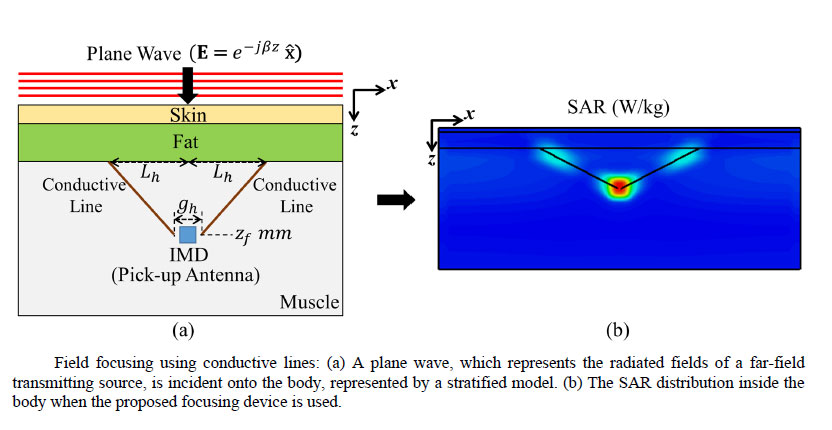
- We present a novel method of electromagnetic field focusing applicable to 3D implantable devices.
- Compared to the case of no focusing device, the achieved focused power is 8 and 16 times greater when the proposed designs are used.
- It could improve telemetry or wireless power transfer for future miniaturized implantable medical devices (IMDs).
- The paper presents a novel field focusing method, which is simple and biocompatible applicable to 3D implantable devices.
- The proposed design can be modified to focus fields with arbitrary polarizations at different depths inside human tissue.
Original Research paper
Field Focusing for Implanted Medical Devices
Hossein Mehrpour Bernety, Huanan Zhang, David Schurig, Cynthia M. Furse.
In this paper, we present a novel method of electromagnetic field focusing applicable to 3D implantable devices.
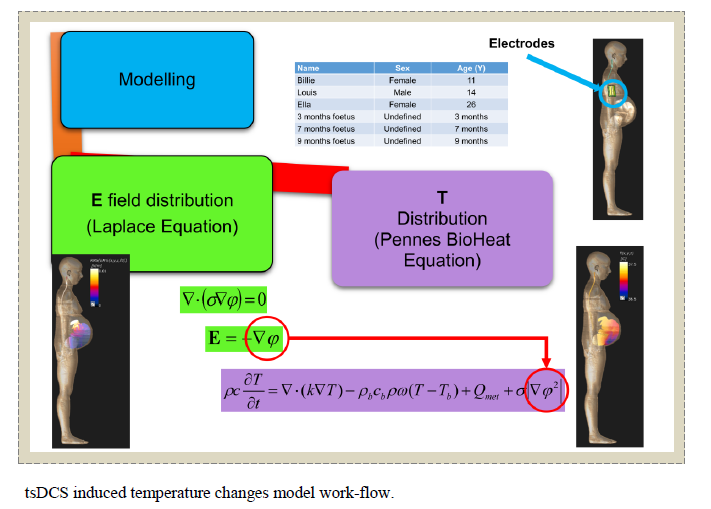
- This study deals with safety thermal issues related to the application of spinal tDCS.
- Combined resolution of Laplace and bio-heat equation allows to assess temperature increase due to electric stimulation induced by spinal tDCS.
- This is the first study addressing the tissues temperature changes induced by tsDCS.
- The very low heating induced by tDCS is not likely to activate metabolic changes in the target tissues here considered or to contribute to the few side effect that the applications of spinal tDCS protocols have shown.
- Findings of this work respond to the need of evaluating the safety of the spinal tDCS application on different subjects (young male, female, and pregnant women).
Original Research Paper
Modelling of the temperature changes induced by transcutaneous spinal direct current stimulation (tsDCS)
Serena Fiocchi, Emma Chiaramello, Alberto Priori, Paolo Ravazzani, Marta Parazzini.
Transcutaneous spinal direct current stimulation is a neuromodulation technique recently exploited to regulate the activity and enhance plasticity of spinal neural structure.

- Utilizing microwave energy, a deeper, four-quadrant ablation area for transcatheter renal denervation (RDN) can be realized without causing complicated vascular lesions as opposed to widely used radio frequency current devices.
- An ablation depth of 8 mm or more with a lower maximum temperature of 65 ºC was achieved by using microwave energy as opposed to radio frequency currents 4-5 mm depth and 87 ºC maximum temperature, shown by numerical calculation and heating experiments.
- The potential application of this microwave technology is the RDN, aimed at reducing resistant hypertension.
- Main contribution of this paper is by comparing microwave energy to radio frequency current based devices in RDN treatment, both in numerical calculations and heating experiments, it is possible to overcome performance shortcomings of widely used devices right now.
- In addition, muscle phantoms at 500 kHz and 2.45 GHz respectively, was produced and both phantoms properties were measured to match parameters used in the numerical calculations and the heating experiments.
Original Research Paper
Comparison of Radio Frequency Current and Microwave Energy for Transcatheter Renal Denervation
Aditya Rakhmadi, Kazuyuki Saito, Shohei Matsuhara, Tomoyuki Tajima, Nobuyoshi Takeshita.
Transcatheter renal denervation (RDN) is a catheter-based procedure for resistant hypertension treatment using radio frequency (RF) ablation.

- A new electromagnetic formulation enables an innovative boundary element (BEM) solution of the electroencephalography (EEG) forward problem which allows to efficiently take into account skull and white matter anisotropies.
- BEM approaches, very popular in the EEG medical imaging community, can be empowered with the hybrid contributions of this work which eliminate the need for oversimplifying assumptions on the head-skull-brain conductivity profile.
- The solution of the EEG forward problem is a cornerstone for high resolution electroencephalographies, for brain source localization, and for their applications in epilepsy treatment, electric impedance tomography, and transcranial brain stimulation.
- Up to today, Boundary Element Methods (BEM), quite popular in EEG medical imaging circles, were not able to handle white matter and skull inhomogeneities and anisotropies. To include these features, full volumetric discretizations of the Finite Element Method (FEM) were required. This work lifts this constraint for the first time by allowing an efficient BEM scheme to handle realistic white matter and skull conductivity profiles.
Original Research Paper
A Hybrid Volume-Surface-Wire Integral Equation for the Anisotropic Forward Problem in Electroencephalography
Maxime Monin, Lyes Rahmouni, Adrien Merlini, Francesco P. Andriulli.
Solving the electroencephalography (EEG) forward problem is a fundamental step in a wide range of applications including biomedical imaging techniques based on inverse source localization.

- Switch-based low intermediate frequency (IF) system of a vital sign radar is proposed for simultaneous multitarget and multidirectional detection.
- The signal to noise ratio (SNR) can be improved by choosing IF properly to reduce the flicker noise, implying more tolerance in multitarget or multiple-interferer environments.
- Multitarget and multidirectional detection can be achieved using a frequency-modulated continuous-wave (FMCW) radar with an RF switch and using ensemble empirical mode decomposition (EEMD) algorithm without a complicated antenna array or analog beamforming.
IMBioC 2019 Special Issue paper
Switch-Based Low Intermediate Frequency System of a Vital Sign Radar for Simultaneous Multitarget and Multidirectional Detection
Guan-Wei Fang, Ching-Yao Huang, Chin-Lung Yang.
This paper proposes a RF-switch-based radar system for detecting multi-target and multi-direction vital sign simultaneously.

- Thermoacoustic tomography (TAT) is applied to detect and monitor the formation of osteoporosis for the first time, and to further explore the physiological mechanism of osteoporosis formation from the perspective of tissue dielectric properties.
- Significant differences in thermoacoustic signal intensities between normal bone growth and osteoporotic bone formation are observed, suggesting that TAT has the potential to detect and monitor osteoporosis.
- TAT can provide useful information for diagnosis of osteoporosis, prediction of fracture risk, and monitoring of disease progression.
- This study represents the first for TAT to in vivo image osteoporosis and provides initial facts that TAT may become a new tool for noninvasive detection and monitoring of osteoporosis.
- This work is an exploratory experimental study of TAT for imaging osteoporosis, using micro-CT to validate the TAT findings.
Microwave Thermal Acoustics Special Issue paper
Detection and Monitoring of Osteoporosis in a Rat Model by Thermoacoustic Tomography
Zihui Chi, Xiao Liang, Xue Wang, Lin Huang, Huabei Jiang.
Objectives: Osteoporosis is a bone disease associated with decreased bone mineral density (BMD) and bone quality factors.

- A time-multiplexed hyperthermia treatment planning technique aiming at focusing the tumor heating while protecting the healthy tissue is evaluated with temperature-dependent tissue properties.
- The time-multiplexed hyperthermia via MOGA optimization can successfully intensify the heating into the target region while suppressing pre-defined hotspots when either constant thermal properties or temperature dependent tissue properties are assumed.
- The targeted medical application is hyperthermia treatment planning in order to maximize heating in the tumor while minimizing heating in surrounding tissues.
- This work demonstrates the robustness of the time-multiplexed hyperthermia approach to the variation of tissue properties due to temperature increases and ensures the clinical benefit of the method.
- This work demonstrates that time-multiplexed hyperthermia is effective, regardless of the thermal model used.
Original Research Paper
Robustness of Time-Multiplexed Hyperthermia to Temperature Dependent Thermal Tissue Properties
Grazia Cappiello, Margarethus Paulides, Tomas Drizdal, Declan Oloughlin, Martin Ohalloran, Martin Glavin, Gerard Van Rhoon, Edward Jones.
Microwave hyperthermia is a promising cancer treatment used in combination with radio- and chemotherapy.

- Theoretically and experimentally evaluate important parameters such as current and stimulating frequencies in repetitive transcranial magnetic stimulation (rTMS) that could modulate heart rhythm.
- Our system generated an eddy current of 25.4 μA/mm2 in the mouse brain regions and produced the maximum heart rhythm modulating effect at 20 Hz.
- The combined modeling and experimental approach is applicable to explore the potential adverse effects of exogenous electromagnetic fields on heart rhythm.
- Our study provides novel insights into the mechanism of heart rhythm modulation through rTMS and demonstrates the quantitative and morphological aspects of ECG alteration in such outcome.
- The rTMS dominant frequency of 20 Hz induced the most pronounced heart rhythm prolongation, causing the heart rate to decrease by 58.65 % compared to that before rTMS.
Original Research Paper
Cardiac Influence of Repetitive Transcranial Magnetic Stimulation in Small Animals
Ting-Wei Wang, Yen-Ling Sung, Shien-Fong Lin.
Repetitive transcranial magnetic stimulation (rTMS) system is an important therapeutic tool used in non-invasive brain stimulation.

- The stochastic dosimetry approach permitted to evaluate the assessment of children exposure variability due to the position of a low frequency near-field source with low computational efforts
- The method was useful for individuating the source positions area, where the source could cause the highest levels of exposure
- The target biological application is the evaluation of children exposure level due to the common use of domestic appliances, considering the variability of a real exposure scenario
- The work permitted to expand the knowledge about the low frequency near-field sources children exposure, not limiting it only on some worst-case scenario hypothesis
Original Research Paper
Influence of low frequency Near-Field Sources Position on the Assessment of Children Exposure Variability using Stochastic Dosimetry
Marta Bonato, Emma Chiaramello, Serena Fiocchi, Gabriella Tognola, Paolo Ravazzani, Marta Parazzini.
The objective of the present work was to assess the children exposure variability due to low frequency near-field sources using an approach based on stochastic dosimetry.

- A human-body-mimicking electrolyte, a Pt electrode, and a clinical electrode form an accurate and low-cost in vitro validation method for brain-computer interfaces.
- The proposed in vitro setup provides a more clinically accurate assessment of brain-computer interface performance than prior methods.
- Brain-computer interfaces can assist the medical field in better understanding and treating neurological disorders (e.g. epilepsy, Alzheimer’s, depression, etc.), and accurate assessment of device performance is key to ensuring the ability to record the relevant neural signals.
- Prior in vitro validation methods do not closely replicate an in vivo recording environment creating the potential for overestimation of device sensitivity, thus increasing the cost and number of animals required during in vivo testing.
- The developed electrode model and impedance characterization can be used to better inform implanted sensor design in the future.
APS/URSI 2019 Special Issue paper
An in vivo-mimicking In vitro testbed for brain-computer interfaces
Katrina Guido, Asimina Kiourti.
To reduce the amount of animal testing associated with brain-computer interfaces (BCI) therefore reducing the associated monetary cost and cost of animal lives,

- Controlling current distribution and applying thermal distribution comparison of causative EM radiation facilitate prior understanding of the required electromagnetic field that can create conformal heating to the targeted cancerous lesion.
- Synthesizing the desired radiator with self-imbedded choke operating at low input power can minimize consequent return currents along antenna shaft which alleviates overheating problems and damaging surrounding healthy tissues along antenna shaft.
- End-fire highly directed radiation is found to be more efficient in ablating tumors using less input power than that associated with omnidirectional (broadside) applicator using high input power to force homogeneous and fast ablation which contributes in providing confined homogeneous heating required for full ablation.
- BSB microwave antenna can provide confined heating of approximately 30 mm diameter tumor at only 3W input power which is comparable to that obtained at much higher input power.
- Maintain low reflection over wide frequency band can provide wideband mapping of heterogeneous dielectric and thermal properties of biological tissues operating at the same low power level.
Original Research Paper
Realization and Experimental Assessment of Baseball-Bat Microwave Antenna for Low Power Cancer Ablation
Eman G. M. I. Hassan, Haifa Takruri, Amira Zaki.
Experimental assessment of using low power microwave ablation for treating focal tumor is presented in this article.

- A non-contact and non-invasive method for measurement of glycerol is an exceptional feature of the sensor presented in this work enabled by employing a microwave coupled tag-reader structure.
- A printable tattoo shaped passive tag sensor with zero power consumption is presented which as an ideal candidate for smart wearable sensor applications according to its distant and non-invasive measurement capabilities.
- Targeted biomedical application of this work is measurement of glycerol in blood and interstitial fluid for indication of hyperglyceridaemia and coronary heart disease as well as the determination of glycerol level in drug-delivery applications.
- The major breakthrough of this work is development of a highly sensitive non-invasive non-contact distant sensor with zero power consumption on the sensing part with the capability of detection of a small amount of glycerol in nanoliter volume over a microfluidic channel.
- Achieving to 139.5 kHz of frequency shift and 0.2dB of amplitude variation in the resonance profile of the sensor for 2% concentration of glycerol in serum with about 960nlit of sample confined in a microfluidic channel exposed to the passive tag placed 25 mm far from the reader.
Original Research Paper
Real-Time Non-Contact Integrated Chipless RF Sensor for Disposable Microfluidic Applications
Zahra Abbasi, Masoud Baghelani, Mehdi Nosrati, Amir Sanati-Nezhad, Mojgan Daneshmand.
Glycerol concentration measurement is one of the most important biomarkers for many diagnostic applications such as indication of hyperglyceridaemia and coronary heart disease.

- This work quantifies the influence of dehydration on dielectric properties and proposes a dehydrationmitigating technique to establish a more stable environment for longer measurement protocols.
- Due to the effect of dehydration, a relative change up to 9% in dielectric properties was established in a relevant temperature range during a relevant measurement period of 35 minutes.
- More precautions should be taken for dielectric measurement of biological tissue with regards to environmental conditions and other relevant metadata.
- For several applications relying on the difference in dielectric properties between healthy and malignant tissue, this error of 9% in measured data is on the same order of magnitude as the effects of interest. Thus, the effect of dehydration could severely obscure the expected difference in dielectric contrast.
- Until an agreement on a standard operating procedure with an acknowledged metadata form, we can only encourage authors to report all metadata in their work to allow future comparisons between studies of dielectric properties of biological tissue.
Original Research Paper
Effect of Dehydration on Dielectric Measurements of Biological Tissue as Function of Time
Gertjan Maenhout, Adam Santorelli, Emily Porter, Ilja Ocket, Tomislav Markovic, Bart Nauwelaers.
The lack of a standardized operating protocol for dielectric measurements of biological tissues makes it difficult to objectively compare

- A simple approach that can be used to generate a useful data of the dielectric properties of biological tissues for the development of the microwave imaging and therapeutic system and implantable medical devices.
- The dielectric properties of healthy and unhealthy tissues at any age stage can be generated using information of the dielectric properties of solid fraction (DPSF) and water content (WC) of tissues.
- This work is beneficial in the development of microwave imaging system for brain stroke, skin cancer detection and fatty liver diseases.
- This manuscript addresses the importance of using the DPSF to generate the DPs of any unhealthy tissues that needed in the development of any successful microwave-based medical systems.
Original Research Paper
Using Dielectric Properties of Solid Fraction and Water Content to Characterize Tissues at Different Health and Age Conditions
Beadaa Mohammed, Mohamed Manoufali, Syed Akbar Raza Naqvi, Konstanty Bialkowski, Paul Mills, Amin Abbosh.
Precise dielectric properties (DPs) of biological tissues play an essential role in the development of non-invasive microwave diagnostic and therapeutic systems.
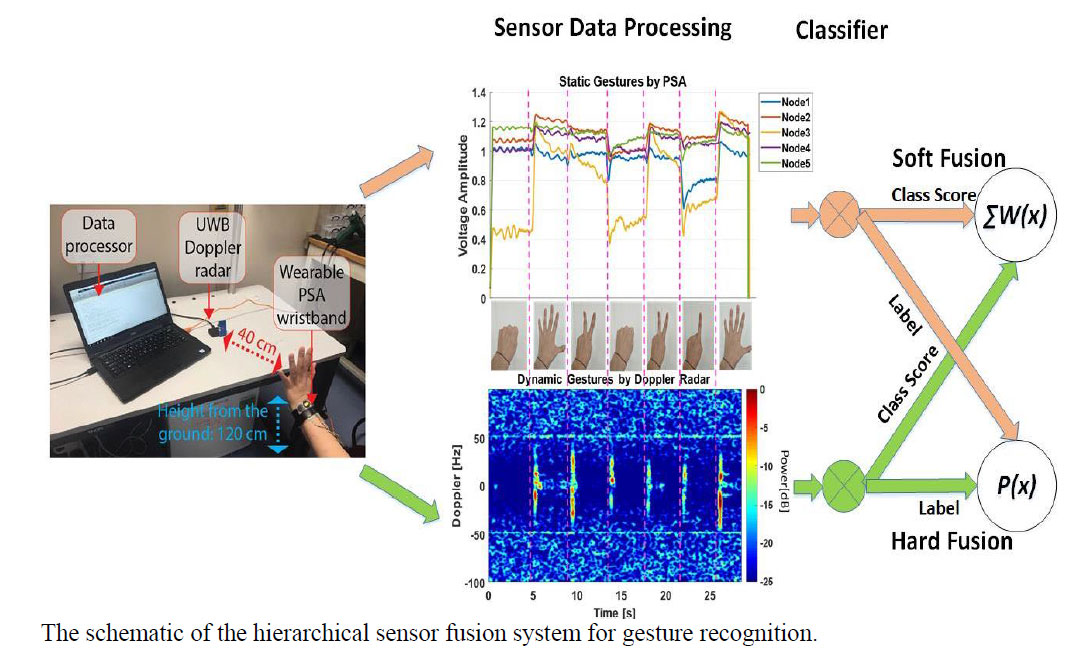
- We proposed a hierarchical model to utilize radar as an ‘Enhancer’ to complement with the PSA (Pressure Sensor Array) in improving the static gestures recognition rates, on the contrary, in the dynamic gesture case scenario the PSA acts as an ‘Enhancer’ to boost the radar performance.
- Sequential forward selection (SFS) significantly reduces the computational intensity in terms of less features and improves the classification performance.
- For the second-stage of the hierarchical model, soft and hard fusion methods are implied respectively to promote the classification accuracy and eliminate the false alarms. Different weights of the ‘Enhancer’ output are verified and compared in terms of the accuracy in the soft fusion process.
- Soft fusion improves the accuracy by 16.7% and 11.1% with respect to static and dynamic gesture identification, whereas hard fusion reduces the accuracy variance across all the participants and produces a subsequent improvement about 5.5% in the dynamic gestures.
- Future work involves more gestures and more participants with neural network-based algorithm and additional sensors configurations and fusion approaches.
IEEE Sensors Special Issue paper
Hierarchical Sensor Fusion for Micro-Gestures Recognition with Pressure Sensor Array and Radar
Haobo Li, Xiangpeng Liang, Aman Shrestha, Yuchi Liu, Hadi Heidari, Julien Le Kernec, Francesco Fiorane.
This paper presents a hierarchical sensor fusion approach for human micro-gesture recognition by combining an Ultra Wide Band (UWB) Doppler radar and wearable pressure sensors.

- This study investigates the potential use of biogenic magnetosomes as a contrast agent for microwave imaging techniques for breast cancer detection.
- We propose a functionalized contrast agent which is capable of decreasing the permittivity and increasing the electrical conductivity of breast tumor tissue based on the concentration of the magnetosome solution.
- In particular, the focus of the system is an innovative and effective therapy of superficial tumors, as, for instance, melanoma and breast cancer.
- The targeted medical application of this study is a potential new contrast agent to be used to improve microwave imaging for breast cancer detection.
Original Research Paper
Toward Magnetosomes for Breast Cancer Theranostics
Abas Sabouni, Jakob Short, William Terzaghi.
This study investigated the potential use of biogenic magnetosomes as a contrast agent for breast cancer detection using microwave imaging techniques.

- Using an electromagnetic wave sensor, that is, radar, we demonstrated that autonomic nervous system activities and heart rate variability can be measured successfully during sleep in a noncontact manner.
- Our radar-based system measured the heart inter-beat interval with an average error of 25.9 ms and autonomic nervous system index with an average correlation coefficient of 0.93 for reference electrocardiogram (ECG) data, which indicates the sufficient accuracy and reliability of our proposed techniques.
- Our proposed techniques can be applied to healthcare and clinical applications that require long-term and unobtrusive monitoring of a person’s physical and mental health.
- Our proposed techniques are the first to achieve the accurate measurement of an autonomic nervous system index using a radar system, and increased the correlation coefficient with reference ECG data by 1.7 times on average compared with a conventional system.
- Our proposed techniques evaluated the reliability of the heart rate estimated using a radar-based noncontact measurement system, which is indispensable in practice, but has never been achieved by existing techniques.
IMBioC 2019 Special Issue paper
Noncontact Measurement of Autonomic Nervous System Activities Based on Heart Rate Variability Using Ultra-Wideband Array Radar
Takuya Sakamoto, Kosuke Yamashita.
The noncontact measurement of vital signs using ultra-wideband radar has been attracting increasing attention because

- This paper proposed a new Affective Virtual Reality System (AVRS), and assessed arousal with Electroencephalography (EEG), Heart Rate (HR), Galvanic Skin Reaction (GSR) and Self-Assessment Manikin (SAM).
- VR emotion materials could deliver a better emotion elicitation effect than 2D video on negative emotional scenes according to an intergroup experiment.
- AVRS was proved as an effective material capable of eliciting emotion for psychological research mental illness diagnosis and virtual reality interaction research.
- This system can be applied to psychological research, mental illness diagnosis and virtual reality interaction research.
IMBioC 2019 Special Issue paper
Design and Evaluation of Affective Virtual Reality System Based on Multimodal Physiological Signals and Self-Assessment Manikin
Dan Liao, Lin Shu, Guodong Liang, Yingxuan Li, Yue Zhang, Wenzhuo Zhang, Xiangmin Xu.
Affective materials have always been an important factor in improving the efficiency of affect related research for their ecological validity.

- We present a novel radiofrequency radiating system for focused hyperthermic applications with magnetic nanoparticles.
- Safe, efficient and targeted treatments of hyperthermia with magnetic nanoparticles can be achieved through the proposed RF radiating system.
- In particular, the focus of the system is an innovative and effective therapy of superficial tumors, as, for instance, melanoma and breast cancer.
- Although the challenging low frequency range (hundreds of kHz), the system accomplishes a precise and delimited radiofrequency magnetic field distribution, avoiding indiscriminate tissue exposure.
- The synergy between a careful design of the radiating system and research on innovative magnetic nanoparticles can pave the way towards more efficient and safer magnetic hyperthermia treatments in clinical applications.
Original Research Paper
A Radiating System for Low Frequency Highly Focused Hyperthermia with Magnetic Nanoparticles
Danilo Brizi, Nunzia Fontana, Giulio Giovannetti, Luca Menichetti, Laura Cappiello, Saer Doumett, Costanza Ravagli, Giovanni Baldi, Agostino Monorchio.
In this paper, we propose a radiofrequency (RF) radiating system for highly focused hyperthermia with magnetic nanoparticles.

- The paper studies the significant impact of multipath wave propagation (surface and diffraction waves) on electromagnetic (EM) sensing systems, which is often overlooked in the design and development of EM sensors.
- System simulations and experimental results with a millimeter (mm)-wave sensor demonstrate the need to suppress these unwanted signals in order to increase EM sensing sensitivity.
- Experimental measurements demonstrate that sensor’s sensitivity to glucose concentrations is almost doubled by suppressing multipath waves with appropriate use of absorbers.
- Our study focuses on sensing glucose changes with mm-waves, but this analysis can be useful for any application in EM biomedical sensing which requires the detection of weak signals propagating through lossy tissues.
Original Research Paper
Study and Suppression of Multipath Signals in a Non-Invasive Millimeter Wave Transmission Glucose Sensing System
Maria Koutsoupidou, Helena Cano-Garcia, Roberto L. Pricci, Shimul C. Saha, George Palikaras, Efthymios Kallos, Panagiotis Kosmas.
Electromagnetic (EM) biomedical sensors in the mm-wave frequency range must detect small changes in signals in the presence of tissues, which are correlated to a pathological condition.
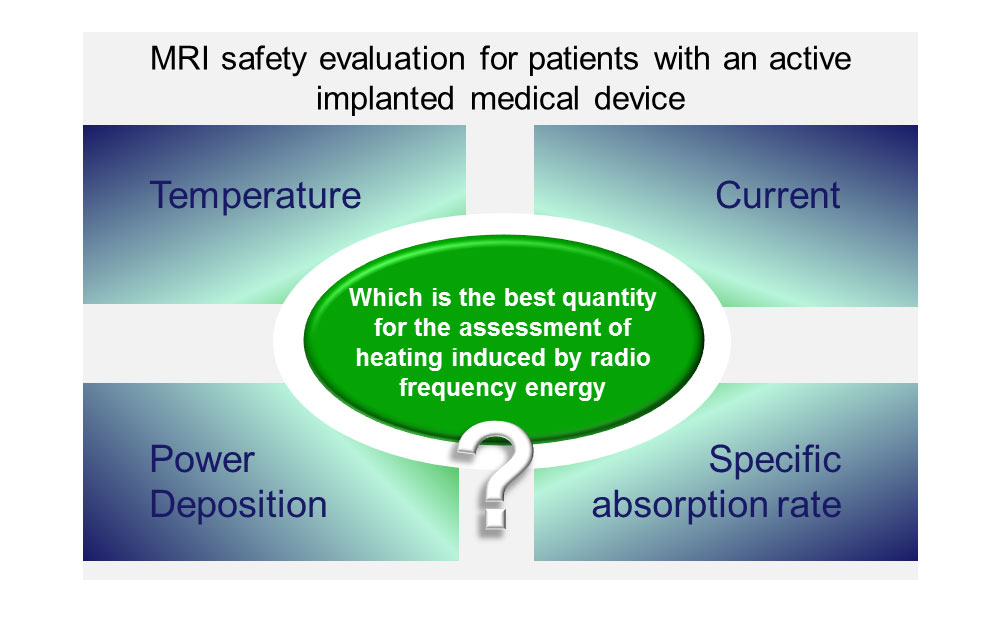
- Four quantities, namely 1) the net dissipated power around an electrode of an active implantable medical device (AIMD), 2) the net temperature increase, 3) the current flowing from the lead into the electrode, and 4) the net specific absorption rate (SAR) increase, were numerically compared for a set of leads with straight and helical wires to evaluate the lead electromagnetic model (LEM) with respect to radio frequency energy-induced heating.
- The most suitable sensor locations were positions from the electrode tip along the first half of the electrode axial axis. A temperature sensor was essential if the net electrode temperature increase required evaluation.
- The targeted medical application is an evaluation of heating induced by radio frequency energy that appears in human tissue near an AIMD during magnetic resonance imaging.
- For leads with helical wire, our results indicate that 1) to achieve a good validation of the transfer function, that is, the linear regression coefficient of determination R2 to be close to 1, the temperature sensor results must be obtained as fast as possible, but 2) the total transient time must be longer than 360 seconds for evaluation of the LEM calibration factor.
- Utilization of result analysis made for generic leads with straight wire can be significantly misleading for predicting results for leads with helical wires.
Original Research Paper
Comparison of Different Assessment Quantities to Evaluate Lead Electromagnetic Model for Radio Frequency Energy-Induced Heating
Mikhail Kozlov ; Wolfgang Kainz.
To prevent tissue damage near an active implantable medical device (AIMD), the radio frequency energy-induced heating must be estimated for all possible

- This is first time to model the performance of implantable PV cells in different layers of tissue. We demonstrate how the electrical characteristics are influenced by the implanting location of the device.
- A PV cell implanted in the dermis layer can harvest the greatest amount of power.
- We propose implanting our energy harvesting PV cells in the hypodermis layer.
- Our proposed PV device harvests enough energy to supply power for low-cost implants such as cardiac pacemakers, retinal implants or biomedical sensors.
- PV cells implanted in the adipose layer can harvest nearly 11.84 mW using an 850 nm light source.
IEEE Sensors Special Issue Paper
Photovoltaic Power Harvesting Technologies in Biomedical Implantable Devices Considering the Optimal Location
Jinwei Zhao, Rami Ghannam, Man Kay Law, Muhammad Ali Imran, Hadi Heidari.
There are still many challenges in effectively harvesting and generating power for implantable medical devices.

- An inductively-coupled resonator assembly is shown to allow the detection of significantly sub-wavelength diameter biological cells by combining the strong field confinement provided by a split ring resonator with the high quality factor resonance of a dielectric resonator.
- Measurements of single, free-flowing cells in a natural aqueous environment at ~10 GHz have been carried out using a coupled resonator sensor, without the need for trapping, immobilizing, culturing or fixing cells in high-field areas.
- The coupled resonator approach proposed in this work shows potential as a method of discrimination of cells based on hydration levels, which in other works has been linked to carcinogenesis, as well as cancer aggressiveness grade; therefore the sensor described herein may represent an alternative method of cancer diagnosis or disease progression monitoring via non-invasive liquid biopsies.
- In this paper, measurements of living, free-flowing, single cells in aqueous buffer solution, at a frequency sensitive to cell water content, have been made.
- The inductive coupling employed in this sensor allows for physical separation of the sensing elements from microwave electronics, allowing for cheap, disposable chips to be used with biological fluids.
Original Research Paper
Microwave Dielectric Sensing of Free-Flowing, Single, Living Cells in Aqueous Suspension
Clare Watts, Stephen Hanham, James Armstrong, Munir Ahmad, Molly Stevens, Norbert Klein.
Dielectric measurements offer the possibility of highly sensitive detection of physical cell properties,
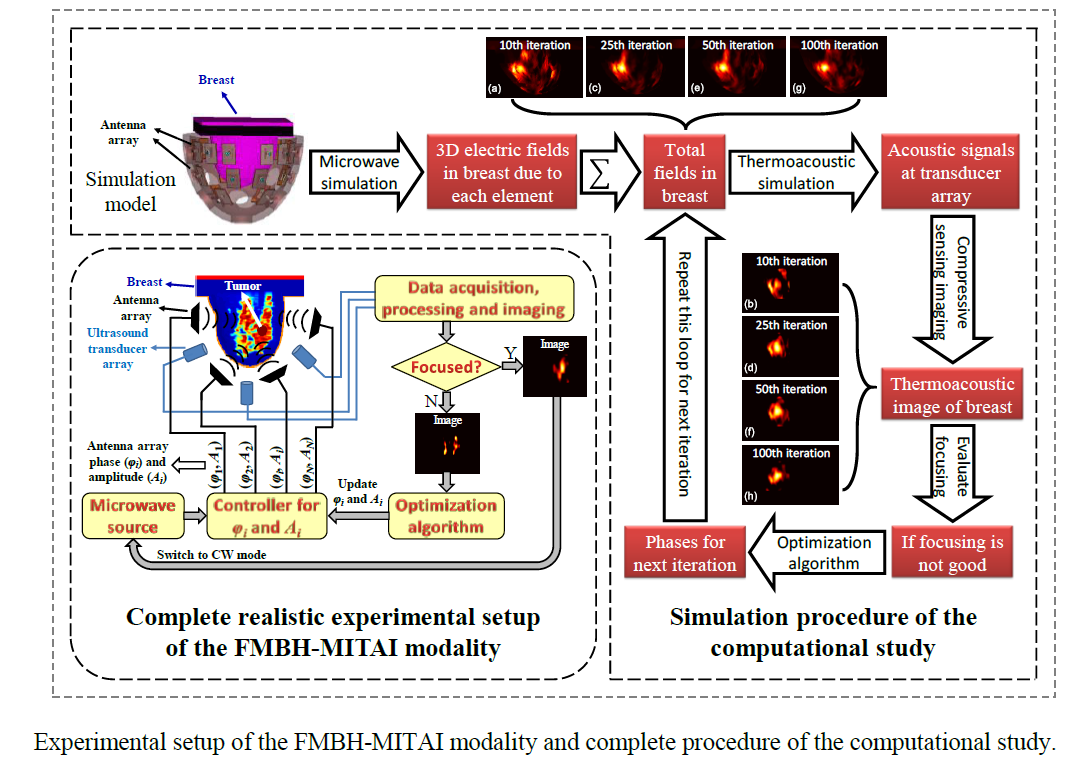
- Microwave-induced thermoacoustic imaging (MITAI) is applied to monitor microwave power deposition distribution in human breast during the process of focused microwave breast hyperthermia (FMBH).
- Compressive sensing (CS) based MITAI technique is able to provide reliable power deposition monitoring for the iterative focusing process of the FMBH approach under the condition that the obtainable focusing is good enough.
- Focused microwave breast hyperthermia (FMBH) for treating breast tumors noninvasively.
- This work presents the first systematic computational study for assessing performance and robustness of the MITAI monitored FMBH modality, referred to as FMBH-MITAI modality, utilizing realistic human breast phantoms with different densities and tumor locations.
Original Research Paper
Focused Microwave Breast Hyperthermia Monitored by Thermoacoustic Imaging: A Computational Feasibility Study Applying Realistic Breast Phantoms
Lifan Xu, Xiong Wang.
Focused microwave breast hyperthermia (FMBH) represents a newly emerging technique endowed with advantages of high accuracy and low side effect for treating breast tumors.

- In this manuscript, body temperature and sweat sensors are integrated with a textile NFC antenna, which eliminates the need for external batteries and realizes real-time wireless monitoring.
- This paper has presented design, fabrication implementation, measurements and real-life applications of smart textile NFC antennas and a battery-free wireless NFC body temperature and sweat sensing device, aiming for truly ubiquitous wireless health and wellbeing monitoring.
- The proposed device targets at body temperature and sweat loss monitoring for daily healthcare, systemic hyperthermia from fever, sweating symptoms caused by various kinds of infection, inflammation and trauma and wound healing monitoring.
- Different from conventional battery enabled and wire connected sensors, the significance of this work is by applying textile NFC as a communication interface as well as a wireless power harvester, battery-free real-time body temperature and sweat monitoring has been realized simultaneously.
- Apart from the device itself, an App has also been developed on Android system for the sensor data to be accessed by smart phones.
Original Research Paper
Smart Textile Integrated Wireless Powered Near Field Communication (NFC) Body Temperature and Sweat Sensing System
Yutong Jiang, Kewen Pan, Ting Leng, Zhirun Hu.
Near Field Communication (NFC) is a short-range wireless communication technique that has become attractive devices for healthcare and wellbeing monitoring.

- A wearable device was developed with electromagnetic sensors in order to non-invasively monitor the progress of brain atrophy and lateral ventricle enlargement as a result of Alzheimer’s disease.
- The developed wearable RF device is capable of detecting the progression of brain atrophy and lateral ventricle enlargement successfully.
- The work in this study targets Alzheimer’s disease and aims to develop a non-invasive device for monitoring the progression of the disease in patients.
- The breakthrough in this work is the development of a wearable device that uses RF sensors for detecting changes in the brain as a result of Alzheimer’s disease.
Original Research Paper
Non-Invasive Wearable RF Device towards Monitoring Brain Atrophy and Lateral Ventricle Enlargement
Imran Saied, Tughrul Arslan.
Alzheimer’s disease is the most common form of neurodegenerative disease and a leading cause of dementia today.
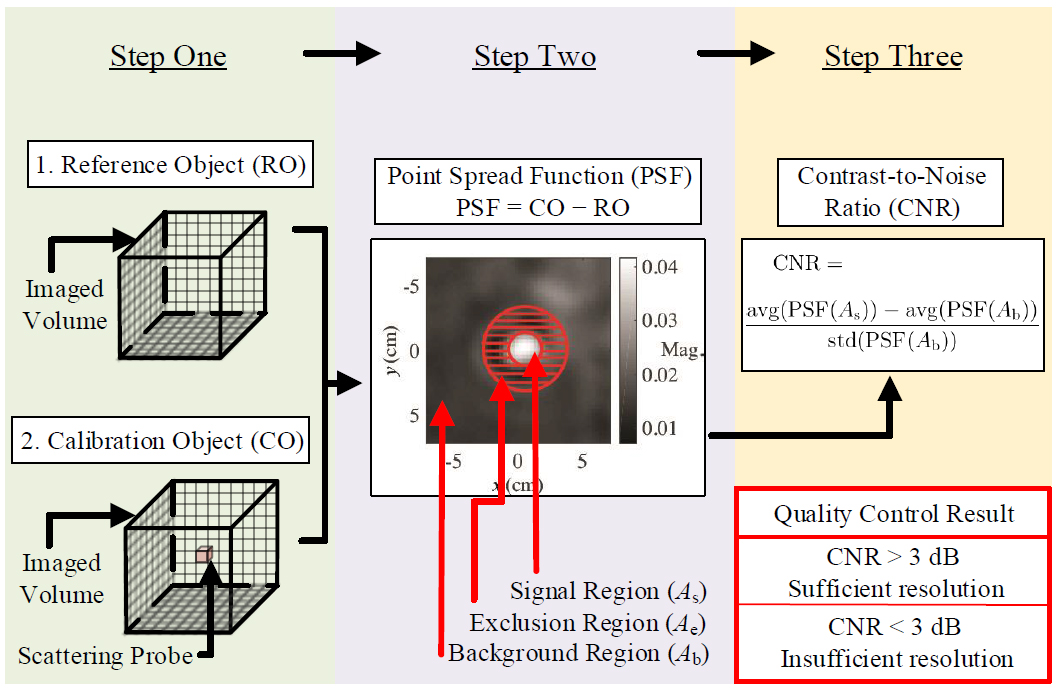
- This proposed protocol evaluates the ability of a microwave imaging system to provide sufficient data quality.
- The protocol enables the identification of the system-specific resolution, which in practice is worse than the theoretical estimate.
- The approach is applicable to various biomedical microwave-imaging applications through modifications of the measured phantoms.
- The approach helps identify faults in the imaging setup and is suggestive of hardware modifications that remedy these faults.
- The flexibility of the protocol enables its application (with minor modifications) to any acquisition surface (e.g. planar, cylindrical, hemispherical antenna orientation).
Original Research Paper
Quality Control of Microwave Equipment for Tissue Imaging
Daniel Tajik, Jessica Trac, Natalia Nikolova.
While the development of microwave imaging technology for biomedical applications has been ongoing for many years, no clinical devices are currently in use.

- We exploit a low-cost and inkjet printed UHF RFID tag as a sensor by modifying the equivalent circuit of the antenna to mitigate the effects of water, blood, and the human body.
- The targeted biological and medical applications are intravenous (IV) level sensing, blood storage management, and wound healing detection.
- The proposed RFID tag antenna features impedance match with Impinj R6 RFID from 890 MHz – 937 MHz and has a read range of 3 m, 2.5 m and 1.5 m on the surface of a water bottle, IV solution and blood bag, respectively.
- As compared with traditional designs, this tag antenna provides 26 % more read range with relatively small size 40 14 mm2 and has a specialty of water proximity sensing, leading to a compact and low-cost solution which is ideal for mass production.
- These features make this tag ideal for healthcare application in hospitals, which can add better facilitation for patient monitoring and also reduces the cost.
2019 APS Special Issue paper
Low-Cost Ink-Jet Printed RFID Tag Antenna Design for Remote Healthcare Applications
Abubakar Sharif, Jun Ouyang, Yi Yan, Ali Raza, Muhammad Ali Imran, Qammer Hussain Abbasi.
This paper presents a low-cost, inkjet printed radio frequency identification (RFID) tag antenna for remote health care applications.

- A supervised machine-learning approach offers a calibration-free and computationally efficient solution for extracting heart rates from radar-measured signals in real time.
- The algorithm offers a practical solution for learning individual heartbeat signatures from composite vital sign radar signals in a timely manner.
- The technique can be applied to vital sign radars offering a non-intrusive way of monitoring one of the most widely sought after indicator of health and performance, the heartbeat.
- The results demonstrated that, by using the proposed machine-learning algorithm, there is no need for multiple optimization schemes, tuning steps, and intermediate signal processing steps for static observation of vital sign radar.
Original Research Paper
A Supervised Machine Learning Algorithm for Heart-rate Detection Using Doppler Motion-Sensing Radar
Justin Johnson Saluja, Joaquin J. Casanova, Jenshan Lin.
The advancement of vital sign radar technology has proven to be a useful tool in assessing various physiological dynamics including heartbeat and respiration.

- Brain strokes are one of the leading causes of disability and mortality in adults in developed countries. We investigate how microwave tomography reveals changes in the brain’ tissues and thereby enable to detect and identify the type of stroke.
- We demonstrate that hemorrhagic stroke can be automatically identified with microwave tomography.
- Because of portability and cost effectiveness, microwave imaging systems may significantly improve the medical care of cerebrovascular accidents.
- Stroke identification including images reconstruction and automatic detection lasts less than 5 minutes.
- We implement massive parallel computing to solve the electromagnetic inverse problem and to speed up the reconstruction process.
2019 APS Special Issue paper
Detection of Simulated Brain Strokes Using Microwave Tomography
Vanna Lisa Coli, Pierre-Henri Tournier, Victorita Dolean-Maini, Ibtissam El Kanfoud, Christian Pichot, Claire Migliaccio, Laure Blanc-Féraud.
Brain strokes are one of the leading causes of disability and mortality in adults in developed countries.

- Live cells were characterized individually in a fast, compact and label-free manner, and the dynamic range of the impedance spectroscopy was greatly increased by 2-port instead of 1-port measurements.
- A lumped equivalent circuit of nondispersive resistances and capacitances was found sufficient to explain the impedance spectrum of a cell between 9 kHz to 9 GHz, and the sensitivity of the cell impedance to microwave scattering (S) parameters was analyzed for the first time.
- The equivalent circuit parameters were found the most sensitive to the insertion loss of a series-trapped cell and the return loss of a shunt-trapped cell on the coplanar waveguide.
- The equivalent circuit parameters could be reliably extracted because low-frequency S-parameters were mainly governed by the membrane resistance, high-frequency S-parameters were mainly governed by the cytoplasm capacitance, and intermediate-frequency S-parameters were mainly governed by the membrane capacitance and cytoplasm resistance.
- The theory of ultrawideband impedance spectroscopy was carefully derived and documented for the first time.
Original Research paper
Sensitivity Analysis for Ultra-wideband 2-port Impedance Spectroscopy of a Live Cell
Xiao Ma ; Xiaotian Du, Lei Li, Hang Li, Xuanhong Cheng, James Hwang.
For ultra-wideband (9 kHz–9 GHz) 2-port impedance spectroscopy of a biological cell, sensitivity analysis was carried out for extracting lumped cell characteristics such as

- The innovative feature of RF electromagnetic fields shown here, consists in offering protection to human cells against the damaging action of a chemical agent.
- The protective effect of RF electromagnetic fields occurs in presence of modulated signals and depends on signal bandwidth, as well as on SAR level.
- RF-induced protective effect has been here proved, on an in vitro model, to be a tunable phenomenon depend-ing on the electromagnetic conditions adopted, which provides a step towards applications targeting cells lo-cated at different depths in the body.
- These findings suggest the existence of a complex interaction between modulated RF fields and biological systems. Such interaction becomes detectable when samples are appropriately sensitized, such as when RF exposure is combined with other chemical or physical treatments.
Original Research paper
Effects of Radiofrequency Exposure and Co-Exposure on Human Lymphocytes: the Influence of Signal Modulation and Bandwidth
Stefania Romeo, Anna Sannino, Olga Zeni, Leopoldo Angrisani, Rita Massa, Maria Rosaria Scarfi.
The occurrence of modulation-specific effects after co-exposures to Radiofrequency (RF) and other agents has been discussed in the literature.

- This paper provides a detailed survey related to the possible health hazards linked with EMF exposure based on what empirical studies suggest and the different metrics that are currently used for evaluating, limiting and mitigating the effects of this type of exposure on the general public.
- Brain tumour is still the main cause of concerns, which may be related to the extensive use of wireless devices, even though the effects of EMF exposure is now being investigated in other parts of the body (e.g. eyes, reproductive system). Moreover, some studies advocate a modification of the guidelines to better take into account the duration of exposure (i.e. long-term exposure).
- Generic/composite metrics (based on existing metrics) have recently been designed to better evaluate the exposure of large geographical area. A generic metric for measuring the individual exposure would also be of interest.
- Key 5G enabling technologies, such as densification, massive MIMO, and mmWave, will surely have an impact on the ambient level of EMF exposure in the near future, but they will also provide new opportunities to reduce it, e.g. context-aware beamforming or low exposure spatial modulation schemes.
Original Research Paper
A Survey on Electromagnetic Risk Assessment and Evaluation Mechanism for Future Wireless Communication Systems
Muhammad Ali Jamshed, Fabien Heliot, Tim Brown.
The accurate measurement of electromagnetic exposure and its application is expected to become more and more important in future wireless communication systems,

- Microwave techniques may provide a convenient method of noninvasive hydration assessment due to the strong relationship between dielectric properties and water content in biological tissues.
- The feasibility of microwave hydration assessment is demonstrated through a physiologically-driven framework for modeling changes in microwave properties at the extremities during dehydration.
- Our target application is hydration assessment in athletes and older adults due to the elevated risk of dehydration from their activity, environment, and/or physiological changes.
- It is found that permittivity is a more sensitive metric than conductivity when assessing water-loss dehydration.
- The modeling techniques developed in this paper provide the framework for interpreting in vivo experimental measurements in the context of hydration assessment.
Original Paper, Part 1
Feasibility Study of Hydration Monitoring using Microwaves Part 1: A Model of Microwave Property Changes with Dehydration
David Christopher Garrett, Elise Fear.
Dehydration is a prevalent condition which can have profound health consequences. If detected early, it can often be treated by oral fluid replacement (drinking or eating).

- Microwaves are inherently sensitive to water content, and may therefore provide a clinically-relevant method of noninvasive hydration monitoring.
- This study presents a validation study of microwave techniques for hydration assessment in athletes by performing measurements prior to and following acute water loss due to exercise.
- We find changes in estimated permittivity with water loss, but no relationship with measured attenuation.
- Athletes may find applications of this technique in guiding fluid replacement for maximal performance and safety during exercise and recovery.
Original Paper, Part 2
Feasibility Study of Hydration Monitoring using Microwaves Part 2: Measurements of Athletes
David Christopher Garrett, Jared R. Fletcher, David B. Hogan, Tak Shing Fung, Elise Fear.
Hydration is a key consideration for athletes, where even mild levels of dehydration may negatively impact performance.

- Sophisticated electromagnetic modeling and experiments were performed to assess the effect of the electrode structure on the radio frequency (RF) -induced heating.
- For this case study, we found that increasing the electrode size tends to reduce the magnitude of the lead transfer function, subsequently reducing the RF-induced heating near the electrode.
- To present a lead electrode which can reduce the RF-induced heating for active implantable medical devices (AIMDs) under magnetic resonance imaging (MRI).
- We could demonstrate that the electrode structure of the lead tip has an impact on the MRI RF-induced heating of the AIMDs.
- Both simulations and experiments demonstrate that increasing the electrode size reduces the RF-induced heating for an implanted lead during MRI scanning.
APS Special Issue
Impact of Electrode Structure on RF-induced Heating for an AIMD Implanted Lead in a 1.5-Tesla MRI System
Rui Yang, Jianfeng Zheng, Yu Wang, Ran Guo, Wolfgang Kainz, Ji Chen.
In this paper, the impact of the electrode structure on radio frequency (RF) induced heating near an active implantable medical device (AIMD) implanted

- This research aims to solve the issue with localization with near field of electromagnetism and in the lossy human tissues.
- The results show that, the position of in-body medical instrument can be determined within 1 cm and predict the orientation with error of maximum 10 degree.
- The proposed method is a novel way to determine location and orientation of an in-body medical-instrument.
- High accuracy localization in the challenging near field with relatively low frequency.
- This method can be performed from DC to up to frequencies that goes through the human tissues with negligible losses.
Original Research Paper
Determining the Position and Orientation of In-body Medical Instruments Using Near-Field Magnetic Field Mapping
Vedat Cavlu, Paul Brennan.
Abstract:There is a increasing demand for localizing medical implants in-body, such as wireless capsule endoscope (WCE) and Nasogastric tube (NGT).

- Neuromodulation approach such as optogenetics helps regain the functionality of the paralyzed limbs due to stroke and neural diseases.
- An optogenetic implant requires a fixed amount of power to turn on the μLED and stimulate the neurons via inductive coupling based wireless power transfer method.
- Coaxial and lateral displacements and angular misalignment cause degradation of inductive coupling and thus reduce the delivered power to the implants. Our approach of deriving the misalignment tolerance range based on the modeled, simulated and measured path loss and the link efficiency through the tissue media is a unique approach to estimate the performance reliability of the implant.
- The proposed approach and methodology of designing a wireless power transfer system for optogenetic application with the aim to maximize the link efficiency given the constraints of the sizing and Specific Absorption Rate (SAR) would be highly valuable for the biomedical implant research community.
IMBioC Special Issue
Effects of Coaxial-lateral and Coaxial-angular Displacements on Link Efficiency of a Wirelessly Powered Optogenetic Implant: Design, Modeling and Experimental Validation
Dipon Kumar Biswas, Nishat Tarannum Tasneem, Ifana Mahbub.
Abstract:In recent years, wireless power transfer (WPT) system has evolved tremendously as a means to deliver power to miniaturized implantable sensors.
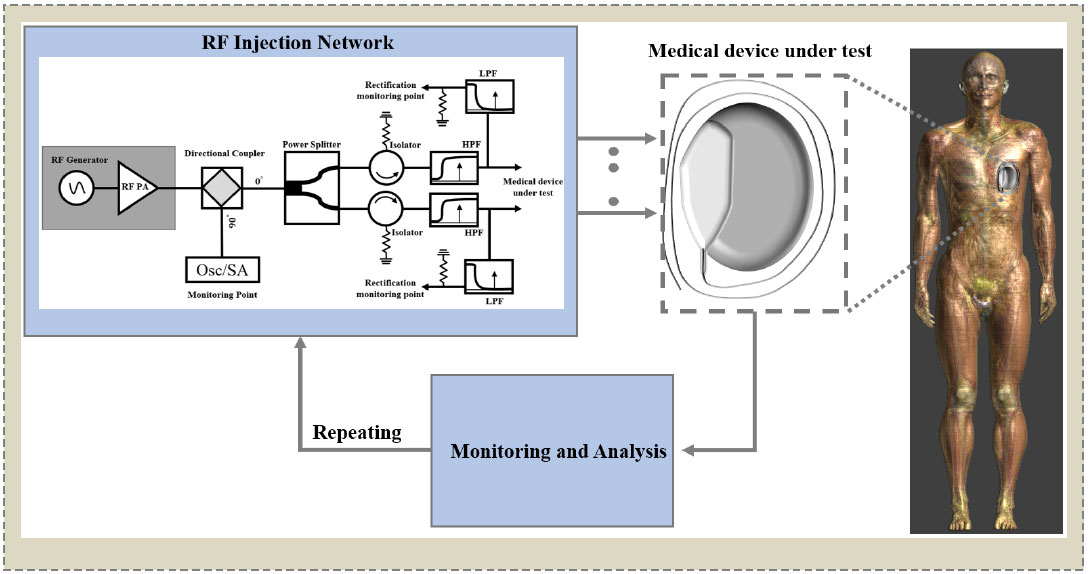
- This work presents the design, construction, and testing of an RF injection network for MR-conditional medical device testing of devices for use within 1.5 T MRI scanners to reduce the risks to patients with an active implantable medical device (AIMD) in this electromagnetic environment.
- A directional lumped element coupler, power splitter, an attenuator/isolator, low pass filter and high pass filter were designed and implemented as part of the network and at the end a neuromodulation system was tested using the developed RF injection network for conductive emission testing.
- Application target is active implantable medical devices exposed to 63.4 MHz RF field in 1.5 T MRI systems.
- MRI scanner is well-known to pose a series of risks to patients with an active implantable medical device (AIMD). The anticipated risks to both the patient and the implanted device are described in ISO/TS 10974:2018(E).
- In this work, RF injection network was developed for conductive emission testing of AIMDs to reduce the risk of loss of device functionality such as, but not limited to, a failure to deliver the intended therapy, re-programming, device reset, permanent damage, and tissue stimulation due to RF rectification.
Original Research Paper
RF Injection Network Development for Testing of Active Implantable Medical Devices Exposed to RF Fields in 1.5 T MRI Systems
Ali Attaran, William B. Handler, Blaine A. Chronik.
Abstract:This work presents the design, construction, and testing of an RF injection network for MR-conditional medical device testing of devices for use within 1.5 T MRI scanners (i.e. frequency of 63.4 MHz).

- For the first time the compressive sensing theory has been applied and clinically tested in hyperthermia treatment planning.
- The proposed approach allows to improve treatment quality for head & neck tumors with the HYPERCollar3D (despite its general formulation) exploiting both sparsity promotion concepts and FOCO (a convexprogramming- based SAR optimizer).
- The approach proposed in this work deals with the optimal planning of an hyperthermia treatment.
- The proposed SP-FOCO allows to optimally and case-specifically select a subset of antennas from an oversized applicator. Oversized applicators represent a way to exploit additional degrees of freedom and consequently dealing with arbitrary located tumor.
- Results suggested the development of similar approaches for applicator design.
APS Special Issue Paper
Selecting the Optimal Subset of Antennas in Hyperthermia Treatment Planning
Gennaro G. Bellizzi, Maarten Paulides, Tomas Drizdal, Gerard Van Rhoon, Lorenzo Crocco, Tommaso Isernia.
Abstract:Hyperthermia treatment planning is a deeply patient-specific task which includes the optimal determination of the excitations of an array applicator.

- This paper describes a simple test bed made from pork skin, fat or lard, and solid or ground pork for testing subdermal antennas. Fat and pork loin provide realistically varying tissue electrical properties. Lard and ground pork provide consistent tissue properties.
- It mimics human tissues sufficiently well to enable effective design of subdermal antennas.
- This allows testing of subdermal antennas for next-generation implantable medical devices (IMDs), and we demonstrate initial tests on a 3D focusing antenna design.
- These IMDs are likely to be much smaller than IMDs today, requiring a new type of wireless telemetry system, of which subdermal antennas are a likely component.
- This paper considers both the average and standard deviation of the electrical properties of the tissues.
APS Special Issue
A Layered Pork Model for Subdermal Antenna Tests at 433 MHz
Zachary Deneris, D. Eldon Pe’a, Cynthia M. Furse.
Abstract:Clinical or Biological Impact: Antennas for next generation implantable medical devices are likely to be distributed throughout the body,

- We report the first-ever study that explores unwanted electromagnetic energy coupling to the mouth retractor used during tonsillectomy.
- In vitro measurement results demonstrate that unintentional RF energy coupling is indeed a real issue, leading, in turn, to unwanted temperature increase in the surrounding tissues.
- Our ultimate goal is the prevention of related post-operative tonsillectomy complications, including dysgeusia that currently affects one-third of patients.
- This is the first time that RF energy leakage is confirmed during tonsillectomy, and identified as a possible cause of post-operative dysgeusia.
- Both monopolar electrosurgery and coblation tonsillectomy procedures are explored and contrasted at typically used power levels.
APS Special Issue
Unintentional RF Energy Transfer During Tonsillectomy: An In Vitro Investigation
Satheesh Bojja Venkatakrishnan, Vigyanshu Mishra, Maria Koenigs, Tendy Chiang, Asimina Kiourti.
Abstract:One-third of tonsillectomy patients experience post-operative taste disturbances (dysgeusia), yet the underlying cause is unknown.

- Radio-Frequency backscattering is employed to enable batteryless and wireless brain implants that are: a) matched to high-impedance clinical electrodes, and b) tolerant to DC voltage.
- As compared to previous wireless and batteryless brain implants, the proposed approach offers a remarkable improvement in sensitivity by 25 times.
- Unobtrusive monitoring of deep brain signals may significantly improve the individual’s physical and mental well-being (e.g., for patients with epilepsy, Alzheimer’s, Parkinson’s, and more).
- Batteryless brain implants matched to high-impedance electrodes can readily be employed to clinical applications.
- Improvements on the interrogator side help suppress the phase noise and improve the demodulated signal integrity.
APS Special Issue
Passive Impedance Matching For Implanted Brain-Electrode Interfaces
Wei-Chuan Chen, Katrina Guido, Asimina Kiourti.
Abstract:We propose a new technique for matching the high impedance of sub-cranial electrodes to wireless brain implants that is:

- Self-powered and ultra-compact NanoNeuroRFID system for Brain Computer Interfaces.
- Ultra-miniaturized (<200 μm diameter) magnetoelectric antennas for brain implantable devices.
- Wireless Implantable devices based on magnetoelectric antennas.
- Sub-mm size brain implantable devices using ultra-compact magnetoelectric antennas.
IMBioC Special Issue
NanoNeuroRFID: A Wireless Implantable Device Based on Magnetoelectric Antennas
Mohsen Zaeimbashi ; Hwaider Lin ; Cunzheng Dong ; Xianfeng Liang ; Mehdi Nasrollahpour ; Huaihao Chen, Neville Sun, Alexei Matyushov, Yifan He Xinjun Wang, Cheng Tu, Yuyi Wei, Yi Zhang, Sydeny Cash, Marvin Onabajo, Aatmesh Shrivastava, Nian-xiang Sun Sun.
Abstract:A major obstacle during the design of brain-computer interfaces is the unavailability of a neural implantable device that is μ-scale in size, wireless, self-powered, and long-lasting.

- We present a non-invasive helmet-restraint integrated with an RF coil for awake, unanesthetized non-human primate magnetic resonance imaging (MRI).
- The non-invasive helmet coil was designed and constructed using three dimensional (3D) modeling and additive manufacturing based upon computed tomography (CT) images.
- Electromagnetic simulations of the helmet coil loaded with a computer-based Rhesus macaque model provided accurate predictions of coil performance.
- A Rhesus macaque successfully completed behavioral training based on positive reinforcement and was able to sit in the MRcompatible primate chair and wear the helmet for MR imaging studies.
- The non-invasive helmet coil eliminates the need for permanently implanting non-human primates with a head post (which has significant complications), allows using of more subjects in experiments, provides good immobilization for magnetic resonance imaging, and provides improved signal to noise ratio (SNR) compared to a non-integrated loop coil.
APS Special Issue
Subject-specific, Non-invasive Helmet-restraint RF Coil for Awake, Non-human Primate MR Imaging
Bahareh Behzadnezhad, Jacob Andreae, Samuel A. Hurley, Caitlynn Filla, Ellie Mueller, Bruce D. Collick, Nader Behdad, Luis Populin, Alan B. McMillan.
Abstract:The purpose of this study was to develop a non-invasive restraint helmet integrated with an RF coil for awake-behaving non-human primate MR imaging.
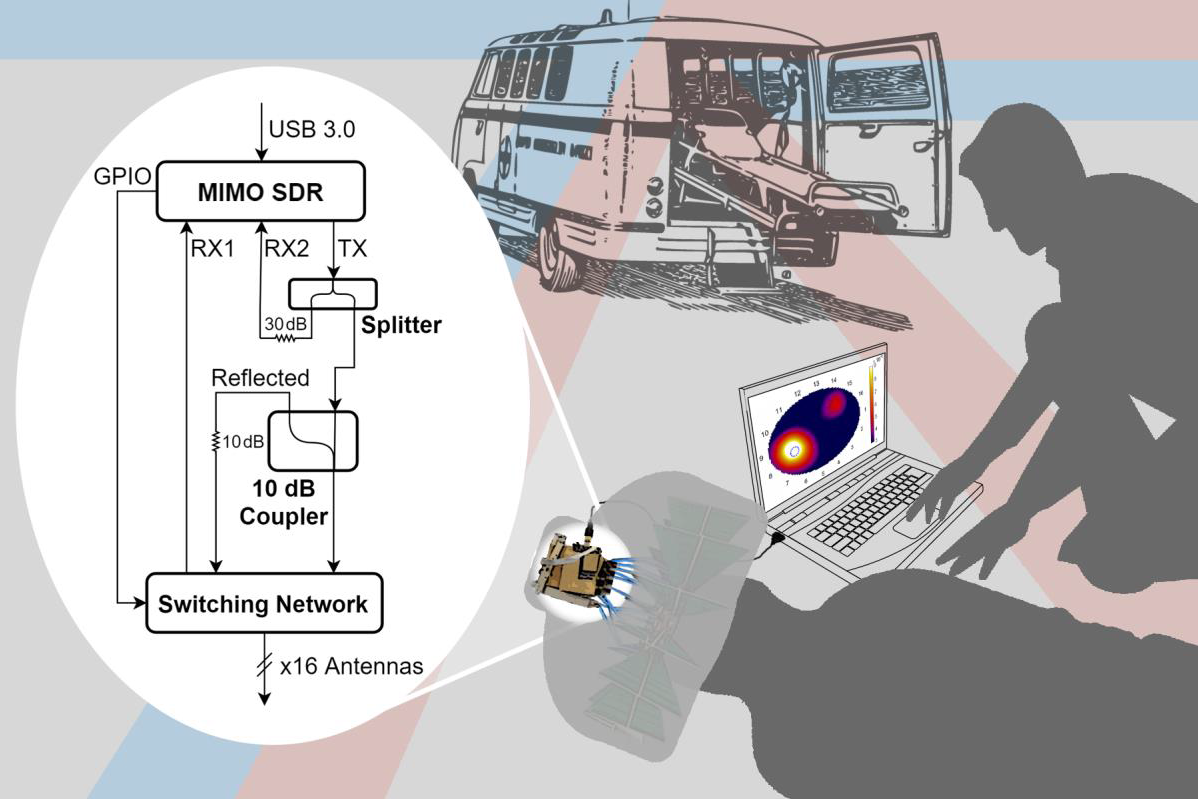
- A novel multistatic head imaging system utilising a software-defined radio, solid-state switching network, and static antenna array is proposed.
- The system is highly compact, lightweight, and inexpensive, attributes that could make it simple to transport to medical emergencies and could enable better accessibility for disadvantaged communities.
- Head imaging applications are the focus, with the system being verified using a simplified head phantom and targets emulating cancerous tumours and bleeds.
- The imaging accuracy of the proposed system is comparable to a Vector Network Analyser system using the same imaging algorithm, while greatly reducing size and cost.
- The system could produce images of the head phantom within less than a minute, making it feasible for use in time-critical applications.
Original Research Paper
Portable Microwave Head Imaging System Using Software-Defined Radio and Switching Network
Anthony Edgar Stancombe, Konstanty Bialkowski, Amin Abbosh.
Abstract:Head imaging plays an imperative role in the detection and localisation of conditions affecting the brain, such as strokes, cancerous tumours, and haemorrhages caused by trauma.
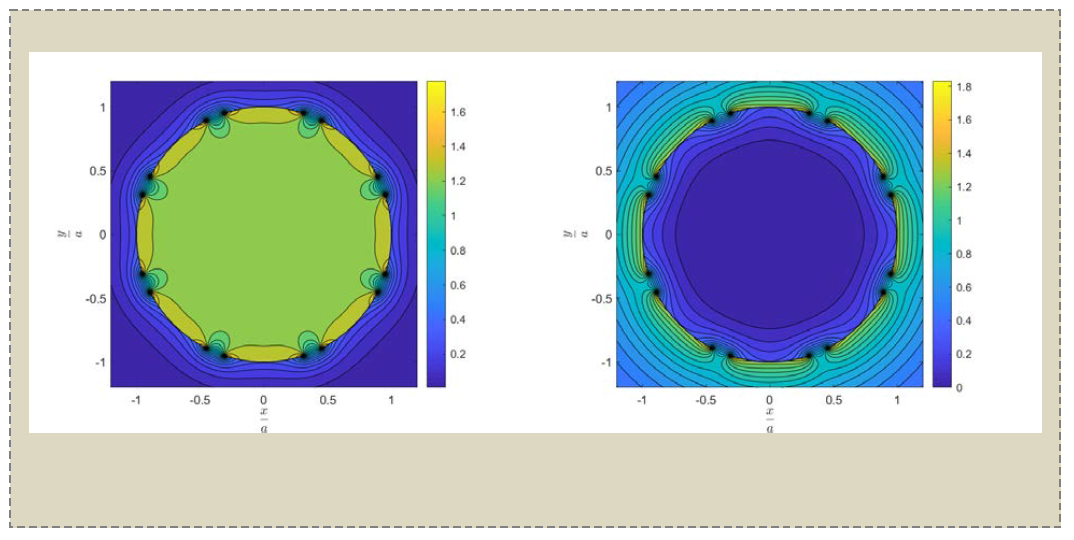
- This paper presents analytic design equations for the optimization of whole-body and head MRI RF coils.
- The purity of the fundamental mode guarantees transverse-plane illumination uniformity.
- The presented technique aims at improving the image quality in MRI.
- The presented analysis shows that the transverse-plane illumination uniformity is frequency independent, and the obtained results are applicable to ultra-high-field operation.
- The presented idealized design equations are crucial for initiating exact iterative FDTD-based or FEM-based optimization.
Original Research Paper
Design Considerations for Radiofrequency Whole-Body and Head Coils
Abbas Omar.
Abstract:It is shown that the transverse-plane B+1 homogeneity in TEM whole-body and head RF coils, which is responsible for acquiring uniformly illuminated MR images,

- Electromagnetic fields are utilized for enhanced drugs delivery into cells with controlled and on-chip electroporation.
- High efficient molecular delivery into mammalian cells is demonstrated with a microdevice able to provide both controlled cell electroporation and microwave sensing for cellular characterization.
- The evaluation of drugs, genes or proteins into cells for therapeutic applications is targeted.
- On-chip electroporation enables high molecular delivery into cells, while maintaining a high viability rate and therefore overcoming some of the drawbacks of conventional electroporation systems.
Original Research Paper
Evaluation of a Microwave Biosensor for On-chip Electroporation and Efficient Molecular Delivery into Mammalian Cells
Amar Tamra; David Dubuc, Marie-Pierre Rols, Katia Grenier.
Abstract:In this study, a microwave biosensor based on interdigitated electrode layout is evaluated as an on-chip electroporation system applicable to electroporation of adherent cell monolayers.
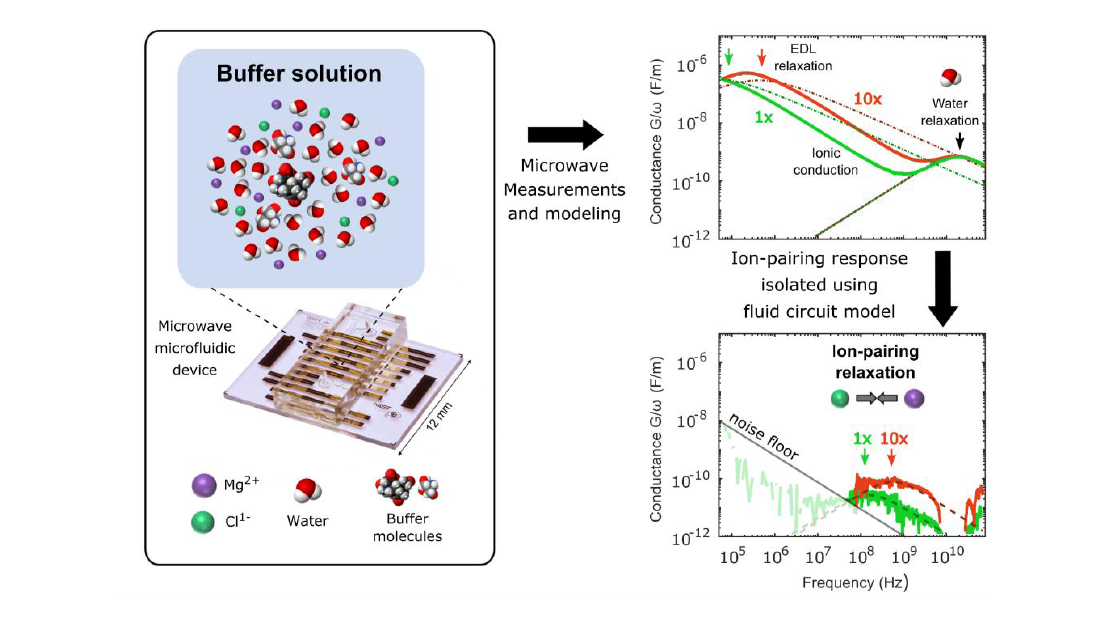
- Our microwave microfluidics device paired with on-chip calibrations enable admittance measurements of fluids over a six-decade frequency range (40 kHz to 67 GHz).
- We use our microwave microfluidics devices to characterize weak ion-pairing interactions in nanoliter volumes of common buffer solutions in situ and non-destructively.
- Buffer solutions are ubiquitous in biological systems and quantifying their electrical and ionic properties enables future studies of ion dynamics in biomolecular systems.
- These broadband measurements can inform more narrowband measurements of biological, biochemical, and pharmaceutical fluid systems, which may be more cost-effective and lead to real-time assessment of biological systems.
IMBioC Special Issue
Measurement of Ion-Pairing Interactions in Buffer Solutions with Microwave Microfluidics
Charles Little, Angela Stelson, Nathan Orloff, Christian Long, James Booth.
Abstract:Microwave microfluidic spectroscopy is an emerging technique for quantifying the frequency-dependent electrical response of fluids.

- Compensated mixed coupling coil (MCC) design is proposed and reduce the performance degradation caused by either lateral or angular misalignment
- Power transfer efficiency drops slightly even when lateral or angular misalignment occurs (almost flat angular misalignment for high resonant mode).
- For subcutaneously implantable devices, such as deep brain stimulator (DBS), a stable WPT power supply can be available to suppress the misalignment issues caused by motions.
- Not only frequency split issues is conquered, but also misalignment problems can be mitigated for by using dual frequency MCC for frequency shift keying modulation in wireless power and data transfer systems.
- Detailed MCC model design and optimization are proposed to predict and analyze the performance of WPDT systems.
Original Research Paper
Design of Dual Frequency Mixed Coupling Coils of Wireless Power and Data Transfer to Enhance Lateral and Angular Misalignment Tolerance
Tao-Cheng Yu, Wei-Hsiang Huang, Chin-Lung Yang.
Abstract:A dual-resonant mixed coupling structure is proposed to enable lateral and angular misalignment immunity in wireless power and data transfer systems.

- The proposed dual-band wireless capsule endoscopic (WCE) antennas utilize impulse radio (IR) signals to realize WCE medical image transmission with low attenuation in the MHz band.
- Through a rough estimation from the simulated and measured results, proposed antennas can realize a total data rate of 2.5 Mbps within 100 mm antenna distance if two antennas are aligned, or within 50 mm antenna distance if two antennas are misaligned to 60 mm.
- Potential medical applications include the diagnosis of the gastrointestinal tract (GI), in particular the ability to diagnose the entire small intestine area.
- Main contribution of this paper is the fabrication and measurement of a dual-band transmitting antenna that can be placed in the WCE capsule, and a modified receiving antenna that can be mounted on the abdomen of the human body for MHz band WCE medical image transmission.
- In addition, the increase of data rate will improve the received image quality, and MHz band communication will reduce signal attenuation and extend WCE battery life.
APS Special Issue
Dual-Band Antenna Design for Wireless Capsule Endoscopic Image Transmission in the MHz Band Based on Impulse Radio Technology
Yunxiao Peng, Kazuyuki Saito, Koichi Ito.
Abstract:Low frequency communication such as MHz band communication is a feasible method to reduce signal attenuation fromhuman body,

- This paper underlines the strong application potential of using high frequency electric fields and intracellular dielectric spectroscopy to identify, discriminate and isolate the highest aggressiveness and resistance cells from a tumor.
- This paper shows that significant cell UHF-DEP signature change can be measured between undifferentiated and differentiated cell subpopulations.
- In the frame of high recurrence cancer as Glioblastoma, emergence of new therapies able to target and neutralize highly tumorigenic cells is required with new approaches and technologies allowing fine characterization of such cells.
- Sensitive to cell dielectric specificities, UHF-DEP could provide an efficient and label-free solution for cellular analysis and aggressiveness potential diagnosis: an innovative and complementary marker to conventional biological phenotypic and functional characterizations.
IMBioC Special Issue
UHF-Dielectrophoresis Crossover Frequency as a New Marker for Discrimination of Glioblastoma Undifferentiated Cells
Remi Manczak, Sofiane Saada, Thomas Provent, Claire Dalmay, Barbara Bessette, Gaelle Begaud, Serge Battu, Pierre Blondy, Marie-Odile Jauberteau, Canan Baristiran Kaynak, Mehmet Kaynak, Cristiano Palego, Fabrice Lalloue, Arnaud Pothier.
Abstract:This article introduces the first results of dielectric spectroscopy characterization of glioblastoma cells; measuring their crossover frequencies in the Ultra High Frequency range (above 50 MHz) by dielectrophoresis technics.

- We present a novel, adaptive method, based on robust L1-LDA features, for indoor human motion recognition from micro-Doppler measurements.
- The proposed method exhibits remarkable resistance against training data corruptions (e.g., due to mislabelings), as well as the ability to adapt/improve as more labeled measurements from the subject of interest become available.
- The proposed method enables privacy-aware remote monitoring of patients and elderly for a variety of healthcare applications, including rehabilitation and aging-at-home.
- To the best of our knowledge, this work presents the first method in the literature for adaptive L1-LDA.
IMBioC Special Issue
Adaptive Radar-Based Human Activity Recognition with L1-Norm Linear Discriminant Analysis
Panos Markopoulos, Sivan Zlotnikov, Fauzia Ahmad.
Abstract:We present a novel radar-based indoor human gross motor activity classifier, which employs L1-norm Linear Discriminant Analysis (L1-LDA) to

- The first prototype RF head coil using Metamaterial Zeroth Order Resonator structure on a thin substrate for 10.5T MRI is discussed.
- This work is targeted for the development of an efficient RF coil for human head imaging at Ultra-High Magnetic fields.
- The coil utilizes a periodic structure that is physical length independent, has high unloaded to loaded Q-factor ratio, and is efficient for the RF coil applications
- The proposed coil is proven to be safe for clinical use and has a good coil efficiency.
IMBIOC 2017 Special Issue
Metamaterial Zeroth Order Resonator RF Coil for Human Head: Preliminary design for 10.5T MRI
Vijayaraghavan Panda, Lance Delabarre, Gregor Adriany, Thomas Vaughan, Anand Gopinath.
Abstract:The objective is to develop a highly efficient RF head coil on a thin substrate for the Ultra-high magnetic field MRI systems.

- A novel multistatic head imaging system utilising a software-defined radio, solid-state switching network, and static antenna array is proposed.
- The system is highly compact, lightweight, and inexpensive, attributes that could make it simple to transport to medical emergencies and could enable better accessibility for disadvantaged communities.
- Head imaging applications are the focus, with the system being verified using a simplified head phantom and targets emulating cancerous tumours and bleeds.
- The imaging accuracy of the proposed system is comparable to a Vector Network Analyser system using the same imaging algorithm, while greatly reducing size and cost.
- The system could produce images of the head phantom within less than a minute, making it feasible for use in time-critical applications.
Original Research Paper
Design of a Microwave Global Endometrial Ablation Device
Hojjatollah Fallahi, Punit Prakash.
Abstract:Endometrial ablation is a minimally invasive treatment employed for thermal coagulation of the endometrial lining of the uterus for treatment of menstrual heavy bleeding.

- The wireless neurosensing system (WiNS) offers a revolutionary implantable wireless fully-passive device, with an RF sensitivity of -135 dBm, for recording of cortical neural activation.
- The ability of this system to sense signals generated by the brain, with accuracy comparable to a wired system, is confirmed through a series of biopotential recordings.
- The target application of the neurosensing system is neuropathology research, mainly epilepsy studies along with possible brain-computer interfacing (BCI) and brain-machine interfacing for prosthesis control.
- Here, for the first time, this technology is used to record a series of electrophysiological signals in an actual animal; this not only validates our system but also opens the door for a spectrum of applications.
- An instrumental component to achieving the in vivo validation of WiNS was the development of low impedance probes to closely match the input impedance of the implant.
IMBioC Special Issue
Fully-Passive Wireless Implant for Neuropotential Acquisition: An In Vivo Validation
Carolina Moncion, Lakshmini Balachandar, Satheesh Bojja Venkatakrishnan; Jorge J. Riera, John Volakis.
Abstract:Implantable systems are often employed to perform continuous high-resolution recordings of neural activity.

- Using a wideband test setup of well-controlled impedance, both the lower and higher crossover frequencies for dielectrophoresis of a single biological cell was experimentally measured.
- The measured lower crossover frequency was found in general agreement with that calculated by using the Clausius-Mossotti function in conjunction with experimentally extracted cell characteristics such as membrane resistance and capacitance, as well as cytoplasm resistance and capacitance.
- New formulas were derived to evaluate the Clausius-Mossotti function from cell resistances and capacitances, instead of cell permittivity with assumed cell size and shape. The sensitivity of the crossover frequencies on the cell characteristics was analyzed, too.
- The measured higher crossover frequency was found lower than that calculated. The difference can be attributed to the field being highly nonuniform in single-cell dielectrophoresis, especially at higher frequencies. Additionally, with closely spaced electrodes in single-cell dielectrophoresis, adhesive force may have to be considered even for a relatively nonadherent Jurkat cell.
- The result suggests that the classical Clausius-Mossotti function, originally derived from the Maxwell-Wagner mixture model of a cell suspension, may not apply to single-cell dielectrophoresis in a straightforward manner, especially at high frequencies.
IMBioC Special Issue
Validation of Clausius-Mossotti Function in Wideband Single-Cell Dielectrophoresis
Xiaotian Du, Xiao Ma, Hang Li, Lei Li, Xuanhong Cheng, James Hwang.
Abstract:For the first time, both lower and upper crossover frequencies of the real part of the Clausius-Mossotti function were calculated by using cell parameters

- The diagnosis of lung diseases such as, for example, pneumothorax, requires a continuous tracking of their air/liquid content. This latter influences the conductivity value of the chest and it can be inferred in real-time by solving the EIT inverse problem through LBE methodologies.
- The conclusion in this manuscript is that, thanks to the numerical and comparative assessment, it is possible to state the LBE technique at hand yields instantaneous and robust conductivity predictions starting from a low size training set.
- The targeted biological and/or medical application is the continuous real-time tracking of the lungs ventilation/status for patients under mechanical ventilation in intensive care units.
- The significance/breakthrough of this work is the numerical assessment of the reliability and the effectiveness of the LBE technique at hand as applied to solve the EIT inverse problem in real-time to faithfully inferring the lungs status.
- The numerical assessment presented in this paper has proven that the LBE method at hand overcomes representative state-of-the-art techniques thanks to the joint exploitation of the noise-filtering capabilities of the PLS and of the adaptive generation/refinement of the training database.
APS Special Issue
Real-Time Electrical Impedance Tomography of the Human Chest by means of a Learning-by-Examples Method
Marco Salucci, Giacomo Oliveri, Andrea Massa.
Abstract:The real-time inversion of electrical impedance tomography (EIT) data for human chest monitoring is dealt with.

- The complete investigation of VO2 thin films interaction with extremely high frequency waves, as well as nanoparticles interaction with optical waves was conducted.
- The optical properties of VO2 nanosphere and size effect on these characteristics in insulator and metallic phases were investigated.
- VO2 in the form of nanoparticles and thin films reveals controllable properties. Thus, VO2 is a very proper material to use in sensors at different electromagnetic wave frequencies.
- The VO2 nanoparticles can be suggested as a heat transfer agent for cancer cells ablation or hyperthermia treatment.
- The intrinsic radiation of VO2 film in the 28-32 GHz band in the vicinity of metal-insulator phase transition was observed.
AIM Special Issue
Interaction of Optical and EHF Waves with VO2 Nanosized Films and Particles
Alexander P. Kamantsev, Victor V. Koledov, Vladimir G. Shavrov, Dmitriy S. Kalenov, Mikhail P. Parkhomenko, Svetlana V. von Gratowski, Nooshin V. Shahmirzadi, Tavakol Pakizeh, Artemy V. Irzhak, Vladimir M. Serdyuk, Iuliia P. Novoselova, Anton A. Komlev, Andrey E. Komlev, Dmitriy A. Kuzmin, Igor V. Bychkov.
Abstract:In this paper VO2 film on quartz substrate was prepared and investigated in extremely high frequency (EHF) band 27–37 GHz.

- This paper proposed a new biolabeling system using ferromagnetic resonance properties of multiple magnetic nanowire types for in-vitro cancer type diagnosis.
- The exterior biofunctionalization that bonds ligands to specific cell types enables multiplexed cell labeling; while the intrinsic FMR properties of MNWs enables the spontaneous identification of multiple labels.
- The feasibility of the proposed biolabeling system is validated by applying the same MNW characterization and identification approach on MNW array measurements.
- The work confirms that distinct FMR signals can be detected in a mixed system of individual nanowire types using through transmission response. To account for low FMR signals and close FMR B-field spacing, a fitting algorithm can be used to validate the presence of the specific material types.
- This proposed biolabeling system has the capability to expand cancer cell detection throughput and reduce processing time; it can also be combined with other labeling methods to enhance the testing range of the current methods.
IMBioC Special Issue Paper
Development of a Biolabeling System Using Ferromagnetic Nanowires
Wen Zhou, Joseph Um, Yali Zhang, Alexander Nelson, Zohreh Nemati, Jaime Modiano, Bethanie Stadler, Rhonda Franklin.
Abstract:This paper presents the development of a biolabeling system using different ferromagnetic nanowire types.

- A versatile magnetic exposure system able to reach intensities in the order of mT has been theoretically designed, with the aim of using it for different biomedical applications of low intensity magnetic fields, from a few Hz to 20 kHz.
- The biological applications for which this exposure system has been designed are very different: a cuvette for drug delivery applications; a chamber for ex vivo experiments on brain slices, and a rat phantom for in vivo animal studies.
- The system is designed to reach a magnetic field of 1.4 mT with a homogeneity of 95% in the volume between the coils where the target will be placed.
- The novelty of the proposed exposure system mainly relies on its versatility, which permits in vitro, ex vivo and in vivo laboratory experiments in a wide frequency range and with negligible thermal increase induce.
AIM Special Issue Paper
A Versatile Magnetic Exposure System for In-Vitro, Ex-Vivo and In-Vivo Experiments Finalized to Therapeutic Applications in the IF Range
Elena Della Valle, Micaela Liberti, Francesca Camera, Alessandra Paffi, Stefania Petralito, Vincenzo Roncace, Costanza Burattini, Giorgio Aicardi, Francesca Apollonio.
Abstract:The use of magnetic fields in therapeutic applications has considerably increased in recent years.

- A compact, multi-purpose broadband architecture for integrated complex permittivity sensors, utilizing a patch element and a multiharmonic downconversion for fast and energy-efficient readout.
- The architecture can be embedded in systems performing GHz frequency range permittivity footprint measurement for material characterization as well as permittivity imaging.
- Applications range from traditional clinical and point-of-care scenarios to the increasingly emerging area of wearable devices. Examples include in-vivo tissue hydration monitoring, label-free malignant tissue inspection as an assisting tool in removal surgery, evaluation of drug penetration through skin and blood
glucose concentration measurement. - The proposed sensor readout core has the smallest known area and is the first to demonstrate permittivity imaging capabilities at microwave frequencies.
IMBioC Special Issue Paper
Miniaturized Broadband Microwave Permittivity Sensing for Biomedical Applications
Gerasimos Vlachogiannakis, Zhebin Hu, Harshitha Thippur Shivamurthy, Andrea Neto, Michiel A.P. Pertijs, Leo de Vreede, Marco Spirito.
Abstract:We present a compact, scalable and broadband architecture for the implementation of complex microwave permittivity sensors in CMOS technology.

- We derive and test the two-dimensional discrete dipole approximation (2D DDA) method for use in microwave imaging.
- The two-dimensional electric field forward solution of the microwave imaging system is numerically simulated for a simplified breast tumour model, and it has been compared to finite element solution using COMSOL Multiphysics.
- Sufficient sampling size for the imaging domain of our microwave breast imaging has been proposed for which the solution accuracy with respect to the sampling, inclusion, size, and property contrast has been demonstrated.
- The simulation results and the measurements show good agreement and we conclude that we can utilize the 2D discrete dipole approximation as an alternative, fast and reliable forward solver for microwave tomography.
APS Special Issue Paper
Application of Two-Dimensional Discrete Dipole Approximation in Simulating Electric Field of a Microwave Breast Imaging System
Samar Hosseinzadegan, Andreas Fhager, Mikael Persson, Paul Meaney.
Abstract:The two-dimensional electric field distribution of the microwave imaging system is numerically simulated for a simplified breast tumour model.

- The magnetic fields exposure device was newly designed and produced for generating magnetic fields in a CO2-incubator culturing of human cells.
- The results suggested that 60 Hz, 50 mT magnetic fields enhance the efficacy of anticancer drug to human cancer cells.
- Three types of anticancer drugs used in this study are affected differently by the magnetic fields. The magnetic fields increase the effects for all the drugs, by which the numbers of viable cells are decreased by 40% than those with only the drugs alones.
- If our finding can be applied clinically, magnetic fields exposure to cancer site might allow for an effective target chemotherapy, reducing dosage and suppressing side effects.
Original Research Paper
Combined Effect of 60 Hz Magnetic Fields and Anticancer Drugs on Human Hepatoma HepG2 Cells
Makiko Kakikawa, Tetsuya Maeda, Sotoshi Yamada.
Abstract:Our previous data using bacterial cells Escherichia coli, have showed that 60 Hz, 50 mT magnetic fields enhance the potency of antibiotics.

- We present an easy-to-use, portable, autonomous RF electronic readout circuit as a first proof-of-concept for a passive biosensor network platform that integrates passive acoustic wave biosensors and their remote interrogation.
- The acoustic device can detect low-weight biochemical targets in low-volume samples and represents an important step toward a biosensor network platform for cancer diagnosis and monitoring of environmental health.
- The association of a Love wave device with functionalized porous matrices could improve the performance of the sensor in biological media for highly sensitive detection of low weight molecular targets while facilitating the development of an easily regenerable system.
- The main innovation is related to the modelling of the device and simulation using the Finite Element Method (FEM), which is a good way to take into account the physical properties of porous 3D-layers which would also make it possible to design very sensitive layers adapted to the detection targets, such as cancer bio-markers and toxins.
- This novel approach has potential applications low molecular weight biochemical detection for early cancer diagnosis and environmental monitoring, among others.
IEEE Sensors Special Issue
Mesoporous titania-coated biosensor and FEM model design for highly sensitive detection of low molecular weight targets
Ollivier Tamarin, Hamida Hallil Abbas, Wassim Ouelhazi, Maxence Rube,Jean Luc Lachaud, Vincent Raimbault, Cedric Boissiere, Marie Paule Bonnet,Dominique Rebiere & Corinne Dejous.
Abstract:This paper presents the interest of a highly sensitive biosensor coated with a TiO2 mesoporous film as sensitive layer.

- The developed EM model for human motions creates repeatable and realistic reference data which when coupled with the signal processing technique can be useful for obtaining a full understanding of human limb joint motion analysis.
- The proposed method is successful in extracting different limb joint trajectories from a complex human motion but with some limitations such as difficulty in tracking hands for a walking subject and reliance on reference data to identify the desired motion details.
- The targeted applications of this work are treating patients with joint problems, athlete performance analysis, motion classification, and so on.
- The significance of this work is the development of a limb joint tracking technique suitable for use with low cost and simple Doppler radar in a typical non-controlled environment.
- A by-product of this work is the use of a portable and flexible software-defined transceiver system as the Doppler radar utilized in the experiments.
Original Research Paper
Non-Contact Human Gait Analysis and Limb Joint Tracking Using Doppler Radar
Farhan Quaiyum, Nghia Tran, Jean E. Piou, Ozlem Kilic, Aly Fathy.
Abstract:A full understanding of normal motion from human limb joint trajectory tracking could be essential to develop and establish a scientific basis for correcting any abnormalities.

- Tissue constituents, air and water can be used as inputs to dielectric mixture models to predict dielectric properties of liver and lung at different hydration and inflation states, respectively.
- Maxwell mixture theory is more successful than Maxwell-Fricke mixture theory for tissue dielectric property modelling in both low and high water content tissues.
- Mixture models can be coupled with Debye and Cole-Cole equations to construct wideband tissue dielectric property models that can be used for multiple tissue types that have various water contents as well as different hydration states of the same tissue.
- These models will potentially increase the accuracy of microwave ablation simulations of liver and lung by accounting for changes in tissue constituents due to temperature elevation and water vaporization.
IMBioC 2018 Special Issue
Development of Water Content Dependent Tissue Dielectric Property Models
Sevde Etoz, Christopher L. Brace.
Abstract:We propose dielectric tissue property models dependent on both water and air content covering the microwave frequency range.

- High magnetic field magnetic resonance imaging requires a new look at radio frequency structures for excitation and reception of the imaging signals from nucleons. This paper provides an overview of some of the current work being done for high frequency, high magnetic field magnetic resonance imaging.
- New transmit and receiver structures are utilizing electromagnetic phenomenon rather than simple inductive effects as the frequency increases and wavelength (λ) decreases, allowing the use of metamaterials and wireless technologies.
- These new radio frequency structures will provide enhanced signal to noise ratio, leading to increased contrast and higher resolution images
- Improved, high resolution images will lead to better medical diagnoses.
IMBioC 2018 Special Issue
RF Aspects of High and Ultra High Field Magnetic Resonance Imaging [(U)HF-MRI]: Recent Advances
Robert Caverly.
Abstract:High field magnetic resonance imaging (HF-MRI) brings superior imaging with high contrast and signal to noise ratio (SNR).

- This paper presents a new method to increase the robustness and accuracy of Doppler radar-based vital signs monitoring sensors.
- It is shown that using the chest wall acceleration signal yields a better result compared to the chest wall displacement. The heartbeat rate detection accuracy is improved by more than 10% on average.
- A novel mathematical representation for the heartbeat mechanical signal is provided. The model is quite useful in the analysis and understanding of the human heartbeat vibration on the chest wall.
- The new model also confirms our observation that the chest wall acceleration provides a higher detection accuracy than its displacement.
IMBioC 2018 Special Issue
Accurate Doppler Radar-Based Cardiopulmonary Sensing Using Chest-Wall Acceleration
Mehrdad Nosrati, Negar Tavassolian.
Abstract:This paper presents the theory and experimental results of a new method to significantly increase the detection accuracy of the human heartbeat rate using a continuous-wave Doppler radar.
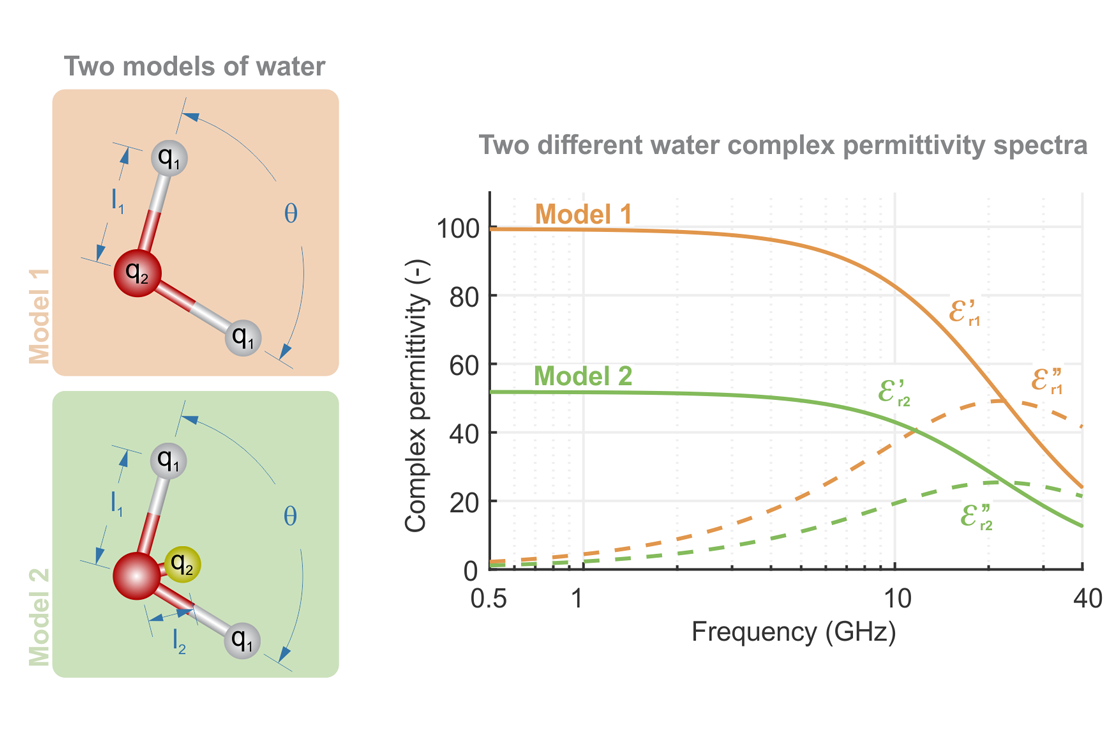
- Virtual dielectric spectroscopy of biomolecular samples is possible using computation methods.
- Molecular models of water affect complex permittivity predicted by molecular dynamics simulations.
- Our method enables rationalization of microwave biosensor design.
- Molecular dynamics simulation predicts and interprets complex permittivity of biosamples.
IMBioC 2018 Special Issue
Water models in molecular dynamics simulation prediction of dielectric properties of biomaterials
Michal Cifra, Jiri Prusa, Daniel Havelka, Ondrej Krivosudsky.
Abstract:To develop and reliably use diagnostic and therapeutic methods employing microwaves, we need to have an accurate knowledge of biological dielectric properties.

- TWRI systems can remotely monitor thieves or robbers inside a building or subjects under the rubble.
- Delay and sum (DAS) and range migration (RM) algorithms are among the most used techniques for image reconstruction and in this paper their pros and cons are investigated.
- The two inversion algorithms have been compared based on analytical, numerical and experimental data acquired for realistic scenarios.
- DAS and RM have similar resolution and dynamics with the former having a better field of view and the latter being faster.
IMBioC 2018 Special Issue
Comparison between Delay and Sum and Range Migration Algorithms for Image Reconstruction in Through-the-Wall Radar Imaging Systems
Stefano Pisa, Emanuele Piuzzi, Erika Pittella, Paolo D’Atanasio, Alessandro Zambotti, Giulia Sacco.
Abstract:Through-the-wall radar imaging (TWRI) systems allow police, fire personnel and defense forces to detect, identify and track subjects inside buildings or under rubble.

- The electromagnetic behaviour of a radiator has been coupled with two other physical phenomena, and with a space-dependent blood perfusion model of a tumor, to better understand the role of each process and how they relate together to accomplish an hyperthermia tumour therapy.
- The proposed multi-physic analysis based on the blood perfusion model is an efficient solution to have a deep insight on the hyperthermia treatment.
- This work can be a powerful supporting tool in oncology applications where the hyperthermic treatment is often used as adjuvant therapy alongside with radiotherapy and chemotherapy.
- To the best of the authors’ knowledge, this is the first time that a complete analysis on the coupling of physical phenomena for a hyperthermia application of a tumour based on a realistic blood perfusion model has been done.
Original Research Paper
A Blood Perfusion Model Of A RMS Tumor In A Local Hyperthermia Multi-Physic Scenario: A Preliminary Study
Giacomo Muntoni, Alessandro Fanti, Giorgio Montisci, Marta Muntoni.
Abstract:Hyperthermia concerns about the heating treatment of cancerous tissues, mostly using a radiator, i.e. an antenna, as a heat source.

- What are the innovative features of utilizing electromagnetics for biomedical applications in this manuscript, in one sentence?
Infrared transmission and Radio-Frequency backscattering techniques are combined to enable batteryless and wireless brain implants with multi-channel capabilities.
- What is the conclusion in this manuscript, in one sentence?
We demonstrate the first-ever batteryless and wireless multi-channel brain implant with sensitivity as high as 20 μVpp at all channels
- What are the targeted biological and/or medical applications, in one sentence?
Unobtrusive monitoring of deep brain signals may significantly improve the individual’s physical and mental well-being for patients with epilepsy, Alzheimer’s, Parkinson’s, and more.
- What is the significance/breakthrough of this work?
Deep brain signals from multiple locations within the brain can now be concurrently recorded via batteryless and wireless implants.
- Accomplishments in this manuscript you would like to highlight that are not mentioned above, for our readers, in one sentence?
As compared to previous batteryless multi-channel brain implants, the proposed design exhibits 28 times higher sensitivity, 2 times smaller footprint, and improved scalability.
2018 APS Special Issue
A Multi-Channel Passive Brain Implant for Wireless Neuropotential Monitoring
Wei-Chuan Chen, Cedric W. L. Lee, Asimina Kiourti, John L. Volakis.
Abstract:We propose a novel multi-channel (8 channels) passive neuro-sensing system for wireless acquisition of brain signals as low as 20 μVpp.

- A dielectric coat, if properly designed, may reduce the electromagnetic interaction between an elongated metallic prosthesis and the Magnetic Resonance Imaging (MRI) radiofrequency (RF) antenna moderating the RF-artefact rise at 64 MHz and 128 MHz.
- We described, by means of an equivalent circuit, the interaction between the MRI RF-antenna and an elongated metallic prosthesis explaining the optimal relation between the thickness and electric permittivity of a coat whose aim is to reduce the rise of RF-artefacts in an MRI exam.
- The targeted biological and medical applications are the elongated metallic prostheses worn by patients subjected to an MRI exam.
- An electromagnetic cloaking application tailored on a specific MRI field is introduced. The obtained results represent a key point for the design and realization of a coat material at 128 MHz whose effects are to strongly reduce the interaction between a metallic elongated prosthesis and the RF MRI antenna. Furthermore, results obtained at 64 MHz suggest that it is possible to cover a generic hip prosthesis through a proper ordinary biocompatible material to achieve the desired effects.
2018 AIM Special Issue
A Near Field Cloaking Study to Reduce MRI RF-Artefacts in Presence of Elongated Prostheses
Umberto Zanovello, Luca Zilberti, Ladislau Matekovits.
Abstract:Objective: To analyze a near-field electromagnetic cloaking to reduce the radiofrequency (RF) magnetic field inhomogeneities

- Deep Transcranial Magnetic Stimulation (dTMS), administered through H4 coil, has been recently proposed for the addiction treatment and it’s aimed to stimulate bilaterally the prefrontal cortex and to activate the reward pathway.
- Computational electromagnetic models help in gaining knowledge on the mechanism laying behind neurostimulation, by providing a detailed electric field distribution induced in cerebral tissues.
- Simulations demonstrates that H4 induces the highest electric fields at cortical level, targeting preferentially prefrontal cortex and the anterior cingulate cortex and then supporting its use for addiction treatment.
- This work represents, in contrast with prior works based on homogenous tissue phantoms, a powerful and informative tool for both planning, optimization and outcomes evaluation of clinical protocols based on dTMS systems for addiction treatment.
- Deep TMS coil H4 can be specifically used to target cortical and subcortical structures involved in food craving related disorders.
2018 AIM Special Issue
Deep transcranial magnetic stimulation for the addiction treatment: Electric field distribution modeling
Serena Fiocchi, Emma Chiaramello, Livio Luzi, Anna Ferrulli, Marta Bonato, Yiftach Roth, Abraham Zangen, Paolo Ravazzani, Marta Parazzini.
Abstract:Deep Transcranial Magnetic Stimulation (dTMS) is a neurostimulation technique for deep brain structures that has recently been successfully applied in the clinic for treatment of addiction.

- A full-scale computer-based optimization of a system of permanent magnets for magnetic drug targeting is presented.
- A new methodology for designing magnetic drug targeting systems is proposed.
- Our methodology can be employed in any medical application which uses magnetic drug delivery.
- The presented methodology of magnetic drug targeting optimization can be applied to systems where the placement of permanent magnets in close proximity to the targeted organ or tissue is complicated or even impossible.
- Further optimization of the magnetic system is necessary based on the desirable configuration of the magnetic force field in the subject of study.
2018 AIM Special Issue
Magnetic Targeted Drug Delivery to the Human Eye Retina: an Optimization Methodology
Sergey Erokhin, Dmitry Berkov.
Abstract:We present a new optimization method for permanent magnet systems aimed for magnetic targeted drug delivery.

- Subdermal (tattoo) antennas made from gold nanoparticle ink may be used to create antennas at the body surface which could be used to re-radiate telemetry signals from a smaller, implantable device.
- Current research in polymer engineering is moving towards materials that can be injected as fluids that turn to soft, conductive solids at body temperature; this paper anticipates using these materials for tattooed subdermal antennas.
- Even with voids, typical of what would occur with a subdermal tattoo, the antennas can still be effective, as shown from comparing the current distributions for solid, mesh, and segmented strip dipoles
- Measurements confirm the feasibility of subdermal antennas.
2017 APS Special Issue
A Comparison of Solid, Mesh, and Segmented Strip Dipoles in a Subdermal Environment
Andrew Chrysler, Kaitlin L. Hall, Cynthia M. Furse.
Abstract:The objective of this paper is to evaluate the feasibility of subdermal (tattoo) antennas in the fat layer, which use the low conductivity of the fat to electrically insulate a dipole antenna.

- This paper presents critical-path characterizations of implantable electrode arrays for next generation neural interfacing circuits, laying the foundation for fully implantable electrode characterization.
- Implantable electrode arrays have a substantial increase in noise and impedance when implanted with additional low-frequency biological noise unexplained by local cortical activity.
- These characterizations provide a foundation for advanced neural interfacing circuits that will require wideband noise and impedance characterizations currently unavailable in the literature.
- Detailed characterizations of the Tucker-Davis Technologies microwire array and the Utah electrode array have been presented, particularly for wide-band applications. Typical characterizations cite impedance only at 1 kHz, but this is not descriptive of the wide-band characteristics nor the low frequency noise and are thus insufficient for neural interfacing circuit design.
IEEE Sensors 2017 Special Issue
Impedance and Noise Characterizations of Utah and Microwire Electrode Arrays
Avery Tye Gardner, Hunter S. Stratham, David J. Warren, Ross M. Walker.
Abstract:This work presents an in-depth noise and impedance characterization of two of the most widely used microelectrode arrays

- High energy transfer efficiency and wide coverage range are desired to power implanted medical devices (IMDs) with wireless power transfer (WPT) systems.
- A 200 mm × 300 mm rounded rectangular transmitting coil and a double-layer circular receiving coil with an outer diameter of 24 mm have been optimized for a 2-coil IMD-WPT system.
- With the optimized coils, experimental results show that high energy efficiency higher than 40% can be achieved even the implanted receiver is located deep in the body with a wide coverage range of 18 cm × 10 cm.
2018 WPT Special Issue
Optimized Design of Coils for Wireless Power Transfer in Implanted Medical Devices
Yufeng Zeng, Dongyuan Qiu, Xiangtian Meng, Bo Zhang, Sai Chun Tang.
Abstract:Implanted medical device (IMD) wirelessly powered by magnetic resonant coupling has attracted wide attention recently.

- The developed numerical workflow is appropriate for evaluating power deposition and temperature rise on electrodes of a coax lead located in a homogeneous medium in appliances with ISO/TS 10974 Tier4.
- Small lead electromagnetic model uncertainty does not require that the spatial distribution of power deposition and temperature rise in close proximity to lead electrodes be independent on an incident electric field.
- Determination of the hot spots described in Clause #8 of ISO/TS 10974 Ed2 can depend on the end user’s selection of pathways, that is, variety of incident tangential electric field applied during investigation, the use of specific absorption rate or temperature rise quantities, as well as the duration of RF-induced heating when the approach based on temperature rise is used.
- The power injection approach based on the comparison of temperature increase along the lead tip electrode axis can result in substantial underestimation or overestimation of the power deposition around the lead tip electrode, as well as maximum temperature rise in close proximity to the tip electrode, ring electrode, or both.
Original Research Paper
Lead Electromagnetic Model to Evaluate RF-Induced Heating of a Coax Lead: A Numerical Case Study at 128 MHz
Mikhail Kozlov, Wolfgang Kainz
Abstract:One of the major components of magnetic resonance imaging safety for patients with an active implantable medical device is the evaluation of in vivo radio frequency induced heating of tissue near a lead electrode, which can result in tissue damage.

- Functionalization of bone scaffolds using magnetic nanoparticles allows hyperthermia of bone tumors in an effective way.
- The possibility of employing innovative magnetic scaffolds as therapeutic tool in orthopaedic oncology is analyzed via numerical simulations. Using a Cole-Cole model, non-linear material properties are evaluated to define external field parameter to perform an effective treatment for bone tumors such as Fibrosarcoma and Osteosarcomas.
- Accurate electromagnetic and thermal modeling of scaffolds and nanoparticles, in the whole range of involved temperature, is required to design effective and safe treatments.
- Different tumoral tissues and qualitative features such as the presence, size and type of surgical fracture, affect in a significant way the hyperthermia treatment.
2017 APS Special Issue
Numerical Investigation Of Bone Tumer Hyperthermia Treatment Using Magnetic Scaffolds
Alessandro Fanti, Matteo Bruno Bruno Lodi, Giuliano Vacca, Giuseppe Mazzarella.
Abstract:This works claims to define, via numerical simulations, magnetic field parameters to perform an effective in situ bone tumor hyperthermia treatment using magnetic scaffolds.

- We propose an experimental-computational technique for low frequency dosimetric assessments that reduces the experimental burden while maintaining accuracy and robustness.
- The proposed technique can be used when the magnetic source is unknown or not suitable to be modeled.
- By adopting surface measurements, the proposed technique allows to characterize any low frequency magnetic source in a very convenient way.
- By adopting the boundary element method for extrapolating surface measurements as well as a curl inversion operator for magnetic vector potential evaluation, the proposed technique significantly reduces the noise from the input data.
- The positive features of the proposed technique have been put in evidence by testing it in a transcranial magnetic stimulation dosimetric application.
Original Research Paper
Computational Low Frequency Electromagnetic Dosimetry Based on Magnetic Field Measurements
Alessandro Arduino, Oriano Bottauscio, Mario Chiampi, Ilkka Laakso, Luca Zilberti.
Abstract:This paper compares different experimental-computational strategies for the estimation of electric fields induced in human bodies by low frequency magnetic sources

- Core@shell Fe-oxide@SiO2 nanoparticles: a system for delivering heat selectively to cancer cells through an alternating electromagnetic field. This study provides a critical, anatomy-informed dielectric study of the properties of the bladder.
- The most effective heat transfer is obtained through a maximisation of the energy losses: a careful investigation of the nanoparticles system is required to comply with the constraints imposed by hyperthermia applications.
- An almost superparamagnetic system that minimises magnetostatic interactions (e.g. agglomeration) while keeping dynamic hysteresis losses for heat delivery.
2018 AIM Special Issue
Magnetic and Thermal Characterization of Core-Shell Fe-oxide@SiO2 Nanoparticles for Hyperthermia Applications
Gabriele Barrera, Marco Coïsson, Federica Celegato, Elena Sonia Olivetti, Luca Martino, Ivana Miletto, Paola Tiberto.
Abstract:Nanoparticles for magnetic hyperthermia pose significant constraints in their size and composition to ensure cellular uptake and biocompatibility,

- In MIMO wireless systems, multiple antenna elements are adopted to work as transmitter and receiver to improve capacity such as the enhancement in the data transmission rates of high resolution images from the capsule to outside base station/gateway.
- The proposed four-element implantable MIMO antenna features a wide impedance bandwidth of 18.64% (2.14–2.58 GHz) with a maximum gain of –15.18 dBi, and has the compact dimensions of 18.5 mm × 18.5 mm × 1.27 mm. The mutual coupling between different antenna elements is less than –15.99 dB.
- The ex-vivo measured results illustrate a merit agreement with the simulated ones in a three-layer phantom. The radiation characteristic of the designed antenna follows the healthy protection standards, and the performance of diversity and far-field link budget indicates merit channels characteristics.
2017 APS Special Issue
A Miniaturized Four-Element MIMO Antenna with EBG for Implantable Medical Devices
Yi Fan, JinHong Huang, TianHai Chang, Xiongying Liu.
Abstract:A miniaturized four-element multiple-input-multiple-output (MIMO) antenna operating in the band of In-dustrial, Scientific, and Medical (ISM) 2.4-2.48 GHz, is investigated to supply sufficient transmission rate and fight against multipath fading.

- Accurate knowledge of the dielectric properties of tissues is the basis for electromagnetic (EM) medical device design, development, and optimisation, and therefore, lack of knowledge on the dielectric properties of the bladder is a stumbling block for the application of bladder-related technologies, including EM therapeutic and diagnostic tools.
- This study provides a critical, anatomy-informed dielectric study of the properties of the bladder.
- Through a large number of tissue measurements, this study examines for the first time the impact of the dielectric properties of the bladder in light of common measurement confounders (time from excision, temperature), and uniquely examines the properties of both the inside and the outside of the bladder wall.
- This study provides reliable dielectric data of the bladder over the microwave frequency range, and fitted dielectric models, that can be used to support the design of bladder-related medical technologies.
- This study has been performed in line with modern best practices standards for the reporting of experimental metadata along with experimental data, and the data and metadata will be made openly available online.
Original Research Paper
Characterisation of the Dielectric Properties of the Bladder over the Microwave Range
Emily Porter, Saqib Salahuddin, Alessandra La Gioia, Adnan Elahi, Atif Shahzad, Arun Kumar, David Kilroy, M. O’Halloran,
Abstract:The dielectric properties of tissues characterise the interaction of electromagnetic fields with the body. Accurate knowledge of these properties facilitates the design of effective electromagnetic-based

- This paper presents the design and the implementation of an on-chip magnetoresistive sensors array for cell detection and localisation. Giant magnetoresistance (GMR) sensors have been used due to their high sensitivity and resolution.
- A novel calibration and localisation algorithm has been coded and implemented. In order to generate the required homogenous magnetic field, a custom 3D printed Hallbach cylinder has been simulated and characterised.
- Sensory chips could detect an average magnetic sensitivity of 2 V/T at room temperature.
- The ferrofluid and a customised 3D printed Halbach cylinder were employed to simulate the magnetic field change in the cell.
- The implemented algorithm helps in achieving high sensitivity and positioning speed, also thanks to an accurate calibration of the GMR sensors.
2017 IEEE Sensors Special Issue
Magnetoresistive Biosensors for On-Chip Detection and Localisation of Paramagnetic Particles
Zhaochen Yin, Edoardo Bonizzoni, Hadi Heidari
Abstract:This paper presents the design and the implementation of an on-chip magnetoresistive sensors array for cell detection and localisation.

- An insulated cable implanted in a lossy material and submitted to a radiated radiofrequency field can be modeled by a modified transmission line with a distributed excitation along the line.
- This model gives a better physical insight into the problem of the compatibility of implanted cables in Magnetic Resonance Imaging (MRI) such as pacemaker, defibrillator or neurostimulator leads.
- This work shows the equivalence between the transfer function model usually used to model the interaction of an implanted lead with the radiofrequency field of MRI and the modified transmission line model.
- An idea that can be derived from this model is to reduce the heating at the electrode of an implanted lead by creating a big reflection coefficient before the end of the lead using a multi-section approach
Original Research Paper
Transmission Line Model Of An Implemented Insulated Cable For Magnetic Resonance Imaging Radiofrequency Hazard Evaluation
Alexia Missoffe, Julie Kabil, IADI, Pierre-Andre Vuissoz, Jacques Felblinger
Abstract:This work demonstrates that one can model the power deposited at the electrode of an implanted insulated cable submitted to the radiofrequency field of a 1.5 T Magnetic Resonance Imaging modality (64MHz) with a transmission line model.

- This paper proposes a 2×2 magnetic resonance charging system considering both magnetic transmit beamforming and receive beamforming for charging wearable medical devices.
- Both numerical results and simulation results in COMSOL model are provided to demonstrate the effectiveness of the proposed system and optimization algorithm.
- The target medical applications are wearable medical devices using for Alzheimer’s disease, ergonomics, rehabilitation and neurology which are inconvenient or sometimes infeasible to replace or change batteries for the elderly or patients.
- Such a magnetic resonance charging system provides a promising way to make wearable medical devices permanently unplugged.
2018 WPT Special Issue
Magnetic Transceiver Beamforming for A 2 × 2 Magnetic Resonance Charging System
Xiaoqing Liu, Bingqing Mei, Xiaodong Wang, Zhigang Wen
Abstract:In this paper, we consider a magnetic resonance charging system consisting of two transmit coils and two receive coils that is designed to wirelessly charge

- This work analyses the sensing radius of a coaxial probe for accurate dielectric characterisation of heterogeneous tissues.
- The probe sensing radius can be smaller than the probe radius and depends on the histology of the tissue sample.
- Accurate knowledge of the sensing radius has the potential for improving the design of novel microwave imaging devices and hyperthermia systems.
- This work demonstrates that a lack of knowledge of the probe sensing radius leads to errors in the interpretation of dielectric data acquired from heterogeneous tissues, and thereby to inaccurate medical device design.
- Despite the assumption made in previous dielectric studies, this work shows that the dielectric contribution of a particular tissue depends on both its location within the sensing volume and its dielectric properties.
IEEE APS Special Issue
Quantification of the Sensing Radius of a Coaxial Probe for Accurate Interpretation of Heterogeneous Tissue Dielectric Data
Alessandra La Gioia, Saqib Salahuddin, Martin O’Halloran, Emily Porter
Abstract:Accurate tissue dielectric measurements are crucial for the development of electromagnetic diagnostic and therapeutic devices that are designed based on estimates of the dielectric properties of diseased and healthy tissues.
IEEE APS Special Issue
Real-time Microwave Imaging of a Compressed Breast Phantom with Planar Scanning
Daniel Tajik, Farzad Foroutan, Denys S. Shumakov, Aaron D. Pitcher, Natalia K. Nikolova
Abstract:Two real-time reconstruction algorithms, quantitative microwave holography and scattered-power mapping, have been shown to be successful in the imaging of compressed tissue of

- What are the innovative features of using electromagnetics for biomedical applications in this manuscript (in one sentence)? The modulation of light reflected by optical gratings is used to measure temperature changes during laser ablation for cancer removal.
- What is the conclusion drawn in this manuscript (in one sentence)? Carbon fibers based on fiber Bragg gratings allow performing distributed temperature monitoring during image-guided laser ablation.
- What are the targeted biological and/or medical applications (in one sentence)? The medical application here presented is the laser ablation therapy for cancer removal in soft organs, e.g., liver.
- What is the significance/breakthrough of this study? This study brings useful tools for real-time monitoring of laser ablation effects.
- What are the accomplishments you would like to highlight in this manuscript to our readers (which are not mentioned above, in one sentence)? As confirmed by tests in the presented pre-clinical scenario, the proposed probe is suitable for temperature monitoring during CT-guided laser ablation, and no artifact is produced on the diagnostic images.
IEEE Sensors 2017 Special Issue
Solutions to improve the outcomes of thermal treatments in oncology: multi-point temperature monitoring
Emiliano Schena, Federico Davrieux, Paola Saccomandi, Daniele Tosi, Riccardo Gassino, Carlo Massaroni, Daniela Lo Presti, Guido Costamagna, Guido Perrone, Alberto Vallan, Michele Diana, Jacques Marescaux
Abstract:Over the last few decades, minimally invasive treatments have gathered a large interest as alternatives to surgical resection.

- The reported work utilizes an open-stub as the sensing element, demonstrates a fully integrated complex dielectric sensor in K-band frequencies and results in flexible DC output.
- The proposed sensor can be useful as a compact, label-free and low-power all-electrical sensing approach for relative dielectric sensing of biological and chemical materials with minimal invasion.
- It can offer continuous glucose monitoring, human body hydration sensing as implants or wearable device, also it can be useful as a lab-on-a-chip for DNA sequencing, malignant cell growth observation, cell cultivation monitoring etc.
- The sensor demonstrates complex permittivity within 3.7% accuracy for the real part and 4.3% for the imaginary part for dielectric chemical samples like methanol and ethanol.
IMBIOC 2017 Special Issue paper
A Fully Integrated Low-Power 30 GHz Complex Dielectric Sensor in a 0.25-μm BiCMOS Technology
Farabi Ibne Jamal, Subhajit Guha, Mohamed Eissa, Jan Wessel, Dietmar Kissinger
Abstract:This paper presents an integrated low-power dielectric sensor in K-band frequencies implemented in a 0.25 μm SiGe BiCMOS process including the sensing front-end and readout circuits.

- Invasive surgery is a problem for biomedical implants due to infection at the incision site and reactions to anesthesia.
- The use of stents embedded with electronics is an attractive alternative method for implanting minimally invasive biomedical devices via angiographic catheter delivery.
- The use of stents precludes batteries. Hence, wireless power transfer to the device is a requirement.
- This work employs inductive and capacitive coupling to demonstrate two different methods for transferring power to a stent-based biomedical device safely. The ideal power transfer method depends on the location of the implant.
- Such devices could be used to monitor biological indicators and vital signs such as blood pressure, blood glucose and even neural signals.
Original Research Paper
Near Field Wireless Power Transfer to Stent-Based Biomedical Implants
Ammar Aldaoud, Jean-Michel Redoute, Kumaravelu Ganesan, David Garrett, Steven Prawer
Abstract:Safe wireless power transfer is an essential requirement for biomedical implants. Emerging technologies are becoming smaller, less invasive and consuming less power.

- In this paper, a low-cost super-tiny senor node with temperature sensing function is presented together with fully integrated mm-wave frequency wireless power transfer technique in 65 nm CMOS technology, which can increase temperature monitoring accuracy for a tiny location such as a solution for low-cost disposable skin sensor.
- In this paper, a mm2 sized, low cost and no battery sensor with temperature sensing is achieved in a 65 CMOS technology which can be applied in medical treatment.
- In this paper, the sensor node is targeted at the low-cost, low-sized, disposable sensing application in medical/biological.
- This paper presents an mm-wave wireless powered sensor node which is fully integrated in a CMOS technology, including on-chip antenna, on silicon mm-wave wireless power receiver, energy storage, energy monitoring, and a low power temperature sensing with a transmitter.
2018 WPT Special Issue
Power Reduced Monolithic Wireless Sensor
Hao Gao, Marion Matters, Peter Baltus
Abstract:Future wireless sensor networks require reliable, battery-less, miniaturized, low-cost sensor nodes with ultra-low-power consumption.

- We propose to combine radar and wearable sensors (accelerometer, gyroscope, and magnetometer) data to simultaneously improve human activities classification rates and minimise false alarms when detecting critical events such as falls.
- Feature selection and fusion methods, at both feature level and decision level, are tested on experimental data collected simultaneously using radar and wearable sensors.
- Sequential forward selection (SFS) significantly helps reduce the dimension of the feature subset and improve the classification accuracy.
- For the feature level fusion, we were able to increase the classification accuracy by 12.2% and 3.3%, compared to the use of radar and wearable sensors on their own.
- Decision level fusion also improves to 94.8% and 96.7% classification accuracy with Fuzzy logic-based decision making and LOGP soft fusion. A novel voting system was also proposed by combining two SVM and KNN classifiers trained by radar and inertial sensor independently. This is demonstrated to achieve 97.8% classification accuracy and 100% fall detection specificity for the 'fall event' class.
- Future work will explore the robustness of this multi-sensory approach with additional data collection involving more subjects and more sensors types and configurations.
IEEE Sensors 2017 Special Issue
A multi-sensory approach for remote health monitoring of older people
Haobo Li, Aman Shrestha, Hadi Heidari, Julien Le Kernec, Francesco Fioranelli,
Abstract:Growing life expectancy and increasing incidence of multiple chronic health conditions are significant societal challenges.

- REM Behavior Sleep Disorder is a serious, sometimes dangerous condition that causes people to “act out” their dreams; thus, monitoring and diagnosis of such disease are significant.
- This paper demonstrates the design and implementation of an innovative system for monitoring patients suffering from REM sleep behavior disorder.
- Continuous monitoring of RBD patients is crucial to prevent injury; the proposed identify RBD episodes with accuracy higher than 90%.
- The work leverages the finer-grained information to monitor patients suffering from RBD and fully exploits the amplitude and phase information.
Original Research Paper
Monitoring of Patients Suffering from REM Sleep Behavior Disorder
Xiaodong Yang, Syed Aziz Shah, Aifeng Ren, Nan Zhao, Jianxun Zhao, Fangming Hu, Zhiya Zhang, Wei Zhao, Masood Ur Rehman, Akram Alomainy
Abstract:The Rapid Eye Movement (REM) Sleep Behavior Disorder (RBD) is a parasomnia that involves involuntary, unwanted and random movements of a dreaming patient.

- This application utilizes wireless communication to transmit biological data from the transplanted liver to provide constant and real-time monitoring after transplantation.
- This work shows that it is feasible to establish wireless communication from the liver area to the body surface and thus to implement such intended applications in the described scenario using ultra-wideband (UWB) technology.
- The potential medical applications include wireless monitoring and diagnostics of internal organs of the human body as well as drug delivery at specific locations.
- This work offers, for the first time, the fundamental understanding of UWB channel characteristics at the liver location considering respiration-induced organ movements.
- With the potential utilization of ultra-wideband technology for liver implanted wireless communications, this would enable other future innovative healthcare applications.
2017 APS Special Issue
Channel Characteristics and Wireless Telemetry Performance of Transplanted Organ Monitoring System Using Ultra-wideband Communication
Pongphan Leelatien, Koichi Ito, Kazuyuki Saito, Manmohan Sharma, Akram Alomainy
Abstract:Recently, wireless implanted applications have attracted considerable interest in the medical domain due to their capability to offer healthcare sensing and monitoring.
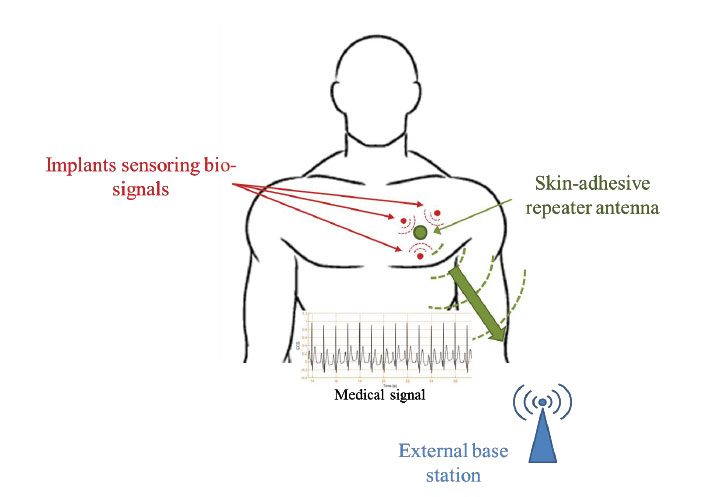
- We assess the viability of having a dual-band skin-attached repeater antenna for in- and off-body communication for the transmission of medical data in the context of Body Area Networks. It is the first time a single-port antenna with both ISM (2.4 GHz) and UWB (4-10.6 GHz) operation bands is proposed for BAN applications.
- The study demonstrates the implementation of a skin-adhesive antenna and the feasibility of both in- and off-body communication links with a passive implant and an external base station, respectively.
- The proposed repeater antenna can be used in continuous monitoring applications, in order to detect health conditions in advance.
- We study for the first time the possibility of having a skin-attached repeater antenna with capability of establishing an in-body communication link with multiple implants and further relay the collected information through a UWB off-body link, thus increasing the off-body communication range and also diminishing the transmission time.
- The present paper includes the complete study of the in- and off-body links not only in the time-domain, in which we transmit a QPSK-modulated ECG signal, but also in the frequency-domain, where we assess the power transfer and link budget.
2017 APS Special Issue
Dual-Band Skin-Adhesive Repeater Antenna for Continuous Body Signals Monitoring
Joao Felicio, Carlos A. Fernandes, Jorge R. Costa
Abstract:We present a 35-mm diameter skin-adhesive antenna intended to operate as a gateway to relay the low power signals from a sensor implanted in the body to an external base station (BS).

- A novel approach able to deeply optimize clinical treatments of magnetic hyperthermia with nanoparticles.
- Innovative determination of the complex magnetic permeability of magnetic colloidal fluid by simply using in
vitro SAR measurements. - A rapid, alternative and broadband approach for determining the electromagnetic properties of magnetic
nanoparticles. - Possibility to test the efficiency of nanoparticles in a tissue-like environment: optimized and realistic
treatment planning for magnetic hyperthermia.
Original Research Paper
A Novel Approach for Determining the Electromagnetic Properties of a Colloidal Fluid with Magnetic Nanoparticles for Hyperthermia Applications
Danilo Brizi, Nunzia Fontana, Giulio Giovannetti, Alessandra Flori, Luca Menichetti,Saer Doumett, Giovanni Baldi, Agostino Monorchio,
Abstract:The paper presents a general analytical method for evaluating the magnetic properties of colloidal fluid with magnetic nanoparticles and agar through in vitro Specific Absorption Rate (SAR) measurements.

- We have used our microwave-imaging system in order to successfully reconstruct the Supelec-breast phantom and evaluate its usability.
- Our system is capable of recover images of the studied phantoms, although the interior of the Supelec phantom is challenging due to the high plastic content.
- The studied phantom was developed to be a tool within the microwave-imaging community.
- These are the first published reconstructed images of the Supelec phantom and shows that the phantom is a useful tool when developing a microwave-imaging system.
- It is also shown that our system is capable of reconstructing an image of the phantom without utilizing any a priori information of the phantom, which is unique in the microwave-imaging community.
IMBIOC 2017 Special Issue
A First Evaluation of the Realistic Supelec-Breast Phantom
Tomas Rydholm, Andreas Fhager, Mikael Persson
Abstract:A microwave tomographic system is used to evaluate the realistic breast phantom developed at the Supelec institute.

- To achieve increased resolution and specificity in microwave imaging reconstruction a soft prior regularization can be used from pre-microwave imaging MRI performed as part of standard clinical care for breast cancer.
- The targeted application is breast cancer imaging for neoadjuvant chemotherapy monitoring.
- Utilizing a limited set of skin fiducial markers numerical algorithms have been developed to warp the original breast MR images into a geometry closely resembling that for when the breast is pendant in the microwave system.
- Leveraging magnetic resonance images acquired prior to neoadjuvant chemotherapy a soft prior regularization of the microwave imaging can be performed to increase resolution and specificity thus potentially improving the ability of the oncologist to predict chemotherapy effectiveness.
IMBIOC 2017 Special Issue
Image Registration for Microwave Tomography of the Breast Using Priors from Non-Simultaneous Previous Magnetic Resonance Imaging
Gregory Boverman, Cynthia Davis, Shireen Geimer
Abstract:Microwave imaging is a low-cost imaging method that has shown promise for breast imaging and, in particular, neoadjuvant chemotherapy monitoring.

- Electromagnetic sensing system for dielectric characterization of liquid samples and individual
biological cells. - Simultaneous quantitative evaluation of dielectric permittivity at two different frequencies.
- Vision: non-destructive characterization of cell cultures in a culture medium prior or parallel to
medical treatment. - Highly sensitive characterization of picoliter sample volumes.
- Biocompatible and disposable microfluidic chip for handling of cell suspensions and positioning
of individual cells.
Original Research Paper
Resonant Microwave Sensors for Picoliter Liquid Characterization and Non-Destructive Detection of Single Biological Cells
Nora Meyne, Grischa Fuge, An-Ping Zeng
Abstract:The non-destructive characterization of small liquid volumes as well as the detection of single biological cells can lead to new insights for biomedical and biotechnological applications.

- The level of MRI coil detuning and blocking is strongly dependent on the resistance of the control device which can change due to device heating
- More robust circuitry and understanding of both the electrical and thermal operation of the devices (and their interplay) will lead to more reliable MR instrumentation.
- The targeted medical application is MRI receive coil detuning/blocking circuits to protect the patient and the sensitive electronics in the presence of the high power slice-select pulse.
- The ability to model the control device’s thermal characteristics will lead to improved understanding of circuit operation, aid in the selection of control device for the specific MR application, and will lead to more reliable MRI instrumentation.
IMBIOC 2017 Special Issue
Control Device Thermal Modeling in MRI Receive Coil Q-Spoiling Circuits
Robert H. Caverly, Savannah Benbrook
Abstract:Q-spoiling circuits for detuning receive coils during high power MRI slice-select pulses protect both sensitive electronics as well as the patient from undesired high energy signals and associated heating.

- In this work, the detectability of African trypanosome parasites through passive resonant thin film sensing is
examined for the first time, providing the basis for a novel approach to fast pathogen screening tests targeting
Human African Trypanosomiasis (HAT). - Cell-film sensitivity of asymmetric double-split rings is evaluated in simulation over different gap and film
configurations, using the material characterization presented in the original conference paper as a data basis. - Simulation results are verified using phantom material and actual trypanosome parasites in pure form, while
also examining the influence of varying dielectric contrast to dry cell buffer residue. - The observed significant and rapid detectability of pure trypanosome parasites as a bulk material using planar
resonators is a very important intermediate result on the way to a surface-functionalized parasite sensor, which
achieves high selectivity by use of RNA-based, highly affine and parasite-specific aptamer coatings. - In ongoing research, we hope to achieve a sensor design which can immediately detect parasite presence in a
barely pre-treated patient fluid sample based on the selection function of the aptamer, but possibly also by
spectroscopic recognition of the cell itself if an individual spectral feature can be found in future work.
IMBIOC 2017 Special Issue
Detection of African Trypanosomes using Asymmetric Double-Split Ring based THz Sensors
Mario Mueh, Matthias Maasch, Robert Knieb, H. Ulrich Goringer, Christian Damm
Abstract:A THz probe beam interrogates a sample slide ontaining an array of asymmetric double-split ring resonators loaded with African trypanosome cells in different media,

- An innovative multi-frequency hyperthermia treatment planning strategy addressing the limiting
clinical need represented by minimizing undesired heating is presented. - This multi-frequency planning strategy, mf-FOCO, based on a convex programming problem, ensure
a safe and efficient outcome of the treatment. - The targeted medical application is hyperthermia treatment planning.
- Preliminary results confirmed the possibility of counteracting undesired heating exploiting multifrequency
applicator while enforcing a patient-specific mask.
IMBIOC 2017 Special Issue
Multi-Frequency Constrained SAR Focusing For Patient Specific Hyperthermia Treatment
Gennaro G. Bellizzi, Lorenzo Crocco, Giada M. Battaglia, Tommaso Isernia
Abstract:In hyperthermia treatments, the possibility of generating a specific absorption rate distribution peaked into the tumor and bounded elsewhere represents the main clinical need.
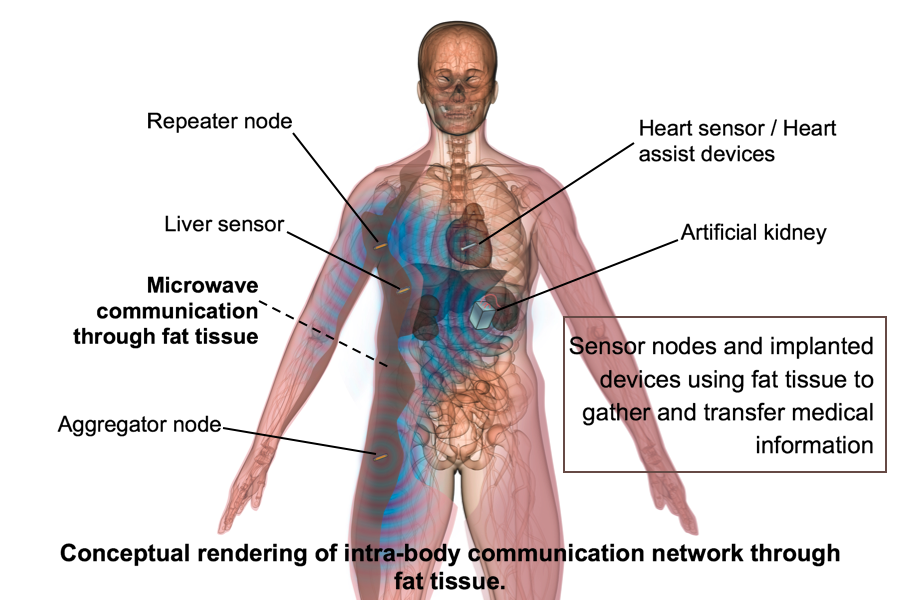
- We propose a novel channel for supporting high data rate microwave communication by using the fat tissue.
- For up to 10 cm long fat tissue channel, we were able to achieve approximately 96 % data packet reception
with a path loss of 1 dB and 2 dB at 10 mm in both phantom and ex-vivo environments, respectively. - This work can be used in body area network, sensors application, and man-machine interfaces.
- Microwave communication through fat tissues was not known before. This work was successfully able to
demonstrate data packet transmission through the porcine fat tissue. - Through this study, we were able to show that the transmission loss (dB) in the muscle layer is more than twofold
of the transmission loss (dB) through the fat layer.
IMBIOC 2017 Special Issue
Data Packet Transmission through Fat Tissue for Wireless Intra-Body Network
Noor Badariah Asan, Carlos Pérez Penichet, Syaiful Redzwan, Daniel Noreland,Emadeldeen Hassan, Anders Rydberg, Taco J. Blokhuis, Thiemo Voigt, Robin Augustine
Abstract:This work explores high data rate microwave communication through fat tissue in order to address the wide bandwidth requirements of intra-body area networks.

- For the first time, detailed cardiophysiological and metrological causes of the diversity of measured heartbeat curves by continuous wave radar systems are presented as well as the possibility to measure locally specific pulse wave curves called sphygmograms.
- The measurement spot on the human body, the cutoff frequencies of the applied band pass filter, the antenna characteristics as well as the distance between antenna and target contribute to the signal shape of the measured heartbeat curves.
- Radar based locally specific pulse wave detection enables novel, contactless, cardiophysiological investigations for medical diagnostics.
- The causes of the diversity of published heartbeat curves are researched by investigating the cardiovascular system and the metrological influences on the measured signal shapes. Hereby, it is shown that adjusted filter characteristics and an appropriate distance between antenna and target enable radar based measurements of locally specific and medically relevant sphygmograms.
- The presented measurements were verified by a laser sensor as gold standard and medically substantiated by cardiophysiological researchers.
IMBIOC 2017 Special Issue
Local Pulse Wave Detection using Continuous Wave Radar Systems
Christoph Will, Kilin Shi, Sven Schellenberger, Tobias Steigleder, Fabian Michler, Robert Weigel, Christoph Ostgathe, Alexander Koelpin
Abstract:The red boxes illustrate the cardiophysiological and metrological influences on the measurement signal which are researched in this paper.

- For the first time in literature, deep tissue implanted antenna radiation efficiency is accurately measured inside a tissue mimicking liquid phantom using a Reverberation Chamber (RC) technique.
- Although the radiation efficiency of a deep tissue implanted antenna can be extremely low (< 0.1%), this work shows how the RC technique can be used if care is taken to ensure that the feed cable does not significantly radiate, for example by routing the cable through the bulk of the tissue mimicking phantom.
- This work is relevant to any biomedical application or solution that is based on active implants that employ UHF radio communications or power transfer since in-situ radiation efficiency is the key design metric for such antennas and is core to the system link budget.
- In addition to establishing a method of efficiently and effectively measure implant antenna efficiency, something that is avoided in most published research papers, this work shows that significant errors are introduced when the antenna under test feed cable is not deeply inserted in the tissue phantom.
To isolate the effect of the cable, different experimental setups were arranged, tested and analyzed where the position of the antenna changes with respect to the boundaries of the tissue-mimicking liquid phantom and to ensure the generality of our results, we conducted our experiments using a range of antennas with differing radiation characteristics.
Original Research Paper
Measurement of Deep Tissue Implanted Antenna Efficiency Using a Reverberation Chamber
Yomna El-Saboni, Matthew K. Magill, Gareth A. Conway, Simon L. Cotton, William G. Scanlon
Abstract:We investigate the use of a reverberation chamber for the experimental measurement of deep implant antenna radiation efficiency.

- We propose a simplified method based on surrogate modeling to assess the day-to-day global RF-EMF exposure of a population, which offers us a fast analysis of the evolution of wireless networks in view of EMF exposure.
- The RF exposure from mobile phones accounts for only 25% of global exposure, resulting from the high speed of uplink throughput in 4G, considering a mobile usage in data service used in front of the chest.
- This is the first study to characterize the uncertainty of day-to-day RF-EMF exposure of a population taking into account the variability linked to geographical environment specificities, communication traffic, EM radiations originating from personal wireless devices and from base stations as well as data rates; the novelty of this paper is also in its sensitivity analysis in order to assess the influence of these parameters on RF-EMF exposure.
- Results show that the 4G-induced RF-EMF exposure of a population follows a Generalized Extreme Value distribution with an average value of 1.19x10-7 W/kg, which is far below the international standard limits.
Original Research Paper
Simplified Assessment Method for Population RF Exposure Induced by a 4G Network
Yuanyuan Huang, Joe Wiart
Abstract:This article presents a simplified method, based on surrogate modeling, to evaluate the day-to-day global population exposure to radio frequency (RF) electromagnetic fields (EMF) induced by a 4G network,

- This paper provides a critical and analytical synopsis and assessment of the current status of research on cancers in rats
exposed lifelong to RF and microwave radiation. - There were 18 carcinogenic and co-carcinogenic investigations in rats exposed to RF and microwave radiation
from a diverse range of mobile and wireless communication devices and systems. - A recent U.S. government announcement that rat cancer results from its large RF animal health risk study is
an important occurrence. - The impact of RF exposure on carcinogenesis remains tentative. The discrepancies continue to pose
uncertainty in assessing public health hazards from RF radiation. - The question of whether RF exposure from wireless and mobile devices and systems poses a health risk would
likely remain equivocal and controversial for some time to come.
Review Paper
Cancer Occurrences in Laboratory Rats from Exposure to RF and Microwave Radiation
James C. Lin
Abstract:Health effects of radio frequency (RF) and microwave radiation have been a subject of scientific inquiry and public interest of late because of widespread global usage of mobile communication devices by billions of people everywhere.

- The innovative approach of stochastic dosimetry was used to assess the fetal exposure to a 4G LTE tablet in
realistic scenarios - Fetal exposure in terms of Specific Absorption Rate (SAR) was within the limits of the ICNIRP 1998 general
public Guidelines in all the scenarios, and the position of the tablet was very influential on the exposure. - The targeted biological application is the evaluation of the level of fetal exposure to new generation devices
RF-EMF, taking into account the variability of realistic exposure scenarios. - This work expands the knowledge of the fetal exposure to RF-EMF, obtaining a complete description of the
level of exposure in all the possible positions of the tablet. - Stochastic dosimetry was confirmed to be a powerful tool to evaluate the influence of the variation of the
input parameters in a realistic exposure scenario
Original Research Paper
Assessment of Fetal Exposure to 4G LTE Tablet in Realistic Scenarios: Effect of Position, Gestational Age and Frequency
Emma Chiaramello, Marta Parazzini, Serena Fiocchi, Paolo Ravazzani and Joe Wiart
Abstract:The continuous development of Radio-Frequency (RF) devices used in every-day life highlights the need of conducting appropriate health risk assessment due to Radio- Frequency Electromagnetic Fields (RF-EMF) exposure, especially for the fetal exposure in realistic scenarios.

- Short-range radars can be effectively applied in biomedical/healthcare environments, such as monitoring of
vital signs or detection of fall incidents of elderly at home. - Advanced short-range multi-mode radars have improved features for biomedical/healthcare applications.
Applications of advanced short-range multi-mode radars range from monitoring of vital signs to humanaware
localization scenarios. - The proposed hybridizations of the Doppler and frequency-modulated continuous-wave (FMCW) operation
modes leads to minimum-hardware radar architectures with advanced features for biomedical/healthcare
applications. - Theoretical analyses and simulations for the Doppler-plus-FMCW, multi-FMCW, and tone-ranging-inspired
radar architectures are provided
Review Paper
Review on Advanced Short-Range Multi-Mode Continuous-Wave Radar Architectures for Healthcare Applications
José-María Muñoz-Ferreras, Zhengyu Peng, Roberto Gómez-García and Changzhi Li
Abstract:Short-range radar systems are non-contact devices that are attracting much attention from the RF/microwave community. In particular, they are starting to be applied in healthcare contexts,



